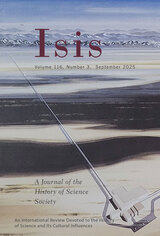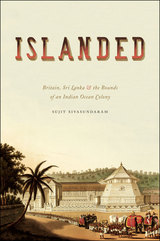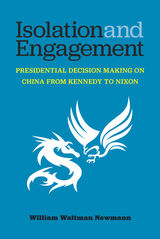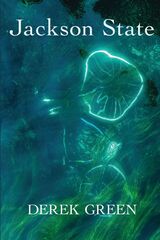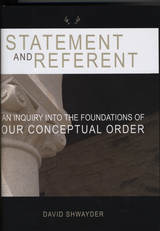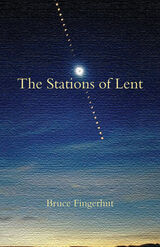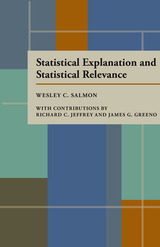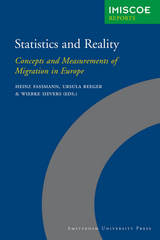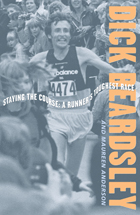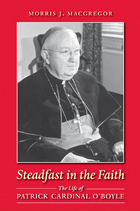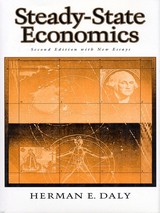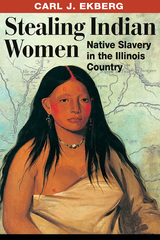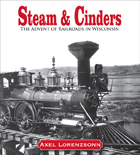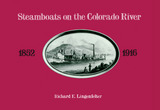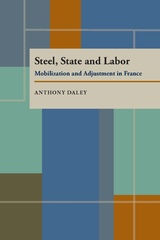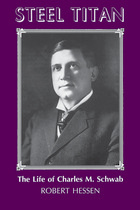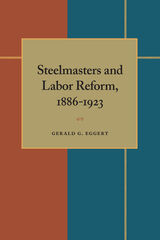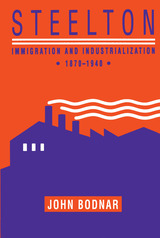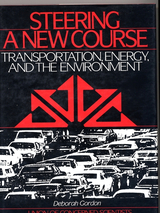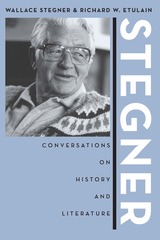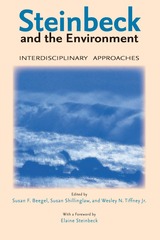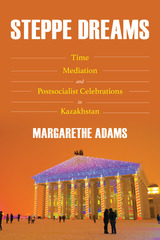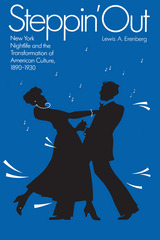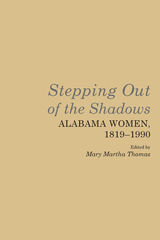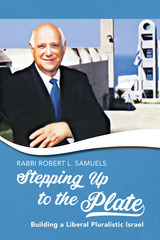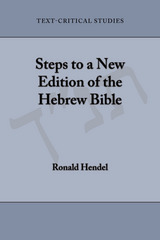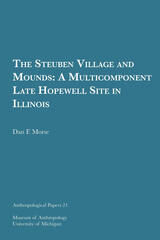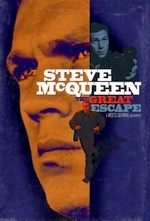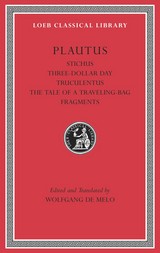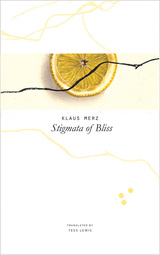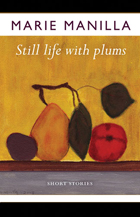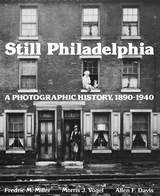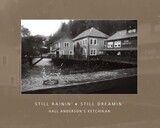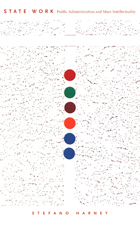 State Work: Public Administration and Mass Intellectuality
Stefano Harney
Duke University Press, 2002 An innovative contribution to political theory, State Work examines the labor of government workers in North America. Arguing that this work needs to be theorized precisely because it is vital to the creation and persistence of the state, Stefano Harney draws on thinking from public administration and organizational sociology, as well as poststructuralist theory and performance studies, to launch a cultural studies of the state. Countering conceptions of the government and its employees as remote and inflexible, Harney uses the theory of mass intellectuality developed by Italian worker-theorists to illuminate the potential for genuine political progress inherent within state work.
State Work begins with an ethnographic account of Harney’s work as a midlevel manager within an Ontario government initiative charged with leading the province’s efforts to combat racism. Through readings of material such as The X-Files and Law & Order, Harney then reviews how popular images of the state and government labor are formed within American culture and how these ideas shape everyday life. He highlights the mutually dependent roles played in state work by the citizenry and civil servants. Using as case studies Al Gore’s National Partnership for Reinventing Government and a community-policing project in New York City, Harney also critiques public management literature and performance measurement theories. He concludes his study with a look at the motivations of state workers.
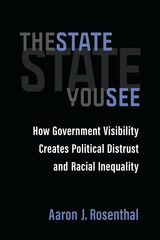 The State You See: How Government Visibility Creates Political Distrust and Racial Inequality
Aaron J. Rosenthal
University of Michigan Press, 2023 The State You See uncovers a racial gap in the way the American government appears in people’s lives. It makes it clear that public policy changes over the last fifty years have driven all Americans to distrust the government that they see in their lives, even though Americans of different races are not seeing the same kind of government. For white people, these policy changes have involved a rising number of generous benefits submerged within America’s tax code, which taken together cost the government more than Social Security and Medicare combined. Political attention focused on this has helped make welfare and taxes more visible representations of government for white Americans. As a result, white people are left with the misperception that government does nothing for them, apart from take their tax money to spend on welfare. Distrust of government is the result. For people of color, distrust is also rampant but for different reasons. Over the last fifty years, America has witnessed increasingly overbearing policing and swelling incarceration numbers. These changes have disproportionately impacted communities of color, helping to make the criminal legal system a unique visible manifestation of government in these communities. While distrust of government emerges in both cases, these different roots lead to different consequences. White people are mobilized into politics by their distrust, feeling that they must speak up in order to reclaim their misspent tax dollars. In contrast, people of color are pushed away from government due to a belief that engaging in American elections will yield the same kind of unresponsiveness and violence that comes from interactions with the police. The result is a perpetuation of the same kind of racial inequality that has always been present in American democracy. The State You See is essential reading for anyone interested in understanding how the American government engages in subtle forms of discrimination and how it continues to uphold racial inequality in the present day.
 State-building: A Comparative Study of Ukraine, Lithuania, Belarus, and Russia
Verena Fritz
Central European University Press, 2007 Looks at the process of state-building in Ukraine, Lithuania, Belarus, and Russia from a political economy and institutional perspective. Weak and distorted state capacity has come to be widely recognized as a key obstacle to successful transformation—including economic modernization and growth as well as the consolidation of democracy. However, so far little systematic research has been carried out on state capacity per se and on how to explain its development. The book provides new insights in considering the evolution of Ukraine since 1992, offering an in-depth view of institutional development in crucial areas and thus tracing the process of state-building. It draws comparisons with developments in Belarus, Lithuania, and Russia (based on field research). To capture the process of state-building empirically, focuses on the extraction and expenditure systems which are a central pillar of state capacity and also a central link between citizens and the state. The book also sheds light on how Ukraine’s potential ‘second transition’ currently under way will have an impact on its institutional system.
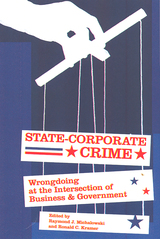 State-Corporate Crime: Wrongdoing at the Intersection of Business and Government
Michalowski, Raymond J
Rutgers University Press, 2006 Enron, Haliburton, ExxonValdez, "shock and awe"-their mere mention brings forth images of scandal, collusion, fraud, and human and environmental destruction. While great power and great crimes have always been linked, media exposure in recent decades has brought increased attention to the devious exploits of economic and political elites.
Despite growing attention to crimes by those in positions of trust, however, violations in business and similar wrongdoing in government are still often treated as fundamentally separate problems. In State-Corporate Crime, Raymond J. Michalowski and Ronald C. Kramer bring together fifteen essays to show that those in positions of political and economic power frequently operate in collaboration, and are often all too willing to sacrifice the well-being of the many for the private profit and political advantage of the few.
Drawing on case studies including the explosion of the space shuttle Challenger, Ford Explorer rollovers, the crash of Valujet flight 592, nuclear weapons production, and war profiteering, the essays bear frank witness to those who have suffered, those who have died, and those who have contributed to the greatest human and environmental devastations of our time. This book is a much needed reminder that the most serious threats to public health, security, and safety are not those petty crimes that appear nightly on local news broadcasts, but rather are those that result from corruption among the wealthiest and most powerful members of society.
 Statecraft And Stagecraft: American Political Life in the Age of Personality, Second Edition
Robert Schmuhl
University of Notre Dame Press, 1992 With a new Foreword from Robert Schmuhl
In the second edition of Statecraft and Stagecraft, Robert Schmuhl includes a chapter on the Persian Gulf War and the 1992 presidential campaign to his provocative exploration of the involvement of the media in our public life.
“Schmuhl . . . describes how the telegenic presidency of Ronald Reagan changed the American political scene. . . . It documents the sad way in which the electronic age, which is enhanced by smaller cameras and more sophisticated satellite equipment every year, is thinning out whatever substance was left in politics. But Schmuhl is neither preachy nor alarmist. His style is beautifully clear and enlightening.” —New York Daily News
“Schmuhl writes in an interesting, entertaining style. His book needs to be read—especially by politicians.” —Choice
“In a short, accessible and entertaining sequence of essays, Schmuhl . . . deals with the interplay between politics and modern communication, between substance and image.” —Chicago Tribune
“On the mysterious art of modern presidential leadership, Robert Schmuhl’s Statecraft and Stagecraft truly brims with unconventional wisdom. Any politician who wants to climb to the White House, and once there to lead the nation, should first read Statecraft and Stagecraft. In the public theater, which is contemporary American presidential politics, Schmuhl forcefully reminds those of us with press passes that we are not forgiven. He makes the political press confront the role we now play and the responsibility we cannot escape.” —Mark Shields, syndicated columnist and television commentator
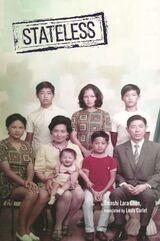 Stateless
Tienshi Lara Chen
National University of Singapore Press, 2023 A captivating auto-ethnography and study of statelessness.
"In the springtime of the year that I was twenty-one, I found myself stuck at the border between two familiar countries, unable to enter either. I had never felt my statelessness so keenly.”
Japan’s 1971 termination of diplomatic ties with the Republic of China left 9,200 Chinese residents stateless. Tienshi “Lara” Chen was one of them, born to Chinese parents in Yokohama’s Chinatown. What does it mean to be stateless? What does it feel like?
To answer, Stateless presents Chen’s engaging autobiographical account of her bi-cultural upbringing and Japanese education. She reflects on her experience of statelessness eventually led her into a career spanning academia and activism, and she analyzes the contradictions inherent in the concepts of nationality, nation-state, and citizenship, in a world where individual nationality, identity, and experience are increasingly complex. She concludes that the current system of regulating individuals with citizenship is unworkable in the long run.
Blending life writing, auto-ethnography, and a study of stateless communities around Asia, this book unpacks the idea of citizenship by showing the hidden everyday narratives and lived experiences of stateless persons who have no legal ties to any nation-state. Originally published in Japanese, this adapted and updated English edition critically engages with questions of borders, mobility, belonging, and identity.
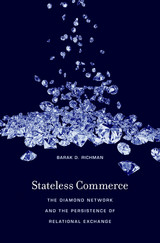 Stateless Commerce: The Diamond Network and the Persistence of Relational Exchange
Barak D. Richman
Harvard University Press, 2017 In Stateless Commerce, Barak Richman uses the colorful case study of the diamond industry to explore how ethnic trading networks operate and why they persist in the twenty-first century. How, for example, does the 47th Street diamond district in midtown Manhattan—surrounded by skyscrapers and sophisticated financial institutions—continue to thrive as an ethnic marketplace that operates like a traditional bazaar? Conventional models of economic and technological progress suggest that such primitive commercial networks would be displaced by new trading paradigms, yet in the heart of New York City the old world persists. Richman’s explanation is deceptively simple. Far from being an anachronism, 47th Street’s ethnic enclave is an adaptive response to the unique pressures of the diamond industry.
Ethnic trading networks survive because they better fulfill many functions usually performed by state institutions. While the modern world rests heavily on lawyers, courts, and state coercion, ethnic merchants regularly sell goods and services by relying solely on familiarity, trust, and community enforcement—what economists call “relational exchange.” These commercial networks insulate themselves from the outside world because the outside world cannot provide those assurances.
Extending the framework of transactional cost and organizational economics, Stateless Commerce draws on rare insider interviews to explain why personal exchange succeeds, even as most global trade succumbs to the forces of modernization, and what it reveals about the limitations of the modern state in governing the economy.
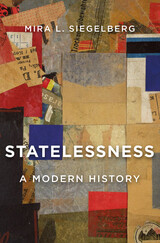 Statelessness: A Modern History
Mira L. Siegelberg
Harvard University Press, 2019 The story of how a much-contested legal category—statelessness—transformed the international legal order and redefined the relationship between states and their citizens.
Two world wars left millions stranded in Europe. The collapse of empires and the rise of independent states in the twentieth century produced an unprecedented number of people without national belonging and with nowhere to go. Mira Siegelberg’s innovative history weaves together ideas about law and politics, rights and citizenship, with the intimate plight of stateless persons, to explore how and why the problem of statelessness compelled a new understanding of the international order in the twentieth century and beyond.
In the years following the First World War, the legal category of statelessness generated novel visions of cosmopolitan political and legal organization and challenged efforts to limit the boundaries of national membership and international authority. Yet, as Siegelberg shows, the emergence of mass statelessness ultimately gave rise to the rights regime created after World War II, which empowered the territorial state as the fundamental source of protection and rights, against alternative political configurations.
Today we live with the results: more than twelve million people are stateless and millions more belong to categories of recent invention, including refugees and asylum seekers. By uncovering the ideological origins of the international agreements that define categories of citizenship and non-citizenship, Statelessness better equips us to confront current dilemmas of political organization and authority at the global level.
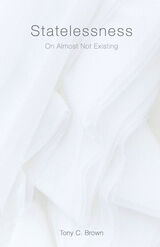 Statelessness: On Almost Not Existing
Tony C. Brown
University of Minnesota Press, 2022 A pathbreaking new genealogy of statelessness
Just as the modern state and the citizenship associated with it are commonly thought of as a European invention, so too is citizenship’s negation in the form of twentieth-century diaspora and statelessness. Statelessness sets forth a new genealogy, suggesting that Europe first encountered mass statelessness neither inside its own borders nor during the twentieth century, as Hannah Arendt so influentially claimed, but outside of itself—in the New World, several hundred years earlier. Through close readings of political philosophers from Hobbes to Rousseau to Kant, Tony C. Brown argues that statelessness became a central problem for political thought early on, with far-reaching implications for thinking both on the state and on being human. What Europeans thought they saw among the “savages” of the Americas was life without political order, life less than human. Lacking almost everything those deemed clearly human had achieved, the stateless existed in a radically precarious, almost inhuman privation. And yet this existence also raised the unsettling possibility that state-based existence may not be inevitable, necessary, or even ideal. This possibility, as Brown shows, prompts the response—as defensive as it was aggressive—that we call Enlightenment political philosophy, which arguably still orders much thinking on being stateless today, including our discourses concerning migrants and Indigenous peoples.
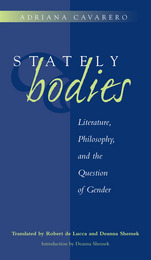 Stately Bodies: Literature, Philosophy, and the Question of Gender
Adriana Cavarero
University of Michigan Press, 2002 Stately Bodies explores the curious prevalence of bodily metaphors in conceptions of noncorporeal institutions: the state, the law, and politics itself. The book builds on work from Adriana Cavarero's well-received study, In Spite of Plato: A Feminist Rewriting of Ancient Philosophy. In that work Cavarero--as political theorist, philosopher, classicist, and close reader--examines literary and philosophical texts from Greek antiquity to modern to reveal the paradox that characterizes notions of the "body politic" in Western political philosophy.
She examines bodily metaphor in political discourse and in fictional depictions of politics, including Sophocles' Antigone, Plato's Timaeus, Livy, John of Salisbury, Shakespeare's Hamlet, and Hobbes' Leviathan. An appendix explores two texts by women that disrupt these notions: Maria Zambrano's Tomb of Antigone and Ingeborg Bachmann's Undine Goes.
Cavarero exposes the problematic nature of the mind/body dualism that has been essential in Western thought. Her insight that the expelled, depoliticized body is a female one becomes an instrument for decoding many paradoxical tropes of the political body. For instance, Cavarero revisits Antigone as the tragedy in which a body that is displaced, bleeding, and matrilinear allows the construction of a political order where misogynous rationality rules. Throughout the book, Cavarero argues that women have been cast by male thinkers into the realm of the corporeal as nonpolitical, and also suggests that this nonpolitical position is also a source of knowledge and power, that politics is a masculine pursuit that should not be admired or envied.
Adriana Cavarero is Professor of Philosophy, University of Verona, and frequently is Visiting Professor. New York University. Her books Relating Narratives: Storytelling and Selfhood and In Spite of Plato: A Feminist Rewriting of Ancient Philosophy were published by Routledge.
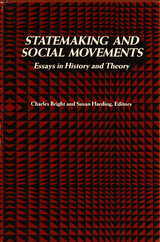 Statemaking and Social Movements
Charles Bright and Susan Harding, Editors
University of Michigan Press, 1984 Statemaking does not end once states emerge but is a continuous process, argue the contributors to this volume. In their view, states are not static structures that “act upon" society, nor are states simple reflections of economic relations; states are instead highly dynamic structures that are constantly built up, dismantled, and transformed by complex interplays of political, social, and economic processes. This collection of original essays by leading scholars in the fields of history, anthropology, sociology, and economics argues for historically specific theories of states and politics in place of ahistorical models. Case studies range in scope from Aztec Mexico and feudal Europe to Nazi Germany and contemporary America. What emerges from this ground-breaking interdisciplinary dialogue is a historically sensitive way of thinking about states, politics, and social movements and the transformative relationship between states and societies.
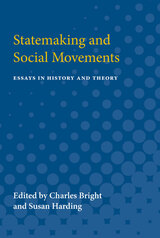 Statemaking and Social Movements: Essays in History and Theory
Edited by Charles Bright and Susan Harding
University of Michigan Press, 1984 Statemaking does not end once states emerge but is a continuous process, argue the contributors to this volume. In their view, states are not static structures that “act upon" society, nor are states simple reflections of economic relations; states are instead highly dynamic structures that are constantly built up, dismantled, and transformed by complex interplays of political, social, and economic processes. This collection of original essays by leading scholars in the fields of history, anthropology, sociology, and economics argues for historically specific theories of states and politics in place of ahistorical models. Case studies range in scope from Aztec Mexico and feudal Europe to Nazi Germany and contemporary America. What emerges from this ground-breaking interdisciplinary dialogue is a historically sensitive way of thinking about states, politics, and social movements and the transformative relationship between states and societies.
Statement and Referent: An Inquiry into the Foundations of our Conceptual Order
David Shwayder
CSLI, 2008 Plato’s Parmenides and Aristotle’s Metaphysics initiated the discussion of the “First Philosophy” in the Western canon. Here, David Shwayder continues this debate by considering statements as the fundamental bearers of truth-values. Systematically moving from action to utterance, Shwayder argues that the category of “bodies” is fundamental to the human scheme of conceptualization and that if we had no capacity to refer to bodies then we would be unable to address referents from other categories.
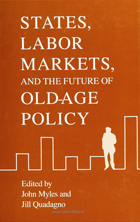 States And Labor Markets
edited by John Myles and Jill Quadagno
Temple University Press, 1991 During the last decade worries about population aging, increases in national expenditures for the elderly, and the trend toward early retirement have aroused new concerns about the future of old-age security. Myles and Quadagno have assembled a collection of original essays that examine how different countries have responded to these issues. The essays in Part I explore the recent politics of old age in Great Britain, Canada, Poland, Scandinavia, West Germany, France, the Netherlands, Japan, and Australia. They demonstrate that while, during the Reagan and Thatcher era, the United States and Great Britain forged debates about old-age policies around a neo-conservative agenda, other countries facing similar matters followed different paths. In Part II, the authors examine how transformations in labor- market practices are gradually altering the status of older workers and with it our conventional understanding of old age. The reconstruction of the international division of labor, the shift of employment from goods to services, and the adoption of new, knowledge-intensive technologies are changing the economic and political basis of the organization of old age. As we move toward the next century, these essays provide a starting point for a new generation of studies in the political economy of aging.
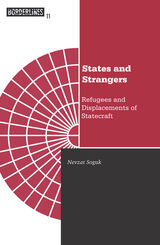 States And Strangers: Refugees And Displacements Of Statecraft
Nevzat Soguk
University of Minnesota Press, 1999 Looks at the role of refugees in international relations. Refugees may flee their country, but can they escape the confining, defining logic of all the voices that speak for them? As refugees multiply in our troubled world, more and more scholars, studies, and pundits focus on their plight. Most of these analyses, says Nevzat Soguk, start from a model that shares the assumptions manifested in traditional definitions of citizen, nation, and state. Within this hierarchy, he argues, a refugee has no place to go. States and Strangers questions this paradigm, particularly its vision of the territoriality of life. A radical retheorization of the refugee from a Foucauldian perspective, the book views the international refugee regime not as a simple tertiary response, arising from the practice of states regarding refugee problems, but as itself an aspect of the regimentation of statecraft. The attendant discourse negates the multiplicity of refugee events and experience; by assigning the refugee an identity-someone without the citizen’s grounding within a territorial space-the state renders him voiceless and deprives him of representation and protection. States and Strangers asks how this happens and how it can be avoided.Using historical, archival research and interpretive strategies drawn from a genealogical approach, Soguk considers the role of the refugee in the emergence and maintenance of the sovereign territorial state from the late seventeenth century to contemporary times. ISBN 0-8166-3166-2 Cloth/jacket £00.00 $62.95x340 Pages 5 7/8 x 9 MarchBorderlines Series, volume 11Translation inquiries: University of Minnesota Press
 States at War: A Reference Guide for Michigan in the Civil War
Richard F. Miller
University of Michigan Press, 2020 Unlike most books about the Civil War, which address individual battles or the war at the national level, States at War: A Reference Guide for Michigan in the Civil War chronicles the actions of an individual state government and its citizenry coping with the War and its ramifications, from transformed race relations and gender roles, to the suspension of habeas corpus, to the deaths of over 10,000 Michigan fathers, husbands, sons, and brothers who had been in action. The book compiles primary source material—including official reports, legislative journals, executive speeches, special orders, and regional newspapers—to provide an exhaustive record of the important roles Michigan and Michiganders had in the War. Though not burdened by marching armies or military occupation like some states to the southeast, Michigan nevertheless had a fascinating Civil War experience that was filled with acute economic anxieties, intense political divisions, and vital contributions on the battlefield. This comprehensive volume will be the essential starting point for all future research into Michigan’s Civil War-era history.
 States at War, Volume 1: A Reference Guide for Connecticut, Maine, Massachusetts, New Hampshire, Rhode Island, and Vermont in the Civil War
Edited by Richard F. Miller
University Press of New England, 2013 While many Civil War reference books exist, there is no single compendium that contains important details about the combatant states (and territories) that Civil War researchers can readily access for their work. People looking for information about the organization, activities, economies, demographics, and prominent personalities of Civil War states and state governments must assemble data from a variety of sources, and many key sources remain unavailable online. This volume, the first of six, provides a crucial reference book for Civil War scholars and historians, professional or amateur, seeking information about individual states or groups of states. Its principal sources include the Official Records, state adjutant-general reports, legislative journals, state and federal legislation, federal and state executive speeches and proclamations, and the general and special orders issued by the military authorities of both governments. Designed and organized for easy use, this book can be read in two ways: by individual state, with each chapter offering a stand-alone skeletal history of an individual state’s war years, or across states, comparing reactions to the same event or solutions to the same problems.
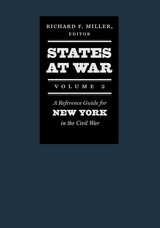 States at War, Volume 2: A Reference Guide for New York in the Civil War
Edited by Richard F. Miller
University Press of New England, 2014 While many Civil War reference books exist, there is no single compendium that contains important details about the combatant states (and territories) that Civil War researchers can readily access for their work. People looking for information about the organizations, activities, economies, demographics, and prominent personalities of Civil War states and state governments must assemble data from a variety of sources, with many key sources remaining unavailable online. This volume provides a crucial reference book for Civil War scholars and historians, professional or amateur, seeking information about New York during the war. Its principal sources include the Official Records, state adjutant general reports, legislative journals, state and federal legislation, executive speeches and proclamations on the federal and state levels, and the general and special orders issued by the military authorities of both governments, North and South. Designed and organized for easy use, this book can be read in two ways: by individual state, with each chapter offering a stand-alone history of an individual state’s war years; or across states, comparing reactions to the same event or solutions to the same problems.
 States at War, Volume 3: A Reference Guide for Pennsylvania in the Civil War
Edited by Richard F. Miller
University Press of New England, 2014 While many Civil War reference books exist, there is no single compendium that contains important details about the combatant states (and territories) that Civil War researchers can readily access for their work. People looking for information about the organizations, activities, economies, demographics, and prominent personalities of Civil War states and state governments must assemble data from a variety of sources, with many key sources remaining unavailable online. This volume provides a crucial reference book for Civil War scholars and historians, professional or amateur, seeking information about Pennsylvania during the war. Its principal sources include the Official Records, state adjutant general reports, legislative journals, state and federal legislation, executive speeches and proclamations on the federal and state levels, and the general and special orders issued by the military authorities of both governments, North and South. Designed and organized for easy use, this book can be read in two ways: by individual state, with each chapter offering a stand-alone history of an individual state’s war years; or across states, comparing reactions to the same event or solutions to the same problems.
 States at War, Volume 4: A Reference Guide for Delaware, Maryland, and New Jersey in the Civil War
Edited by Richard F. Miller
University Press of New England, 2015 While many Civil War reference books exist, there is no single compendium that contains important details about the combatant states (and territories) that Civil War researchers can readily access for their work. People looking for information about the organizations, activities, economies, demographics, and prominent personalities of Civil War States and state governments must assemble data from a variety of sources, with many key sources remaining unavailable online. This crucial reference book, the fourth in the States at War series, provides vital information on the organization, activities, economies, demographics, and prominent personalities of Delaware, Maryland, and New Jersey during the Civil War. Its principal sources include the Official Records, state adjutant-general reports, legislative journals, state and federal legislation, federal and state executive speeches and proclamations, and the general and special orders issued by the military authorities of both governments, North and South. Designed and organized for easy use by professional historians and amateurs, this book can be read in two ways: by individual state, with each chapter offering a stand-alone history of an individual state’s war years; or across states, comparing reactions to the same event or solutions to the same problems.
 States at War, Volume 5: A Reference Guide for Ohio in the Civil War
Edited by Richard F. Miller
University Press of New England, 2015 While many Civil War reference books exist, there is no single compendium that contains important details about the combatant states (and territories) that Civil War researchers can readily access for their work. People looking for information about the organizations, activities, economies, demographics, and prominent personalities of Civil War States and state governments must assemble data from a variety of sources, with many key sources remaining unavailable online. This crucial reference book, the fifth in the States at War series, provides vital information on the organization, activities, economies, demographics, and prominent personalities of Ohio during the Civil War. Its principal sources include the Official Records, state adjutant-general reports, legislative journals, state and federal legislation, federal and state executive speeches and proclamations, and the general and special orders issued by the military authorities of both governments, North and South. Designed and organized for easy use by professional historians and amateurs, this book can be read in two ways: by individual state, with each chapter offering a stand-alone history of an individual state’s war years; or across states, comparing reactions to the same event or solutions to the same problems.
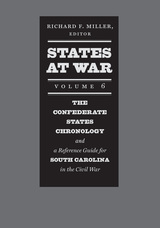 States at War, Volume 6: The Confederate States Chronology and a Reference Guide for South Carolina in the Civil War
Edited by Richard F. Miller
University Press of New England, 2018 Although many Civil War reference books exist, Civil War researchers have until now had no single compendium to consult on important details about the combatant states (and territories). This crucial reference work, the sixth in the States at War series, provides vital information on the organization, activities, economies, demographics, and laws of Civil War South Carolina. This volume also includes the Confederate States Chronology. Miller enlists multiple sources, including the statutes, Journals of Congress, departmental reports, general orders from Richmond and state legislatures, and others, to illustrate the rise and fall of the Confederacy. In chronological order, he presents the national laws intended to harness its manpower and resources for war, the harsh realities of foreign diplomacy, the blockade, and the costs of states’ rights governance, along with mounting dissent; the effects of massive debt financing, inflation, and loss of credit; and a growing raggedness within the ranks of its army. The chronology provides a factual framework for one of history’s greatest ironies: in the end, the war to preserve slavery could not be won while 35 percent of the population was enslaved.
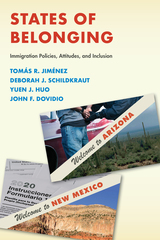 States of Belonging: Immigration Policies, Attitudes, and Inclusion
Tomas R. Jimenez
Russell Sage Foundation, 2021 Political turmoil surrounding immigration at the federal level and the inability of Congress to pass comprehensive immigration reform have provided an opening for state and local governments to become more active in setting their own immigration-related policies. States largely dictate the resources, institutions, and opportunities immigrants can access: who can get a driver’s license or attend a state university, what languages are spoken in schools and public offices, how law enforcement interacts with the public, and even what schools teach students about history. In States of Belonging, an interdisciplinary team of immigration experts – Tomás R. Jiménez, Deborah J. Schildkraut, Yuen J. Huo, and John F. Dovidio – explore the interconnections among immigration policies, attitudes about immigrants and immigration, and sense of belonging in two neighboring states – Arizona and New Mexico – with divergent approaches to welcoming newcomers.
Arizona and New Mexico are historically and demographically similar, but they differ in their immigration policies. Arizona has enacted unwelcoming policies towards immigrants, restricting the access of immigrants to state resources, social services, and public institutions. New Mexico is more welcoming, actively seeking to protect the rights of immigrants and extending access to state resources and institutions. The authors draw on an original survey and in-depth interviews of a cross-section of each state’s population to illustrate how these differing approaches affect the sense of belonging not only among immigrants, but among the U.S.-born as well.
Respondents in Arizona, regardless of whether they were foreign- or native-born or their ethno-racial background, agreed that the state is unwelcoming to immigrants, and they pointed to Arizona’s restrictive policies as the primary factor. The sense of rejection perceived by Latinos in Arizona, including the foreign-born and the U.S.-born, was profound. They felt the effects of administrative and symbolic exclusions of the state’s unwelcoming policies as they went about their daily lives.
New Mexico’s more welcoming approach had positive effects on the Latino immigrant population, and these policies contributed to an increased sense of belonging among U.S.-born Latinos and U.S.-born whites as well. The authors show that exposure to information about welcoming policies is associated with an improved sense of belonging across most population groups. They also find that the primary dividing line when it came to reactions to welcoming policies was political, not ethno-racial. Only self-identified Republicans, Latino as well as white, showed reduced feelings of belonging.
States of Belonging demonstrates that welcoming policies cultivate a greater sense of belonging for immigrants and other state citizens, suggesting that policies aimed at helping immigrants gain a social, economic, and political foothold in this country can pay a broad societal dividend.
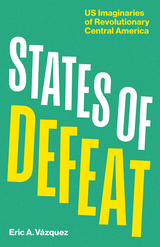 States of Defeat: US Imaginaries of Revolutionary Central America
Eric A. Vázquez
University of Minnesota Press, 2025 The cultural reverberations of Central America’s failed revolutions on US intellectual thought
The thwarted Central American revolutions during the latter half of the twentieth century marked a watershed in what had become a global anti-imperialist movement striving for a more egalitarian future. Examining a range of documentary, literary, and artistic works, States of Defeat looks at how left-wing intellectuals in the United States reckoned with the fallout from these defeats through wide-ranging creative expressions of indignation, cynicism, and grief. As he argues for the historical significance of Central America in the transition out of the Cold War, Eric A. Vázquez shows how the unfulfilled revolutionary ambitions in Nicaragua, El Salvador, and Guatemala prompted intellectuals in the United States to reexamine their desires for radical transformation. Analyzing novels, memoirs, anthropological writings, documentary film, and archival materials from the 1980s and 1990s, he demonstrates how these texts prefigured later anxieties about secrecy and securitization, the rise of nongovernmental organizational forms, and state failure. Examining the legacies of unfulfilled anti-imperialist political ideals and their implications for the global left in the twenty-first century, States of Defeat offers a renewed perspective on the function of Central America in the US imagination. Amid a resurgence of crackdowns on public protest and a rise in virulent anti-immigrant campaigns throughout the United States and globally, Vázquez presents urgent and valuable insights into the viability of political solidarity and state power.
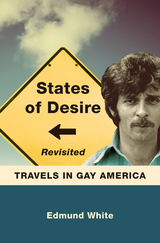 States of Desire Revisited: Travels in Gay America
Edmund White
University of Wisconsin Press, 2014 States of Desire Revisited looks back from the twenty-first century at a pivotal moment in the late 1970s: Gay Liberation was a new and flourishing movement of creative culture, political activism, and sexual freedom, just before the 1980s devastation of AIDS. Edmund White traveled America, recording impressions of gay individuals and communities that remain perceptive and captivating today. He noted politicos in D.C. working the system, in-fighting radicals in New York and San Francisco, butch guys in Houston and self-loathing but courteous gentlemen in Memphis, the "Fifties in Deep Freeze" in Kansas City, progressive thinkers with conservative style in Minneapolis and Portland, wealth and beauty in Los Angeles, and, in Santa Fe, a desert retreat for older gays and lesbians since the 1920s.
White frames those past travels with a brief, bracing review of gay America since the 1970s ("now we were all supposed to settle down with a partner in the suburbs and adopt a Korean daughter"), and a reflection on how Internet culture has diminished unique gay places and scenes but brought isolated individuals into a global GLBTQ community.
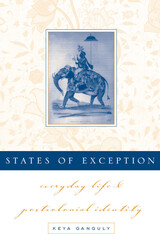 States Of Exception: Everyday Life and Postcolonial Identity
Keya Ganguly
University of Minnesota Press, 2001 Explores the conflict between capitalism and tradition in an immigrant community. A philosophical anthropology of everyday experience, this book is also a deeply informed and thought-provoking reflection on the work of cultural critique. States of Exception looks into a community of immigrants from India living in southern New Jersey—a group to whom the author, as a daughter of two of its members, enjoyed unprecedented access. Her position allows Keya Ganguly to approach the culture of a middle-class group (albeit one that is marginalized by racial prejudice), while the group’s relatively comfortable and protected style of life offers unusual insight into the concept of the everyday and the sense in which a seemingly commonplace existence can be understood as in crisis: a state of exception. Thus, Ganguly draws on the work of the Frankfurt School, particularly Walter Benjamin and Theodor Adorno, to explore the possibilities of a dialectical critique of the everyday—a state of exception informing ordinary yet crisis-ridden narratives of the self under late capitalism.
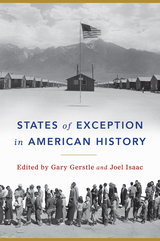 States of Exception in American History
Edited by Gary Gerstle and Joel Isaac
University of Chicago Press, 2020 States of Exception in American History brings to light the remarkable number of instances since the Founding in which the protections of the Constitution have been overridden, held in abeyance, or deliberately weakened for certain members of the polity. In the United States, derogations from the rule of law seem to have been a feature of—not a bug in—the constitutional system.
The first comprehensive account of the politics of exceptions and emergencies in the history of the United States, this book weaves together historical studies of moments and spaces of exception with conceptual analyses of emergency, the state of exception, sovereignty, and dictatorship. The Civil War, the Great Depression, and the Cold War figure prominently in the essays; so do Francis Lieber, Frederick Douglass, John Dewey, Clinton Rossiter, and others who explored whether it was possible for the United States to survive states of emergency without losing its democratic way. States of Exception combines political theory and the history of political thought with histories of race and political institutions. It is both inspired by and illuminating of the American experience with constitutional rule in the age of terror and Trump.
 States of Grace: Senegalese in Italy and the New European Immigration
Donald Martin Carter
University of Minnesota Press, 1997 States of Grace was first published in 1997. Minnesota Archive Editions uses digital technology to make long-unavailable books once again accessible, and are published unaltered from the original University of Minnesota Press editions. Leaving their depleted fields for better prospects, Senegalese immigrants have made their way to Italy in significant numbers. What this migration means, in the context of both the migratory traditions and conditions of Africa and the history and future of the European nation-state, is the subject of this timely and ambitious book. Focusing on Turin, the northern Italian point of entry for so many Senegalese, States of Grace chronicles the arrival and formation of a transnational African Islamic community in a largely Catholic Western European country, one that did not have immigrant legislation until 1991. With no colonial relation to Italy, the Senegalese represent the vanguard of population movements expanding outside of the arch of former colonial powers. Donald Martin Carter locates the Senegalese migration in the context of past African internal and international migration and of present crises in West African agriculture. He also shows how the Senegalese migration, constituting a "phenomenon" and catalyzing new immigration restrictions among European states, calls into question the European interstate system, the future of the nation-state, and the nature of its relationship with non-European states. Throughout Europe, protectionist immigration policies are often crafted in chauvinist and racist tones in which "migrants" is a euphemism for blacks, Arabs, and Asians. States of Grace uses Senegalese migration to demonstrate that racial conceptions are crucial to understanding the classifications of non-national "outside" and internal "other." The book is a bracing encounter with the ever-increasing cultural and ethnic heterogeneity that is the new and pressing reality of European society. Donald Martin Carter is visiting assistant professor of anthropology at Johns Hopkins University.
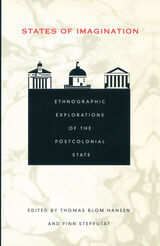 States of Imagination: Ethnographic Explorations of the Postcolonial State
Thomas Blom Hansen and Finn Stepputat, eds.
Duke University Press, 2001 The state has recently been rediscovered as an object of inquiry by a broad range of scholars. Reflecting the new vitality of the field of political anthropology, States of Imagination draws together the best of this recent critical thinking to explore the postcolonial state. Contributors focus on a variety of locations from Guatemala, Pakistan, and Peru to India and Ecuador; they study what the state looks like to those seeing it from the vantage points of rural schools, police departments, small villages, and the inside of the Truth and Reconciliation Commission. Focusing on the micropolitics of everyday state-making, the contributors examine the mythologies, paradoxes, and inconsistencies of the state through ethnographies of diverse postcolonial practices. They show how the authority of the state is constantly challenged from the local as well as the global and how growing demands to confer rights and recognition to ever more citizens, organizations, and institutions reveal a persistent myth of the state as a source of social order and an embodiment of popular sovereignty. Demonstrating the indispensable value of ethnographic work on the practices and the symbols of the state, States of Imagination showcases a range of studies and methods to provide insight into the diverse forms of the postcolonial state as an arena of both political and cultural struggle. This collection will interest students and scholars of anthropology, cultural studies, sociology, political science, and history. Contributors. Lars Buur, Mitchell Dean, Akhil Gupta, Thomas Blom Hansen, Steffen Jensen, Aletta J. Norval, David Nugent, Sarah Radcliffe, Rachel Sieder, Finn Stepputat, Martijn van Beek, Oskar Verkaaik, Fiona Wilson
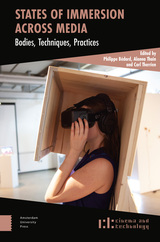 States of Immersion Across Media: Bodies, Techniques, Practices
Philippe Bédard
Amsterdam University Press, 2025 Immersion across media opens our perception to altered states of consciousness. Far from disconnecting us from our surroundings, these experiences reframe the ways we connect to the world and to others.
The constant onslaught of new technologies—each allegedly reaching closer to the holy grail of perfect immersion—provides a confusing yet stimulating playground for creators. Myriad new media forms redefine our immersive habits and patterns of gratification. Classical theories of immersion, focused on perceptual illusions or ideal flow states, cannot easily account for this confusing remix of audiovisual forms and practices.
In an age where the production of technologies and forms accelerates, States of Immersion Across Media invites readers to slow down and reflect on immersive practices, both new and old, their impact on our bodies, how they attune our affects, the disruptions they afford, and the creative encounters they generate.
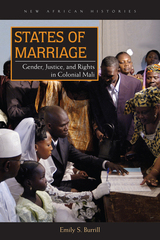 States of Marriage: Gender, Justice, and Rights in Colonial Mali
Emily S. Burrill
Ohio University Press, 2015 States of Marriage shows how throughout the colonial period in French Sudan (present-day Mali) the institution of marriage played a central role in how the empire defined its colonial subjects as gendered persons with certain attendant rights and privileges. The book is a modern history of the ideological debates surrounding the meaning of marriage, as well as the associated legal and sociopolitical practices in colonial and postcolonial Mali. It is also the first to use declassified court records regarding colonialist attempts to classify and categorize traditional marriage conventions in the southern region of the country. In French Sudan, as elsewhere in colonial Africa, the first stage of marriage reform consisted of efforts to codify African marriages, bridewealth transfers, and divorce proceedings in public records, rendering these social arrangements “legible” to the colonial administration. Once this essential legibility was achieved, other, more forceful interventions to control and reframe marriage became possible. This second stage of marriage reform can be traced through transformations in and by the colonial court system, African engagements with state-making processes, and formations of “gender justice.” The latter refers to gender-based notions of justice and legal rights, typically as defined by governing and administrative bodies as well as by socioxadpolitical communities. Gender justice went through a period of favoring the rights of women, to a period of favoring patriarchs, to a period of emphasizing the power of the individual—but all within the context of a paternalistic and restrictive colonial state.
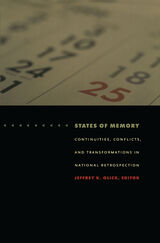 States of Memory: Continuities, Conflicts, and Transformations in National Retrospection
Jeffrey K. Olick, ed.
Duke University Press, 2003 States of Memory illuminates the construction of national memory from a comparative perspective. The essays collected here emphasize that memory itself has a history: not only do particular meanings change, but the very faculty of memory—its place in social relations and the forms it takes—varies over time. Integrating theories of memory and nationalism with case studies, these essays stake a vital middle ground between particular and universal approaches to social memory studies. The contributors—including historians and social scientists—describe societies’ struggles to produce and then use ideas of what a “normal” past should look like. They examine claims about the genuineness of revolution (in fascist Italy and communist Russia), of inclusiveness (in the United States and Australia), of innocence (in Germany), and of inevitability (in Israel). Essayists explore the reputation of Confucius among Maoist leaders during China’s Cultural Revolution; commemorations of Martin Luther King Jr. in the United States Congress; the “end” of the postwar era in Japan; and how national calendars—in signifying what to remember, celebrate, and mourn—structure national identification. Above all, these essays reveal that memory is never unitary, no matter how hard various powers strive to make it so. States of Memory will appeal to those scholars-in sociology, history, political science, cultural studies, anthropology, and art history-who are interested in collective memory, commemoration, nationalism, and state formation. Contributors. Paloma Aguilar, Frederick C. Corney, Carol Gluck, Matt K. Matsuda, Jeffrey K. Olick, Francesca Polletta, Uri Ram, Barry Schwartz, Lyn Spillman, Charles Tilly, Simonetta Falasca Zamponi, Eviatar Zerubavel, Tong Zhang
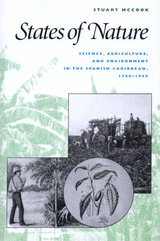 States of Nature: Science, Agriculture, and Environment in the Spanish Caribbean, 1760-1940
By Stuart George McCook
University of Texas Press, 2002 The process of nation-building in Latin America transformed the relations between the state, the economy, and nature. Between 1760 and 1940, the economies of most countries in the Spanish Caribbean came to depend heavily on the export of plant products, such as coffee, tobacco, and sugar. After the mid-nineteenth century, this model of export-led economic growth also became a central tenet of liberal projects of nation-building. As international competition grew and commodity prices fell over this period, Latin American growers strove to remain competitive by increasing agricultural production. By the turn of the twentieth century, their pursuit of export-led growth had generated severe environmental problems, including soil exhaustion, erosion, and epidemic outbreaks of crop diseases and pests. This book traces the history of the intersections between nature, economy, and nation in the Spanish Caribbean through a history of the agricultural and botanical sciences. Growers and governments in Venezuela, Puerto Rico, Cuba, Colombia, and Costa Rica turned to scientists to help them establish practical and ideological control over nature. They hoped to use science to alleviate the pressing environmental and economic stresses, without having to give up their commitment to export-led growth. Starting from an overview of the relationship among science, nature, and development throughout the export boom of 1760 to 1930, Stuart McCook examines such topics as the relationship between scientific plant surveys and nation-building, the development of a "creole science" to address the problems of tropical agriculture, the ecological rationalization of the sugar industry, and the growth of technocratic ideologies of science and progress. He concludes with a look at how the Great Depression of the 1930s changed the paradigms of economic and political development and the role of science and nature in these paradigms.
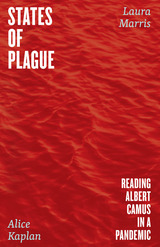 States of Plague: Reading Albert Camus in a Pandemic
Alice Kaplan and Laura Marris
University of Chicago Press, 2022 States of Plague examines Albert Camus’s novel as a palimpsest of pandemic life, an uncannily relevant account of the psychology and politics of a public health crisis.
As one of the most discussed books of the COVID-19 crisis, Albert Camus’s classic novel The Plague has become a new kind of literary touchstone. Surrounded by terror and uncertainty, often separated from loved ones or unable to travel, readers sought answers within the pages of Camus’s 1947 tale about an Algerian city gripped by an epidemic. Many found in it a story about their own lives—a book to shed light on a global health crisis.
In thirteen linked chapters told in alternating voices, Alice Kaplan and Laura Marris hold the past and present of The Plague in conversation, discovering how the novel has reached people in their current moment. Kaplan’s chapters explore the book’s tangled and vivid history, while Marris’s are drawn to the ecology of landscape and language. Through these pages, they find that their sense of Camus evolves under the force of a new reality, alongside the pressures of illness, recovery, concern, and care in their own lives. Along the way, Kaplan and Marris examine how the novel’s original allegory might resonate with a new generation of readers who have experienced a global pandemic. They describe how they learned to contemplate the skies of a plague spring, to examine the body politic and the politics of immunity.
Both personal and eloquently written, States of Plague uncovers for us the mysterious way a novel can imagine the world during a crisis and draw back the veil on other possible futures.
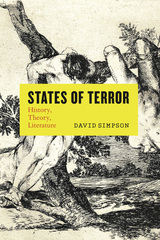 States of Terror: History, Theory, Literature
David Simpson
University of Chicago Press, 2019 How have we come to depend so greatly on the words terror and terrorism to describe broad categories of violence? David Simpson offers here a philology of terror, tracking the concept’s long, complicated history across literature, philosophy, political science, and theology—from Plato to NATO.
Introducing the concept of the “fear-terror cluster,” Simpson is able to capture the wide range of terms that we have used to express extreme emotional states over the centuries—from anxiety, awe, and concern to dread, fear, and horror. He shows that the choices we make among such words to describe shades of feeling have seriously shaped the attribution of motives, causes, and effects of the word “terror” today, particularly when violence is deployed by or against the state. At a time when terror-talk is widely and damagingly exploited by politicians and the media, this book unpacks the slippery rhetoric of terror and will prove a vital resource across humanistic and social sciences disciplines.
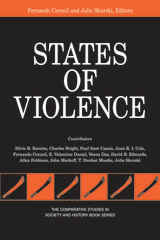 States of Violence
Fernando Coronil and Julie Skurski, Editors
University of Michigan Press, 2005 This extraordinary collection of essays recasts prevailing understandings of the role of violence in the formation of the modern world. By illuminating the links between exceptional ruptures and the routine maintenance of social order, the collection expands and redefines our understanding of political violence.
By means of a combination of detailed historical studies and imaginative reflection, this book explores the often unrecognized violent foundations of modern nations. Focusing on the relations between the state and the domestic order, it directs attention to contests over the establishment and representation of meanings and addresses the impact of state-centered categories and narratives on the organization and collective remembering of violence. The essays cover a wide range of regions, time periods, and processes, including the Middle East, South Asia, Latin America, the United States, and Europe, and span violent uprisings as well as the quotidian administration of the law. As its title suggests, States of Violence brings together the stable and the transient, the institutional and the experiential, the state sanctioned and the insurgent, inviting recognition of the multiple intersections of practices of governance and processes of feeling.
"Few scholars have managed as effectively as these to denature the place of violence in modern social life and thought. They make it abundantly plain that the frank brutality, often associated with colonial contexts, is inseparable from less acknowledged forms of "peaceful violence" that pervade much of our contemporary political life."
-Jean Comaroff, Bernard E. and Ellen C. Distinguished Service Professor, University of Chicago
Fernando Coronil, a Venezuelan citizen, is Associate Professor of Anthropology and History at the University of Michigan and Director of the Latin American and Caribbean Studies Program. His research focuses on contemporary historical transformations in Latin America and on theoretical issues concerning the state, modernity, and postcolonialism. His numerous publications include The Magical State: Nature, Money, and Modernity in Venezuela; "Beyond Occidentalism: Towards Non-Imperial Geohistorical Categories"; and the introductory essay in Cuban Counterpoint: Tobacco and Sugar, by Fernando Ortiz. He is completing a book on the coup against President Chávez of Venezuela.
Julie Skurski teaches in the Departments of Anthropology and History at the University of Michigan and is the Associate Director of the Doctoral Program in Anthropology and History. Her research concerns the intersections of national, racial, and gender relations in Latin America, with a focus on popular religiosity. Her publications include "The Ambiguities of Authenticity in Latin America: Doña Bárbara and the Construction of National Identity," in Becoming National, G. Eley and R. Suny, eds. She is currently completing Civilizing Barbarism, a book on gender, mestizaje, and the state in Venezuela.
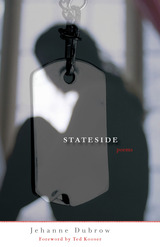 Stateside: Poems
Jehanne Dubrow
Northwestern University Press, 2010 Winner, 2012 Alice Fay Di Castagnola Award from the Poetry Society of America
Winner, Individual Artist's Award from the Maryland State Arts Council
First Prize, Anna Davidson Rosenberg Poetry Award for Poems on the Jewish Experience (for three poems from her manuscript-in-progress, "The Arranged Marriage")
Although the poems in Stateside are concerned with a husband's deployment to the war in Iraq, Jehanne Dubrow's riveting collection is driven more by intellectual curiosity and emotional exploration than by any overt political agenda. The speaker in these poems attempts to understand her situation within the long history of military wives left to wait and wonder – Penelope is a model, but also a source of mystery. These poems are dazzling in their use of form, their sensual imagery, and their learnedness, and possess a level of subtlety and control rarely found in the work of a young poet. Dubrow is fearless in her contemplation of the far-reaching effects of war, but even more so in her excavation of a marriage under duress.
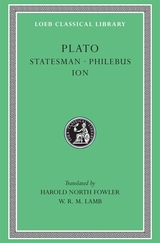 Statesman. Philebus. Ion
Plato
Harvard University Press On politics, pleasure, and poetry.
Plato, the great philosopher of Athens, was born in 427 BC. In early manhood an admirer of Socrates, he later founded the famous school of philosophy in the grove Academus. Much else recorded of his life is uncertain; that he left Athens for a time after Socrates’ execution is probable; that later he went to Cyrene, Egypt, and Sicily is possible; that he was wealthy is likely; that he was critical of “advanced” democracy is obvious. He lived to be 80 years old. Linguistic tests including those of computer science still try to establish the order of his extant philosophical dialogues, written in splendid prose and revealing Socrates’ mind fused with Plato’s thought.
In Laches, Charmides, and Lysis, Socrates and others discuss separate ethical conceptions. Protagoras, Ion, and Meno discuss whether righteousness can be taught. In Gorgias, Socrates is estranged from his city’s thought, and his fate is impending. The Apology (not a dialogue), Crito, Euthyphro, and the unforgettable Phaedo relate the trial and death of Socrates and propound the immortality of the soul. In the famous Symposium and Phaedrus, written when Socrates was still alive, we find the origin and meaning of love. Cratylus discusses the nature of language. The great masterpiece in ten books, the Republic, concerns righteousness (and involves education, equality of the sexes, the structure of society, and abolition of slavery). Of the six so-called dialectical dialogues Euthydemus deals with philosophy; metaphysical Parmenides is about general concepts and absolute being; Theaetetus reasons about the theory of knowledge. Of its sequels, Sophist deals with not-being; Politicus with good and bad statesmanship and governments; Philebus with what is good. The Timaeus seeks the origin of the visible universe out of abstract geometrical elements. The unfinished Critias treats of lost Atlantis. Unfinished also is Plato’s last work, Laws, a critical discussion of principles of law which Plato thought the Greeks might accept.
The Loeb Classical Library edition of Plato is in twelve volumes.
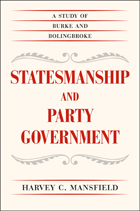 Statesmanship and Party Government: A Study of Burke and Bolingbroke
Harvey C. Mansfield
University of Chicago Press, 1965 In this incisive look at early modern views of party politics, Harvey C. Mansfield examines the pamphlet war between Edmund Burke and the followers of Henry St. John, First Viscount Bolingbroke during the mid-eighteenth century. In response to works by Bolingbroke published posthumously, Burke created his most eloquent advocacy of the party system. Taking an interdisciplinary approach to the material, Mansfield shows that present-day parties must be understood in the light of the history of party government. The complicated organization and the public actions of modern parties are the result, he contends, and not the cause of a great change in opinion about parties.
Mansfield points out that while parties have always existed, the party government that we know today is possible only because parties are now considered respectable. In Burke’s day, however, they were thought by detractors to be a cancer in a free polity. Even many supporters of the parties viewed them as a dangerous instrument, only to be used cautiously by statesmen in dire times. Burke, however, was an early champion of the party system in Britain and made his arguments with a clear-eyed realism. In Statesmanship and Party Government, Mansfield provides a skillful evaluation of Burke’s writings and sheds light present-day party politics through a profound understanding of the historical background of the their inception.
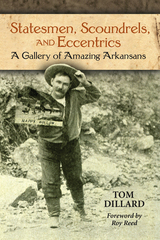 Statesmen, Scoundrels, and Eccentrics: A Gallery of Amazing Arkansans
Tom Dillard
University of Arkansas Press, 2010 From Native Americans, explorers, and early settlers to entertainers, business people, politicians, lawyers, artists, and many others, the well-known and not-so-well-known Arkansans featured in Statesmen, Scoundrels, and Eccentrics have fascinating stories. To name a few, there’s the “Hanging Judge,” Isaac C. Parker of Fort Smith, and Hattie Caraway, the first elected female U.S. senator. Isaac T. Gillam, a slave who became a prominent politician in post–Civil War Little Rock, is included, as is Norman McLeod, an eccentric Hot Springs photographer and owner of the city’s first large tourist trap. These entertaining short biographies from Dillard’s Remembering Arkansas column will be enjoyed by all kinds of readers, young and old alike. All the original columns reprinted here have also been enhanced with Dillard’s own recommended reading lists. Statesmen will serve as an introduction or reintroduction to the state’s wonderfully complex heritage, full of rhythm and discord, peopled by generations of hardworking men and women who have contributed much to the region and nation.
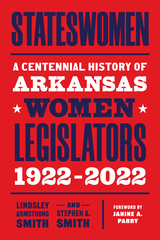 Stateswomen: A Centennial History of Arkansas Women Legislators, 1922-2022
Lindsley Armstrong Smith
University of Arkansas Press, 2022 Celebrating the centenary of women legislators’ membership in the Arkansas General Assembly, Stateswomen shines a light on the women who have served as some of the state’s central decision makers. Drawing on documentary research and oral histories, Lindsley Armstrong Smith and Stephen A. Smith present lively, concise biographies for the nearly 150 women legislators who have served in the general assembly to date, chronicling their personal histories, volunteer work and social activism, and legislative victories. In a probing introduction, the authors examine the neglected role of women in Arkansas political history alongside the “long history of resistance to full citizenship rights for women in Arkansas”—demonstrating that political representation is essential for improving opportunities in the wider society.
The first comprehensive study dedicated to these trailblazing Arkansas legislators, Stateswomen will surely inspire history buffs, community-minded citizens, and political hopefuls alike.
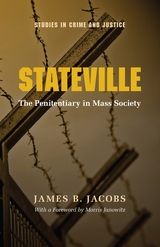 Stateville: The Penitentiary in Mass Society
James B. Jacobs
University of Chicago Press, 1978 Stateville penitentiary in Illinois has housed some of Chicago's most infamous criminals and was proclaimed to be "the world's toughest prison" by Joseph Ragen, Stateville's powerful warden from 1936 to 1961. It shares with Attica, San Quentin, and Jackson the notoriety of being one of the maximum security prisons that has shaped the public's conception of imprisonment. In Stateville James B. Jacobs, a sociologist and legal scholar, presents the first historical examination of a total prison organization—administrators, guards, prisoners, and special interest groups.
Jacobs applies Edward Shils's interpretation of the dynamics of mass society in order to explain the dramatic events of the past quarter century that have permanently altered Stateville's structure. With the extension of civil rights to previously marginal groups such as racial minorities, the poor, and, ultimately, the incarcerated, prisons have moved from society's periphery toward its center. Accordingly Stateville's control mechanisms became less authoritarian and more legalistic and bureaucratic. As prisoners' rights increased, the preogatives of the staff were sharply curtailed. By the early 1970s the administration proved incapable of dealing with politicized gangs, proliferating interest groups, unionized guards, and interventionist courts.
In addition to extensive archival research, Jacobs spent many months freely interacting with the prisoners, guards, and administrators at Stateville. His lucid presentation of Stateville's troubled history will provide fascinating reading for a wide audience of concerned readers.
". . . [an] impressive study of a complex social system."—Isidore Silver, Library Journal
Statewide Wetlands Strategies
World Wildlife Fund
Island Press, 1992 Statewide Wetlands Strategies offers comprehensive strategies that draw upon all levels of government and the private sector to focus and coordinate efforts to work toward the goal of no-net-loss of wetlands.
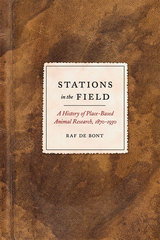 Stations in the Field: A History of Place-Based Animal Research, 1870-1930
Raf De Bont
University of Chicago Press, 2015 When we think of sites of animal research that symbolize modernity, the first places that come to mind are grand research institutes in cities and near universities that house the latest in equipment and technologies, not the surroundings of the bird’s nest, the octopus’s garden in the sea, or the parts of inland lakes in which freshwater plankton reside. Yet during the late nineteenth and early twentieth centuries, a group of zoologists began establishing novel, indeed modern ways of studying nature, propagating what present-day ecologists describe as place-based research.
Raf De Bont’s Stations in the Field focuses on the early history of biological field stations and the role these played in the rise of zoological place-based research. Beginning in the 1870s, a growing number of biological field stations were founded—first in Europe and later elsewhere around the world—and thousands of zoologists received their training and performed their research at these sites. Through case studies, De Bont examines the material and social context in which field stations arose, the actual research that was produced in these places, the scientific claims that were developed there, and the rhetorical strategies that were deployed to convince others that these claims made sense. From the life of parasitic invertebrates in northern France and freshwater plankton in Schleswig-Holstein, to migratory birds in East Prussia and pest insects in Belgium, De Bont’s book is fascinating tour through the history of studying nature in nature.
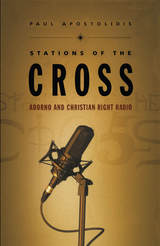 Stations of the Cross: Adorno and Christian Right Radio
Paul Apostolidis
Duke University Press, 2000 Since the 1970s, American society has provided especially fertile ground for the growth of the Christian right and its influence on both political and cultural discourse. In Stations of the Cross political theorist Paul Apostolidis shows how a critical component of this movement’s popular culture—evangelical conservative radio—interacts with the current U.S. political economy. By examining in particular James Dobson’s enormously influential program, Focus on the Family—its messages, politics, and effects—Apostolidis reveals the complex nature of contemporary conservative religious culture.
Public ideology and institutional tendencies clash, the author argues, in the restructuring of the welfare state, the financing of the electoral system, and the backlash against women and minorities. These frictions are nowhere more apparent than on Christian right radio. Reinvigorating the intellectual tradition of the Frankfurt School, Apostolidis shows how ideas derived from early critical theory—in particular that of Theodor W. Adorno—can illuminate the political and social dynamics of this aspect of contemporary American culture. He uses and reworks Adorno’s theories to interpret the nationally broadcast Focus on the Family, revealing how the cultural discourse of the Christian right resonates with recent structural transformations in the American political economy. Apostolidis shows that the antidote to the Christian right’s marriage of religious and market fundamentalism lies not in a reinvocation of liberal fundamentals, but rather depends on a patient cultivation of the affinities between religion’s utopian impulses and radical, democratic challenges to the present political-economic order.
Mixing critical theory with detailed analysis, Stations of the Cross provides a needed contribution to sociopolitical studies of mass movements and will attract readers in sociology, political science, philosophy, and history.
Stations of the Lost: The Treatment of Skid Row Alcoholics
Jacqueline P. Wiseman
University of Chicago Press, 1979 When first published in 1970, Stations of the Lost won the C. Wright Mills Award for Best Book in the Area of Social Problems. The study considers the Skid Row alcoholic from two points of view, that of the alcoholic himself and that of the agents of social control who treat him. A major discovery of Wiseman's research was that Skid Row men spend only about one third of the year on Skid Row. The rest of the time is spent "making the loop"—going from Skid Row to city jail, to county jail, to the state mental hospital, to the missions, and back to Skid Row. While these facilities are designed to handle or rehabilitate Skid Row men, they are actually used by these men as a means of survival.
Statistical Explanation and Statistical Relevance
Wesley C. Salmon
University of Pittsburgh Press, 1971 According to modern physics, many objectively improbable events actually occur, such as the spontaneous disintegration of radioactive atoms. Because of high levels of improbability, scientists are often at a loss to explain such phenomena. In this main essay of this book, Wesley Salmon offers a solution to scientific explanation based on the concept of statistical relevance (the S-R model). In this vein, the other two essays herein discuss “Statistical Relevance vs. Statistical Inference,” and “Explanation and Information.”
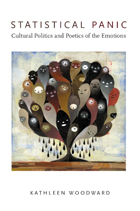 Statistical Panic: Cultural Politics and Poetics of the Emotions
Kathleen Woodward
Duke University Press, 2009 In this moving and thoughtful book, Kathleen Woodward explores the politics and poetics of the emotions, focusing on American culture since the 1960s. She argues that we are constrained in terms of gender, race, and age by our culture’s scripts for “emotional” behavior and that the accelerating impoverishment of interiority is a symptom of our increasingly media-saturated culture. She also shows how we can be empowered by stories that express our experience, revealing the value of our emotions as a crucial form of intelligence. Referring discreetly to her own experience, Woodward examines the interpenetration of social structures and subjectivity, considering how psychological emotions are social phenomena, with feminist anger, racial shame, old-age depression, and sympathy for non-human cyborgs (including robots) as key cases in point. She discusses how emerging institutional and discursive structures engender “new” affects that in turn can help us understand our changing world if we are attentive to them—the “statistical panic” produced by the risk society, with its numerical portents of disease and mortality; the rage prompted by impenetrable and bloated bureaucracies; the brutal shame experienced by those caught in the crossfire of the media; and the conservative compassion that is not an emotion at all, only an empty political slogan. The orbit of Statistical Panic is wide, drawing in feminist theory, critical phenomenology, and recent theories of the emotions. But at its heart are stories. As an antidote to the vacuous dramas of media culture, with its mock emotions and scattershot sensations, Woodward turns to the autobiographical narrative. Stories of illness—by Joan Didion, Yvonne Rainer, Paul Monette, and Alice Wexler, among others—receive special attention, with the inexhaustible emotion of grief framing the book as a whole.
Statistical Techniques for High-Voltage Engineering
W. Hauschild
The Institution of Engineering and Technology, 1992 This book sets out statistical methods that can be used in the preparation, execution, evaluation and interpretation of experiments of a random nature. It also includes the assessment of test methods used in high-voltage engineering from a statistical standpoint, and contains detailed sections on breakdown statistics of typical electrical insulating arrangements. Separate special areas of mathematical statistics - such as statistical trial planning, questions of reliability, and stochastic processes - are mentioned briefly. The extensive bibliography points the way to more advanced work.
Statistics and Reality: Concepts and Measurements of Migration in Europe
Edited by Heinz Fassmann, Ursula Reeger, and Wiebke Sievers
Amsterdam University Press, 2009
In the past decade, there has been a trend towards the global “harmonization” of migration statistics, largely inspired by international bodies and organizations that require comparative data. This volume provides an accessible account of the history of migration measurement in Europe and analyzes the current conceptualizations of migration and data-gathering procedures across twelve European countries. Based on this analysis, the authors provide critical insight into the migrant stocks and flows in their own countries and comment on recent trends in migration scholarship, such as the feminization of migration or the diversification of migrant’s origins.
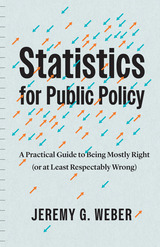 Statistics for Public Policy: A Practical Guide to Being Mostly Right (or at Least Respectably Wrong)
Jeremy G. Weber
University of Chicago Press, 2024 A long-overdue guide on how to use statistics to bring clarity, not confusion, to policy work. Statistics are an essential tool for making, evaluating, and improving public policy. Statistics for Public Policy is a crash course in wielding these unruly tools to bring maximum clarity to policy work. Former White House economist Jeremy G. Weber offers an accessible voice of experience for the challenges of this work, focusing on seven core practices: - Thinking big-picture about the role of data in decisions
- Critically engaging with data by focusing on its origins, purpose, and generalizability
- Understanding the strengths and limits of the simple statistics that dominate most policy discussions
- Developing reasons for considering a number to be practically small or large
- Distinguishing correlation from causation and minor causes from major causes
- Communicating statistics so that they are seen, understood, and believed
- Maintaining credibility by being right (or at least respectably wrong) in every setting
Statistics for Public Policy dispenses with the opacity and technical language that have long made this space impenetrable; instead, Weber offers an essential resource for all students and professionals working at the intersections of data and policy interventions. This book is all signal, no noise.
 Statistics on the Table: The History of Statistical Concepts and Methods
Stephen M. Stigler
Harvard University Press, 2002 This lively collection of essays examines in witty detail the history of some of the concepts involved in bringing statistical argument "to the table," and some of the pitfalls that have been encountered. The topics range from seventeenth-century medicine and the circulation of blood, to the cause of the Great Depression and the effect of the California gold discoveries of 1848 upon price levels, to the determinations of the shape of the Earth and the speed of light, to the meter of Virgil's poetry and the prediction of the Second Coming of Christ. The title essay tells how the statistician Karl Pearson came to issue the challenge to put "statistics on the table" to the economists Marshall, Keynes, and Pigou in 1911. The 1911 dispute involved the effect of parental alcoholism upon children, but the challenge is general and timeless: important arguments require evidence, and quantitative evidence requires statistical evaluation. Some essays examine deep and subtle statistical ideas such as the aggregation and regression paradoxes; others tell of the origin of the Average Man and the evaluation of fingerprints as a forerunner of the use of DNA in forensic science. Several of the essays are entirely nontechnical; all examine statistical ideas with an ironic eye for their essence and what their history can tell us about current disputes.
 The Statue of Libertine
Luma Sims
Templeton Press, 2021
Many immigrants to the United States are reluctant to come here. That statement takes many Americans by surprise because we assume that people freely choose to come to this country to make better lives for themselves. After all, what American is unfamiliar with the romantic image of immigrants of yesteryear arriving in New York Harbor, hungry to make their way in the land of opportunity?
But the United States is not the country it was a century ago. Back then, the institutions of family and religion held together American society, establishing the norms, customs, and obligations that smoothed the gears of self-governance. For this reason, the country had a clear national identity into which immigrants could assimilate. They could adapt their cultural heritage to the American way of life and raise their children to do the same. Sadly, this is no longer the case.
The march of modernity has dissolved the institutions that supported a cohesive society, giving rise to a radical individualism that devalued the importance of meaning-making relationships. The fallout has included unprecedented rates of loneliness, historical ignorance, excessive materialism, and moral drift. Immigrants can see this in America better than Americans themselves. The advantage immigrants have is that they come from countries that cherish group belonging; they know that without it, an individual cannot live a fulfilling life.
In The Statue of Libertine, Luma Simms—herself an immigrant from Iraq—argues that we ought to listen to the immigrant perspective and use it as a tool for self-reflection. Drawing from landmark social commentators such as Alexis de Tocqueville, Simms unfolds her argument by sharing her family’s story of coming to America and struggling to make it their home. She also includes firsthand accounts of other immigrants whose experiences underscore how America’s proverbial melting pot has been shattered.
Her objective is to help us see ourselves through the eyes of the modern immigrant and grasp how far we’ve strayed from the tacit social agreements that made America so strong in the first place. With this understanding, we can begin the work of reviving the institutions that made us a beacon of hope for the rest of the world.
 Stature, Living Standards, and Economic Development: Essays in Anthropometric History
Edited by John Komlos
University of Chicago Press, 1994 What can body measurements tell us about living standards in the past? In this collection of essays studying height and weight data from eighteenth- and early nineteenth-century Europe, North America, and Asia, fourteen distinguished scholars explore the relation between physical size, economic development, and standard of living among various socioeconomic groups.
Analyzing the differences in physical stature by social group, gender, age, provenance, and date and place of birth, these essays illuminate urban and rural differences in well-being, explore the effects of market integration on previously agricultural societies, contrast the experiences of several segments of society, and explain the proximate causes of downturns and upswings in well-being. Particularly intriguing is the researchers' conclusion that the environment of the New World during this period was far more propitious than that of Europe, based on data showing that European aristocrats were in worse health than even the poorest members of American society.
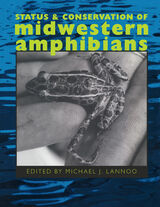 Status and Conservation of Midwestern Amphibians
Michael J. Lannoo
University of Iowa Press, 1998 In 1990 an international group of biologists, meeting to discuss rumors of declines in the number of amphibians, discovered that amphibian disappearances once thought to be a local problem were not—the problem was global. And, even more disturbing, amphibians were disappearing not just from areas settled by humans but from regions of the world once believed to be pristine. Under the mantle of the Declining Amphibian Populations Task Force, this timely book addresses three fundamental questions for the midwestern United States: are amphibians declining; if so, why; and, if so, what can be done to halt these losses? In the Midwest—defined here as Missouri, Iowa, Illinois, Indiana, Ohio, Minnesota, Wisconsin, and Michigan—there can be no doubt that the number of salamanders and frogs has declined with Euro-American settlement and the conversion to an agriculturally dominated landscape. Habitat loss and landscape fragmentation have been major factors in this decline, as have aquacultural uses of natural wetlands. Bullfrog introductions have eliminated populations of native amphibians, and collecting for the biological supply trade has reduced the number of individuals within many populations. The goal of the forty-two essays in this well-documented, well-illustrated book is to put between two covers all we know now about the status of midwestern amphibians. By doing this, the editor has created a readily accessible historical record for future studies. Organized into sections covering landscape patterns and biogeography, species status, regional and state status, diseases and toxins, conservation, and monitoring and applications, this landmark volume will serve as the foundation for amphibian conservation in the Midwest.
 The Status and Distribution of New Jersey's Birds
Leck, Charles F
Rutgers University Press, 1984 In this provocative book, Roger Finke and Rodney Stark challenge popular perceptions about American religion. They view the religious environment as a free market economy, where churches compete for souls. The story they tell is one of gains for upstart sects and losses for mainline denominations. Although many Americans assume that religious participation has declined in America, Finke and Stark present a different picture. In 1776, fewer than 1 in 5 Americans were active in church affairs. Today, church membership includes about 6 out of 10 people. But, as Finke and Stark show, not all denominations benefited from this growth. They explain how and why the leading eighteenth-century churches began their descent, while two newcomer sects, the Baptists and the Methodists, gained ground. They also analyze why the Methodists then began a long, downward slide, why the Baptists continued to succeed, how the Catholic Church met the competition of ardent Protestant missionaries, and why the Catholic commitment has declined since Vatican II. The authors also explain why ecumenical movements always fail. In short, Americans are not abandoning religion; they have been moving away from established denominations. A "sect-church process" is always under way, Finke and Stark argue, as successful churches lose their organizational vigor and are replaced by less worldly groups. Some observers assert that the rise in church membership rates indicates increased participation, not increased belief. Finke and Stark challenge this as well. They find that those groups that have gained the greatest numbers have demanded that their followers accept traditional doctrines and otherworldliness. They argue thatreligious organizations can thrive only when they comfort souls and demand sacrifice. When theology becomes too logical, or too secular, it loses people.
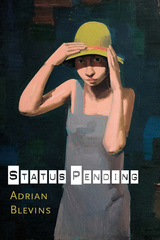 Status Pending
Adrian Blevins
Four Way Books A riotous yet deceptively serious addition to Adrian Blevins’ oeuvre, Status Pending exquisitely leverages the lyric to fathom the liminality of human experience. These poems comprise a stenography of our lives as the buffering consciousness between voided states. Blevins straddles various faultlines as a woman who writes and mothers, who emerges from a second divorce as an Appalachian transplant in New England, who sees from midlife the stringent but unspoken socioeconomic strata framing class conflict. If marriage “was a rope across a twilight abyss (an abscess),” if aging brings the hateful labels “OUT OF ORDER / & LATE FEE,” every disappointment uncovers rejuvenating clarity. “Bereavement status” engenders both heartbreak and hope, somehow, as “then you lose your losses.” Blevins triumphs in her reclamation of the spectacular in the mundane. “America is a flub. // A hack. A crime! America, fuck you for making // despondent bandits of us — / for blinding & hooding // & chaining & gagging us.” Even perched on shifting tectonic plates, Blevins wins the last word: “You don’t seem to know it, // but there are foxes / crossing meadows // out there fast as disco lights. There are loons on your lakes.” Amen.
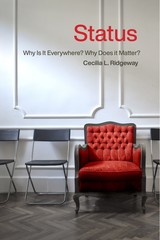 Status: Why Is It Everywhere? Why Does It Matter?
Cecilia L. Ridgeway
Russell Sage Foundation, 2019 Status is ubiquitous in modern life, yet our understanding of its role as a driver of inequality is limited. In Status, sociologist and social psychologist Cecilia Ridgeway examines how this ancient and universal form of inequality influences today’s ostensibly meritocratic institutions and why it matters. Ridgeway illuminates the complex ways in which status affects human interactions as we work together towards common goals, such as in classroom discussions, family decisions, or workplace deliberations.
Ridgeway’s research on status has important implications for our understanding of social inequality. Distinct from power or wealth, status is prized because it provides affirmation from others and affords access to valuable resources. Ridgeway demonstrates how the conferral of status inevitably contributes to differing life outcomes for individuals, with impacts on pay, wealth creation, and health and wellbeing. Status beliefs are widely held views about who is better in society than others in terms of esteem, wealth, or competence. These beliefs confer advantages which can exacerbate social inequality. Ridgeway notes that status advantages based on race, gender, and class—such as the belief that white men are more competent than others—are the most likely to increase inequality by facilitating greater social and economic opportunities.
Ridgeway argues that status beliefs greatly enhance higher status groups’ ability to maintain their advantages in resources and access to positions of power and make lower status groups less likely to challenge the status quo. Many lower status people will accept their lower status when given a baseline level of dignity and respect—being seen, for example, as poor but hardworking. She also shows that people remain willfully blind to status beliefs and their effects because recognizing them can lead to emotional discomfort. Acknowledging the insidious role of status in our lives would require many higher-status individuals to accept that they may not have succeeded based on their own merit; many lower-status individuals would have to acknowledge that they may have been discriminated against.
Ridgeway suggests that inequality need not be an inevitable consequence of our status beliefs. She shows how status beliefs can be subverted—as when we reject the idea that all racial and gender traits are fixed at birth, thus refuting the idea that women and people of color are less competent than their male and white counterparts. This important new book demonstrates the pervasive influence of status on social inequality and suggests ways to ensure that it has a less detrimental impact on our lives.
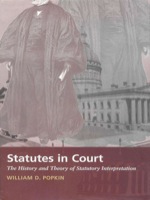 Statutes in Court: The History and Theory of Statutory Interpretation
William D. Popkin
Duke University Press, 1999 How do judges determine the meaning of laws? The extent to which judges should exercise their discretion in interpreting legislation has been a contentious issue throughout American history, involving questions about the balance of power between the legislature and the judiciary. In Statutes in Court William D. Popkin provides an indispensable survey of the history of American statutory interpretation and then offers his own theory of “ordinary judging” that defines the proper scope of judicial discretion.
Popkin begins by discussing the British origins of statutory interpretation in this country. He then maps the evolving conceptions of the judicial role in the United States from Revolutionary times through the twentieth century before presenting his “ordinary judging” theory—one that asks the judge to use modest judicial discretion to assist the legislature in implementing good government. Claiming that theory cannot account for everything a judge does when determining statutory meaning or writing an opinion, Popkin shows how judges who strive to be conscientious in interpreting the law are often hampered by the lack of both a framework in which to fit their approach and a well-understood common vocabulary to explain what they do. Statutes in Court fills that gap.
This work will be valuable to anyone concerned about the judicial role in the interpretation of laws—from judiciary officials and law professors to legal historians and political scientists.
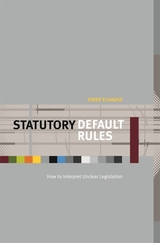 Statutory Default Rules: How to Interpret Unclear Legislation
Einer Elhauge
Harvard University Press, 2008 Most new law is statutory law; that is, law enacted by legislators. An important question, therefore, is how should this law be interpreted by courts and agencies, especially when the text of a statute is not entirely clear. There is a great deal of scholarly literature on the rules and legal materials courts should use in interpreting statutes. This book takes a fresh approach by focusing instead on what judges should do once the legal materials fail to resolve the interpretive question. It challenges the common assumption that in such cases judges should exercise interstitial lawmaking power. Instead, it argues that--wherever one believes the interpretive inquiry has failed to resolve the statutory meaning--judges can and should use statutory default rules that are designed to maximize the satisfaction of enactable political preferences; that is, the political preferences of the polity that are shared among enough elected officials that they could and would be enacted into law if the issue were on the legislative agenda.
These default rules explain many recent high-profile cases, including the Guantánamo detainees case, the sentencing guidelines case, the decision denying the FDA authority to regulate cigarettes, and the case that refused to allow the attorney general to criminalize drugs used in physician-assisted suicide.
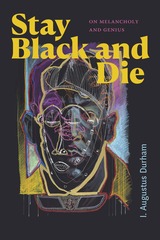 Stay Black and Die: On Melancholy and Genius
I. Augustus Durham
Duke University Press, 2023 In Stay Black and Die, I. Augustus Durham examines melancholy and genius in black culture, letters, and media from the nineteenth century to the contemporary moment. Drawing on psychoanalysis, affect theory, and black studies, Durham explores the black mother as both a lost object and a found subject often obscured when constituting a cultural legacy of genius across history. He analyzes the works of Frederick Douglass, Ralph Ellison, Marvin Gaye, Octavia E. Butler, and Kendrick Lamar to show how black cultural practices and aesthetics abstract and reveal the lost mother through performance. Whether attributing Douglass’s intellect to his matrilineage, reading Gaye’s falsetto singing voice as a move to interpolate black female vocality, or examining the women in Ellison’s life who encouraged his aesthetic interests, Durham demonstrates that melancholy becomes the catalyst for genius and genius in turn is a signifier of the maternal. Using psychoanalysis to develop a theory of racial melancholy while “playing” with affect theory to investigate racial aesthetics, Durham theorizes the role of the feminine, especially the black maternal, in the production of black masculinist genius.
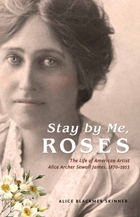 Stay by Me, Roses: The Life of American Artist Alice Archer Sewall James, 1870-1955
ALICE B. SKINNER
Swedenborg Foundation Publishers, 2011
Alice Archer Sewall James—known affectionately as “Archie”—lived a life that most women of her time could only dream about. Educated from a young age and encouraged by her family to express herself in all forms of art, she grew into an irrepressible woman who never stopped looking for ways to pass her experience on to others.
This biography traces her life from her childhood in Urbana, Ohio, to teenage years spent traveling in Europe, to her challenging marriage to John H. James, heir to a family fortune built by his entrepreneurial grandfather of the same name. Her father, Swedenborgian minister and educator Frank Sewall, was her greatest fan, supporting her in good times, as she started to build a reputation as a painter and illustrator, and in bad, as poor health forced her to abandon her art and put a strain on her personal relationships. In later years, however—like the roses in the title poem—she reemerged as an artist and as a teacher, inspiring a new generation of painters at Urbana University.
While Archie’s Swedenborgian heritage gave structure and meaning to her life, it was her inner creative drive that truly touched others. Stay by Me, Roses opens a window on the life and times of a unique nineteenth-century woman.
 "Stay Out of Politics": A Philosopher Views South Africa
Ronald Aronson
University of Chicago Press, 1990 As a lifelong radical and political activist, Ronald Aronson accepted an invitation to lecture in South Africa only after two years of deliberation. "Stay Out of Politics," which begins with the moral questions that Aronson confronted in his decision to go, is a reaffirmation of the necessity for majority rule and the abolition of apartheid. Amidst the pressure of widespread talk of an academic boycott of South Africa, Aronson decided to lecture there as a contribution to the struggle for majority rule. He decided to become mobilized as a philosopher and activist by engaging in the effort close at hand rather than settling for a distant and comfortable protest by avoidance.
Along with his visa, Aronson was given the following warning by a consular officer: "Stay out of politics!" Believing that philosophy not only has a role to play but that it can, and must, involve itself in the vital social and political issues of our time, Aronson equally discovered that in South Africa politics is everywhere and inescapable. The lectures Aronson delivered focused on the meaning of progress and hope, on the threat—and experience—of disaster today, and on our responsibility to join the struggle for a humane and rational world. Two of the most provocative lectures are included here, the first a discussion of the Holocaust that has direct and intentional applications to the current situation in South Africa. The second lecture, in memory of the assassinated political philosopher Richard Turner, is a sketch of Aronson's philosophy of hope as seen from within the South African context.
Despite the limitations of teaching under possible surveillance in a revolutionary situation, Aronson witnessed the social reality of apartheid and heard the voices of its victims. Aronson's love for the South African people motivated him to write this powerful account. He presents a lecturer's tour of South Africa: the experiences that both confirmed his belief in the urgent need for majority rule but also revealed the complexities of the society that seeks to continue apartheid through all reforms; and his philosopher's reflections upon returning to the United States on the irrationality of apartheid and the ambiguities of the struggle to end it.
"Stay Out of Politics" is not only a powerful encounter with South Africa today, it is a provocative statement about philosophy—its nature, its tasks, its duty to understand and change the world in which we live.
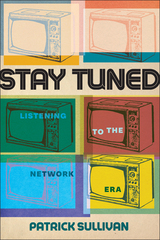 Stay Tuned: Listening to the Network Era
Patrick Sullivan
Rutgers University Press Since the 1950s, television flooded the American soundscape with not just pictures but sounds, a constant aural stream infiltrating domestic life. In Stay Tuned, Patrick Sullivan treats network-era television sound not as background noise or auxiliary signal but as a formative texture of aesthetic life in postwar America. He theorizes how television’s sonic forms—asynchronous audiovisuals, noises, affective rhythms, what he collectively terms “network aurality”—trouble traditional aesthetic theory. Stay Tuned takes up critiques of television sound and repurposes them as evidence of a deeper philosophical discomfort: namely, that television sound does something to aesthetic categories that they weren’t built to handle. From the laugh track to the cartoon “boinks,” from noises to the jingle, Sullivan reads television sounds not as cultural detritus but as formal interventions—forcing a redefinition of what aesthetics means when form is mass-produced, commercial, and built for syndication. What emerges is not just a new theory and history of television sound, but a reimagined account of aesthetic experience itself—expanded, recalibrated, and a little wacky.
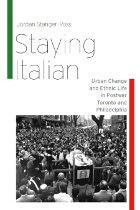 Staying Italian: Urban Change and Ethnic Life in Postwar Toronto and Philadelphia
Jordan Stanger-Ross
University of Chicago Press, 2009 Despite their twin positions as two of North America’s most iconic Italian neighborhoods, South Philly and Toronto’s Little Italy have functioned in dramatically different ways since World War II. Inviting readers into the churches, homes, and businesses at the heart of these communities, Staying Italian reveals that daily experience in each enclave created two distinct, yet still Italian, ethnicities. As Philadelphia struggled with deindustrialization, Jordan Stanger-Ross shows, Italian ethnicity in South Philly remained closely linked with preserving turf and marking boundaries. Toronto’s thriving Little Italy, on the other hand, drew Italians together from across the wider region. These distinctive ethnic enclaves, Stanger-Ross argues, were shaped by each city’s response to suburbanization, segregation, and economic restructuring. By situating malleable ethnic bonds in the context of political economy and racial dynamics, he offers a fresh perspective on the potential of local environments to shape individual identities and social experience.
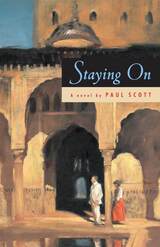 Staying On: A Novel
Paul Scott
University of Chicago Press, 1977 In this sequel to The Raj Quartet, Colonel Tusker and Lucy Smalley stay on in the hills of Pankot after Indian independence deprives them of their colonial status. Finally fed up with accommodating her husband, Lucy claims a degree of independence herself. Eloquent and hilarious, she and Tusker act out class tensions among the British of the Raj and give voice to the loneliness, rage, and stubborn affection in their marriage. Staying On won the Booker Prize in 1977 and was made into a motion picture starring Trevor Howard and Celia Johnson in 1979.
"Staying On far transcends the events of its central action. . . . [The work] should help win for Scott . . . the reputation he deserves—as one of the best novelists to emerge from Britain's silver age."—Robert Towers, Newsweek
"Scott's vision is both precise and painterly. Like an engraver cross-hatching in the illusion of fullness, he selects nuances that will make his characters take on depth and poignancy."—Jean G. Zorn, New York Times Book Review
"A graceful comic coda to the earlier song of India. . . . No one writing knows or can evoke an Anglo-Indian setting better than Scott."—Paul Gray, Time
"Staying On provides a sort of postscript to [Scott's] deservedly acclaimed The Raj Quartet. . . . He has, as it were, summoned up the Raj's ghost in Staying On. . . . It is the story of the living death, in retirement, and the final end of a walk-on character from the quartet. . . . Scott has completed the task of covering in the form of a fictional narrative the events leading up to India's partition and the achievement of independence in 1947. It is, on any showing, a creditable achievement."—Malcolm Muggeridge, New York Times Book Review
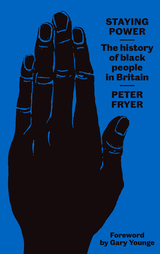 Staying Power: The History of Black People in Britain
Peter Fryer
Pluto Press, 2018 Staying Power is a panoramic history of black Britons. First published in 1984 amid race riots and police brutality, Fryer’s history performed a deeply political act, revealing how Africans, Asians, and their descendants had been erased from British history.
Stretching back to the Roman conquest, encompassing the court of Henry VIII, and following a host of characters from the pioneering nurse and war hero Mary Seacole to the abolitionist Olaudah Equiano, Peter Fryer paints a picture of two thousand years of black presence in Britain. By rewriting black Britons into British history, showing where they influenced political traditions, social institutions, and cultural life, Staying Power presented a radical challenge to racist and nationalist agendas. This edition includes a new foreword by Gary Younge examining the book’s continued significance in shaping black British identity today, alongside the now-classic introduction by Paul Gilroy.
Staying Sober in Mexico City
By Stanley Brandes
University of Texas Press, 2002 Staying sober is a daily struggle for many men living in Mexico City, one of the world's largest, grittiest urban centers. In this engaging study, Stanley Brandes focuses on a common therapeutic response to alcoholism, Alcoholics Anonymous (A.A.), which boasts an enormous following throughout Mexico and much of Latin America. Over several years, Brandes observed and participated in an all-men's chapter of A.A. located in a working class district of Mexico City. Employing richly textured ethnography, he analyzes the group's social dynamics, therapeutic effectiveness, and ritual and spiritual life. Brandes demonstrates how recovering alcoholics in Mexico redefine gender roles in order to preserve masculine identity. He also explains how an organization rooted historically in evangelical Protestantism has been able to flourish in Roman Catholic Latin America.
Staying The Course: A Runner’s Toughest Race
Dick Beardsley
University of Minnesota Press, 2004 For a moment Dick Beardsley became the most famous runner in the world by losing a race. In the 1982 Boston Marathon, Beardsley, foiled by a motorcycle that cut him off, finished two seconds behind Alberto Salazar in one of the most memorable contests in marathon history. Staying the Course recounts that race and the difficult years that followed, including his recovery from a near-fatal farm accident, his subsequent addiction to painkillers, and a public arrest for forging prescriptions. His story of overcoming obstacles speaks to anyone who loves competition, who has survived catastrophe, or who has pursued a seemingly impossible goal.
Staying Tuned: Contemporary Soap Opera Criticism
Suzanne Frentz
University of Wisconsin Press, 1992 Staying Tuned: Contemporary Soap Opera Criticism examines serials. Broadcast first in 1926 on radio and since 1956 on television Monday through Friday 52 weeks a year, soap operas provide a clear promise to continue for as long as mass medicated entertainment exists. Over the last sixty years, billions have happily suffered along with the gallant men and women of the afternoon.
A growing body of scholarly literature exists now to provide insights and suggest answers to the question of why so many continually return to the routine tragedies of daytime drama. Each of our chapters explores an aspect of soap opera which contributes to the endurance of the genre.
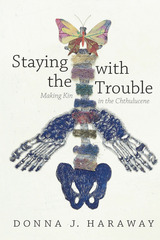 Staying with the Trouble: Making Kin in the Chthulucene
Donna J. Haraway
Duke University Press, 2016 In the midst of spiraling ecological devastation, multispecies feminist theorist Donna J. Haraway offers provocative new ways to reconfigure our relations to the earth and all its inhabitants. She eschews referring to our current epoch as the Anthropocene, preferring to conceptualize it as what she calls the Chthulucene, as it more aptly and fully describes our epoch as one in which the human and nonhuman are inextricably linked in tentacular practices. The Chthulucene, Haraway explains, requires sym-poiesis, or making-with, rather than auto-poiesis, or self-making. Learning to stay with the trouble of living and dying together on a damaged earth will prove more conducive to the kind of thinking that would provide the means to building more livable futures. Theoretically and methodologically driven by the signifier SF—string figures, science fact, science fiction, speculative feminism, speculative fabulation, so far—Staying with the Trouble further cements Haraway's reputation as one of the most daring and original thinkers of our time.
Steadfast in the Faith: The Life of Patrick Cardinal O'Boyle
Morris J. MacGregor
Catholic University of America Press, 2006 Cardinal Patrick O'Boyle (1896-1987) is largely remembered as the controversial leader of the Archdiocese of Washington during its first, formative quarter century. Combining considerable foresight about the Church's social concerns with a stubborn resistance to innovation, he countered opposition from those who reviled his progressive stand, especially his steadfast demand for racial equality and support of organized labor.
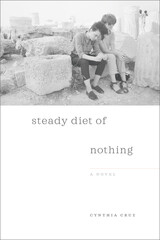 Steady Diet of Nothing
Cynthia Cruz
Four Way Books In this stunning novel, Cynthia Cruz administers an IV drip of capitalist entropy that keeps us rapt: Steady Diet of Nothing compels readers to consume it in one headlong sitting. Charting the dissolution of an adolescent runaway community, the book follows a teenage girl, Candy, after her arrival at the Blue House — an abandoned home inhabited by other children seeking shelter from the world. Here, she falls in love with Toby, a boy from elsewhere whose companionship interrupts the perpetual alienation of the status quo. “He didn’t explain, but I knew,” Candy says. “I knew as soon as he’d started talking, that we’d come from the same place.”
Beyond their den’s walls, the market reigns, and the societal structure of infinite calculation and infinite exchange has rendered contemporary life meaningless. As Toby and Candy separately descend into drug addiction and prostitution, they find their efforts to defy the American economic superstructure futile, and Candy, again, is alone. “I’m going to die in here, I say, to no one.” The transcription of a mute prayer, Steady Diet of Nothing is a stark, vital work that requires our attention. “I’m awake or else I’m dreaming,” Candy narrates. “There’s a knock on the door. The phone rings forever but I can’t put the receiver down.” It keeps the line open as long as it can.
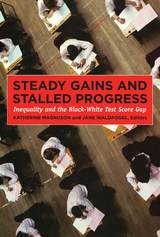 Steady Gains and Stalled Progress: Inequality and the Black-White Test Score Gap
Katherine Magnuson
Russell Sage Foundation, 2008 Addressing the disparity in test scores between black and white children remains one of the greatest social challenges of our time. Between the 1960s and 1980s, tremendous strides were made in closing the achievement gap, but that remarkable progress halted abruptly in the mid 1980s, and stagnated throughout the 1990s. How can we understand these shifting trends and their relation to escalating economic inequality? In Steady Gains and Stalled Progress, interdisciplinary experts present a groundbreaking analysis of the multifaceted reasons behind the test score gap—and the policies that hold the greatest promise for renewed progress in the future. Steady Gains and Stalled Progress shows that while income inequality does not directly lead to racial differences in test scores, it creates and exacerbates disparities in schools, families, and communities—which do affect test scores. Jens Ludwig and Jacob Vigdor demonstrate that the period of greatest progress in closing the gap coincided with the historic push for school desegregation in the 1960s and 1970s. Stagnation came after efforts to integrate schools slowed down. Today, the test score gap is nearly 50 percent larger in states with the highest levels of school segregation. Katherine Magnuson, Dan Rosenbaum, and Jane Waldfogel show how parents' level of education affects children's academic performance: as educational attainment for black parents increased in the 1970s and 1980s, the gap in children's test scores narrowed. Sean Corcoran and William Evans present evidence that teachers of black students have less experience and are less satisfied in their careers than teachers of white students. David Grissmer and Elizabeth Eiseman find that the effects of economic deprivation on cognitive and emotional development in early childhood lead to a racial divide in school readiness on the very first day of kindergarten. Looking ahead, Helen Ladd stresses that the task of narrowing the divide is not one that can or should be left to schools alone. Progress will resume only when policymakers address the larger social and economic forces behind the problem. Ronald Ferguson masterfully interweaves the volume's chief findings to highlight the fact that the achievement gap is the cumulative effect of many different processes operating in different contexts. The gap in black and white test scores is one of the most salient features of racial inequality today. Steady Gains and Stalled Progress provides the detailed information and powerful insight we need to understand a complicated past and design a better future.
Steady-State Economics: Second Edition With New Essays
Herman Daly
Island Press, 1991 First published in 1977, this volume caused a sensation because of Daly's radical view that "enough is best." Today, his ideas are recognized as the key to sustainable development, and Steady-State Economics is universally acknowledged as the leading book on the economics of sustainability.
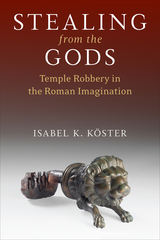 Stealing from the Gods: Temple Robbery in the Roman Imagination
Isabel K. Köster
University of Michigan Press, 2026 Stealing from the Gods investigates how authors writing between the first century BCE and second century CE addressed the issue of temple robbery or sacrilegium. As a self-proclaimed empire of pious people, the Romans viewed temple robbery as deeply un-Roman and among the worst of offenses. On the other hand, given the constant financial pressures of warfare and administration, it was inevitable that the Romans would make use of the riches stored in sanctuaries. In order to resolve this dilemma, the Romans distinguished sharply between acceptable and unacceptable removals of sacred property. When those who conducted themselves as proper Romans plundered the property of the gods, their actions were for the good of the state. In contrast, the temple robber was viewed as a stranger to the norms of Roman society and an enemy of the state.
Ancient authors including Cicero, Caesar, Livy, Appian, and Pausanias present isolated, grotesque individuals whose actions have no bearing on the conduct of Romans as a whole, rendering temple robbery not a matter of collective responsibility, but of individual moral failure. By revealing how narratives of temple robbery are constructed from a literary perspective and how they inform discourses about military conquest and imperial rule, Isabel K. Köster shines a new light on how the Romans coped with the more pernicious aspects of their empire.
Stealing Indian Women: Native Slavery in the Illinois Country
Carl J. Ekberg
University of Illinois Press, 2009 Based almost entirely on original source documents from the United States, France, and Spain, Carl J. Ekberg’s Stealing Indian Women provides an innovative overview of Indian slavery in the Mississippi Valley. His detailed study of a fascinating and convoluted criminal case involving various slave women and a métis (mixed-blood) woodsman named Céladon illuminates race and gender relations, Creole culture, and the lives of Indian slaves--particularly women--in ways never before possible.
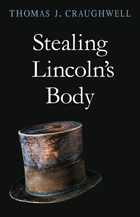 Stealing Lincoln’s Body
Thomas J. Craughwell
Harvard University Press, 2007 On the night of the presidential election in 1876, a gang of counterfeiters out of Chicago attempted to steal the entombed embalmed body of Abraham Lincoln and hold it for ransom. The custodian of the tomb was so shaken by the incident that he willingly dedicated the rest of his life to protecting the president’s corpse.
In a lively and dramatic narrative, Thomas J. Craughwell returns to this bizarre, and largely forgotten, event with the first book to place the grave robbery in historical context. He takes us through the planning and execution of the crime and the outcome of the investigation. He describes the reactions of Mary Todd Lincoln and Robert Todd Lincoln to the theft—and the peculiar silence of a nation. He follows the unlikely tale of what happened to Lincoln’s remains after the attempted robbery, and details the plan devised by the Lincoln Guard of Honor to prevent a similar abominable recurrence.
Along the way, Craughwell offers entertaining sidelights on the rise of counterfeiting in America and the establishment of the Secret Service to combat it; the prevalence of grave robberies; the art of nineteenth-century embalming; and the emergence among Irish immigrants of an ambitious middle class—and a criminal underclass.
This rousing story of hapless con men, intrepid federal agents, and ordinary Springfield citizens who honored their native son by keeping a valuable, burdensome secret for decades offers a riveting glimpse into late-nineteenth-century America, and underscores that truth really is sometimes stranger than fiction.
 Stealing My Religion: Not Just Any Cultural Appropriation
Liz Bucar
Harvard University Press, 2022 “Bucar’s sharp insights, shot through with humor and self-awareness, are exactly what we need the next time we reach over to borrow from someone else’s religion for our own therapeutic, political, or educational needs.”
—Gene Demby, cohost and correspondent for NPR’s Code Switch
“So finely written, so intelligent and fair, and laced with such surprising discoveries that it deserves a reader’s full attention…As the act of walking a religious pilgrimage does invite greater self-awareness…Stealing My Religion is now an essential part of that worthy endeavor.” —Kurt Caswell, Los Angeles Review of Books
“Lively in style and backed by solid, unobtrusive scholarship.” —Jonathan Benthall, Times Literary Supplement
“With interpretive subtlety and ethical vision, Liz Bucar explores the moral risk of intercultural theft. Stealing My Religion is a powerful intervention by a leading scholar of religion into the illiberal results of everyday religious exploitation. Highly recommended." —Kathryn Lofton, author of Consuming Religion
Liz Bucar unpacks the ethical dilemmas of a messy form of cultural appropriation: the borrowing of religious doctrines, rituals, and dress for political, economic, and therapeutic reasons. Does borrowing from another’s religion harm believers? Who can consent to such borrowings? Bucar sees religion as an especially vexing arena for appropriation debates because faiths overlap and imitate each other and because diversity within religious groups scrambles our sense of who is an insider and who is not. Indeed, if we are to understand why some appropriations are insulting and others benign, we have to ask difficult philosophical questions about what religions really are.
Stealing My Religion guides us through three revealing case studies—the hijab as a feminist signal of Muslim allyship, a study abroad “pilgrimage” on the Camino de Santiago, and the commodification of yoga in the West. We see why the Vatican can’t grant Rihanna permission to dress up as the pope, yet it’s still okay to roll out our yoga mats. Reflecting on her own missteps, Bucar comes to a surprising conclusion: the way to avoid religious appropriation isn’t to borrow less but to borrow more—to become deeply invested in learning the roots and diverse meanings of our enthusiasms.
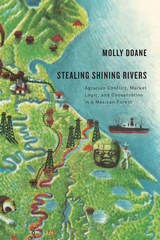 Stealing Shining Rivers: Agrarian Conflict, Market Logic, and Conservation in a Mexican Forest
Molly Doane
University of Arizona Press, 2012 Winner, Best Social Sciences Book (Latin American Studies Association, Mexico Section)
What happens to indigenous people when their homelands are declared by well-intentioned outsiders to be precious environmental habitats? In this revelatory book, Molly Doane describes how a rain forest in Mexico’s southern state of Oaxaca was appropriated and redefined by environmentalists who initially wanted to conserve its biodiversity. Her case study approach shows that good intentions are not always enough to produce results that benefit both a habitat and its many different types of inhabitants.
Doane begins by showing how Chimalapas—translated as “shining rivers”—has been “produced” in various ways over time, from a worthless wasteland to a priceless asset. Focusing on a series of environmental projects that operated between 1990 and 2008, she reveals that environmentalists attempted to recast agrarian disputes—which actually stemmed from government-supported corporate incursions into community lands and from unequal land redistribution—as environmental problems.
Doane focuses in particular on the attempt throughout the 1990s to establish a “Campesino Ecological Reserve” in Chimalapas. Supported by major grants from the World Wildlife Foundation (WWF), this effort to foster and merge agrarian and environmental interests was ultimately unsuccessful because it was seen as politically threatening by the state. By 2000, the Mexican government had convinced the WWF to redirect its conservation monies to the state government and its agencies.
The WWF eventually abandoned attempts to establish an “enclosure” nature reserve in the region or to gain community acceptance for conservation. Instead, working from a new market-based model of conservation, the WWF began paying cash to individuals for “environmental services” such as reforestation and environmental monitoring.
 Stealing the General: The Great Locomotive Chase and the First Medal of Honor
Russell S. Bonds
Westholme Publishing, 2007 Selected by Civil War Interactive as One of the Top Civil War Books of All Time
On April 12, 1862—one year to the day after Confederate guns opened on Fort Sumter and started the Civil War—a tall, mysterious smuggler and self-appointed Union spy named James J. Andrews and nineteen infantry volunteers infiltrated north Georgia and stole a steam engine called the General. Racing northward at speeds approaching sixty miles an hour, cutting telegraph lines and destroying track along the way, Andrews planned to open East Tennessee to the Union army, cutting off men and matériel from the Confederate forces in Virginia. If they succeeded, Andrews and his raiders could change the course of the war. But the General's young conductor, William A. Fuller, chased the stolen train first on foot, then by handcar, and finally aboard another engine, the Texas. He pursued the General until, running out of wood and water, Andrews and his men abandoned the doomed locomotive, ending the adventure that would soon be famous as The Great Locomotive Chase. But the ordeal of the soldiers involved was just beginning. In the days that followed, the "engine thieves" were hunted down and captured. Eight were tried and executed as spies, including Andrews. Eight others made a daring escape to freedom, including two assisted by a network of slaves and Union sympathizers. For their actions, before a personal audience with President Abraham Lincoln, six of the raiders became the first men in American history to be awarded the Medal of Honor—the nation's highest decoration for gallantry. Americans north and south, both at the time and ever since, have been astounded and fascinated by this daring raid. But until now, there has not been a complete history of the entire episode and the fates of all those involved. Based on eyewitness accounts, as well as correspondence, diaries, military records, newspaper reports, deposition testimony and other primary sources, Stealing the General: The Great Locomotive Chase and the First Medal of Honor by Russell S. Bonds is a blend of meticulous research and compelling narrative that is now considered to be the definitive history of "the boldest adventure of the war."
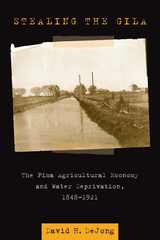 Stealing the Gila: The Pima Agricultural Economy and Water Deprivation, 1848-1921
David H. DeJong
University of Arizona Press, 2009 By 1850 the Pima Indians of central Arizona had developed a strong and sustainable agricultural economy based on irrigation. As David H. DeJong demonstrates, the Pima were an economic force in the mid-nineteenth century middle Gila River valley, producing food and fiber crops for western military expeditions and immigrants. Moreover, crops from their fields provided an additional source of food for the Mexican military presidio in Tucson, as well as the U.S. mining districts centered near Prescott. For a brief period of about three decades, the Pima were on an equal economic footing with their non-Indian neighbors.
This economic vitality did not last, however. As immigrants settled upstream from the Pima villages, they deprived the Indians of the water they needed to sustain their economy. DeJong traces federal, territorial, and state policies that ignored Pima water rights even though some policies appeared to encourage Indian agriculture. This is a particularly egregious example of a common story in the West: the flagrant local rejection of Supreme Court rulings that protected Indian water rights. With plentiful maps, tables, and illustrations, DeJong demonstrates that maintaining the spreading farms and growing towns of the increasingly white population led Congress and other government agencies to willfully deny Pimas their water rights.
Had their rights been protected, DeJong argues, Pimas would have had an economy rivaling the local and national economies of the time. Instead of succeeding, the Pima were reduced to cycles of poverty, their lives destroyed by greed and disrespect for the law, as well as legal decisions made for personal gain.
 Stealing the State: Control and Collapse in Soviet Institutions
Steven L. Solnick
Harvard University Press, 1998 What led to the breakdown of the Soviet Union? Steven Solnick argues, contrary to most current literature, that the Soviet system did not fall victim to stalemate at the top or to a revolution from below, but rather to opportunism from within. In three case studies--on the Communist Youth League, the system of job assignments for university graduates, and military conscription--Solnick makes use of rich archival sources and interviews to tell the story from a new perspective, and to employ and test Western theories of the firm in the Soviet environment. He finds that even before Gorbachev, mechanisms for controlling bureaucrats in Soviet organizations were weak, allowing these individuals great latitude in their actions. Once reforms began, they translated this latitude into open insubordination by seizing the very organizational assets they were supposed to be managing. Thus, the Soviet system, Solnick argues, suffered the organizational equivalent of a colossal bank run. When the servants of the state stopped obeying orders from above, the state's fate was sealed.
By incorporating economic theories of institutions into a political theory of Soviet breakdown and collapse, Stealing the State offers a powerful and dynamic account of the most important international political event of the later twentieth century.
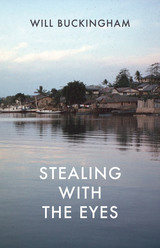 Stealing with the Eyes: Imaginings and Incantations in Indonesia
Will Buckingham
Haus Publishing, 2018 The Tanimbar Islands of Indonesia are remote and largely neglected by outsiders. Will Buckingham went there, as an anthropologist in training, with a mission. He hoped to meet three remarkable sculptors: the crippled Matias Fatruan, the buffalo hunter Abraham Amelwatin, and Damianus Masele, who was skilled in black magic, but who abstained out of Christian principle. Part memoir, part travelogue, Stealing with the Eyes is the story of these men, and also of how stumbling into a world of witchcraft, sickness, and fever led Buckingham to question the validity of his anthropological studies, and eventually to abandon them for good.
Through his encounters with these remarkable craftsmen—which in relating her also interweaves with Tanimbarese history, myth, and philosophy dating back to ancient times— we are shown the forces at play in all of our lives: the struggle between the powerful and the powerless, the tension between the past and the future, and how to make sense of a world that is in constant flux.
Steam & Cinders: The Advent of Railroads in Wisconsin
Axel Lorenzsonn
Wisconsin Historical Society Press, 2009 Based on the author’s extensive research into the early history of Wisconsin’s rails, Steam and Cinders chronicles the boom and bust of the first railroads in the state, from the charters of the 1830s to the farm mortgages of the 1850s and consolidation of the railroads on the eve of the Civil War. Featuring more than 75 period photographs, historic maps, and drawings, Steam and Cinders preserves the legacy of early Wisconsin railroading for railroad buffs and armchair historians alike.
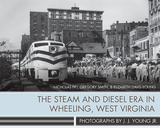 The Steam and Diesel Era in Wheeling, West Virginia: Photographs by J. J. Young Jr.
Nicholas Fry
West Virginia University Press, 2016 For nearly seventy years, John J. Young Jr. photographed railroads. With unparalleled scope and span, he documented the impact and beauty of railways in American life from 1936 to 2004. As a child during the Great Depression, J. J. Young Jr. began to photograph railroads in Wheeling, West Virginia. This book collects over one hundred fifty of those images—some unpublished until now—documenting the railroads of Wheeling and the surrounding area from the 1930s until the 1960s. The photographs within this book highlight the major railroads of Wheeling: the Baltimore & Ohio, the Pennsylvania, the Wheeling & Lake Erie, the Pittsburgh & West Virginia, the New York Central, and the industrial and interurban rail lines that crisscrossed the region. These images capture the routine activities of trains that carried passengers and freight to and from the city and its industries, as well as more unusual traffic, such as a circus-advertising car, the General Motors Train of Tomorrow, and the 1947 American Freedom Train.
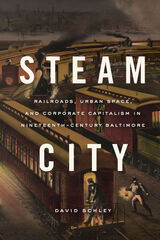 Steam City: Railroads, Urban Space, and Corporate Capitalism in Nineteenth-Century Baltimore
David Schley
University of Chicago Press, 2020 Anyone interested in the rise of American corporate capitalism should look to the streets of Baltimore. There, in 1827, citizens launched a bold new venture: a “rail-road” that would link their city with the fertile Ohio River Valley. They dubbed this company the Baltimore & Ohio Railroad (B&O), and they conceived of it as a public undertaking—an urban improvement, albeit one that would stretch hundreds of miles beyond the city limits.
Steam City tells the story of corporate capitalism starting from the street and moving outward, looking at how the rise of the railroad altered the fabric of everyday life in the United States. The B&O’s founders believed that their new line would remap American economic geography, but no one imagined that the railroad would also dramatically reshape the spaces of its terminal city. As railroad executives wrangled with city officials over their use of urban space, they formulated new ideas about the boundaries between public good and private profit. Ultimately, they reinvented the B&O as a private enterprise, unmoored to its home city. This bold reconception had implications not only for the people of Baltimore, but for the railroad industry as a whole. As David Schley shows here, privatizing the B&O helped set the stage for the rise of the corporation as a major force in the post-Civil War economy.
Steam City examines how the birth and spread of the American railroad—which brought rapid communications, fossil fuels, and new modes of corporate organization to the city—changed how people worked, where they lived, even how they crossed the street. As Schley makes clear, we still live with the consequences of this spatial and economic order today.
 Steamboat Modernity: Travel, Transport, and Social Transformation on the Lower Danube, 1830–1860
Constantin Ardeleanu
Central European University Press, 2024 Through a skillful combination of economic and cultural history, this book describes the impact on Moldavia and Wallachia of steam navigation on the Danube. The Danube route integrated the two principalities into a dense network of European roads and waterways. From the 1830s to the 1860s, steamboat transport transformed time and space for the areas that benefited from regular services. River traffic accelerated urban development along the Lower Danube and contributed directly to institutional modernization in one of Europe’s peripheries. Beyond technological advances and the transportation of goods on a trans-imperial waterway, steamboat travel revolutionized human interactions, too. The book offers a fascinating insight into the social and cultural milieu of the nineteenth century, drawing on first-hand accounts of Danube cruising. Describing the story of travelers who interacted, met, and visited the places they stopped, Constantin Ardeleanu creates a transnational history of travel up and down the Danube from Vienna to Constantinople. The pleasures and sometimes the travails of the travelers unfold against a backdrop of technical and economic transformation in the crucial period of modernization.
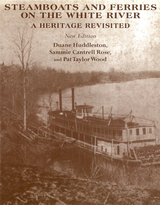 Steamboats and Ferries on the White River: A Heritage Revisited
Duane Huddleston
University of Arkansas Press, 1998 From the time the Waverly first steamed up the White River to Batesville from the Mississippi River in 1831, the haunting blast of river whistles signaled service, comfort, and delight for residents along this major Arkansas waterway. In a terrain that lacked good roads, steamboats contributed significantly to new economic development and settlement of the region. They carried animal hides, cotton, and rendered bear oil downriver to market and transported settlers, food staples, and manufactured goods upriver. For a hundred years these elegant boats were used for mail delivery, excursion parties, and freight hauling, eventually bringing about their own demise when they hauled in the material to build the railroads. Over 120 black-and-white photographs, sketches, and maps illustrate the colorful text. Interwoven with the history of steamboats is that of ferries keelboats, flatboats, and Civil War tinclads, all of which plied the White River in the 1800s and early 1900s. A keenly researched regional study, this book is nonetheless representative of conditions and activities on similar river systems in many parts of America during the same period. Steamboats and Ferries on the White River pays lasting tribute to the golden age of steam travel.
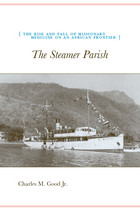 The Steamer Parish: The Rise and Fall of Missionary Medicine on an African Frontier
Charles M. Good
University of Chicago Press, 2003 In the mid-1800s, a group of High Anglicans formed the Universities' Mission to Central Africa (UMCA). Inspired by Dr. David Livingstone, they felt a special calling to bring the Church, education, and medical care to rural Africans. To deliver services across a huge, remote area, the UMCA relied on steamer ships that were sent from England and then reassembled on Lake Malawi. By the mid-1920s, the UMCA had built a chain of mission stations that spread across four hundred miles.
In The Steamer Parish, Charles M. Good Jr. traces the Mission's history and its lasting impact on public health care in south-central Africa-and shows how steam and medicine, together with theology, allowed the Mission to impose its will, indelibly, on hundreds of thousands of people. What's more, many of the issues he discusses-rural development, the ecological history of disease, and competition between western and traditional medicine-are as relevant today as they were 100 years ago.
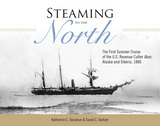 Steaming to the North: The First Summer Cruise of the US Revenue Cutter Bear, Alaska and Chukotka, Siberia, 1886
Katherine C. Donahue and David C. Switzer
University of Alaska Press, 2014 On a rugged frontier where the ocean was king, most laws came from those who ruled the sea—and few ships policed the western Arctic like the revenue cutter Bear. Commissioned into the organization that would eventually become the US Coast Guard, the Bear patrolled and charted the waters of Alaska and Siberia, bringing medical care, saving lives, and dealing out justice when needed. The ship’s crew and famous captain, the fiery Michael Healy, looked out for Natives and Americans alike in a time when Alaska was adjusting to its new status as a US territory.
Steaming to the North follows the Bear from May to October 1886 as it takes its first summer cruise from San Francisco up to Point Barrow and back again. This is the first book to exhibit the photographs taken by 3rd Lt. Charles Kennedy of New Bedford, introducing rarely seen photos of the last sail-and-steam whaling ships, capturing early interactions of Natives with white whalemen and explorers, and showing lives otherwise lost to time. Essays follow the logbook of the cruise and allow readers to vividly ride alongside the crew on a history-making voyage.
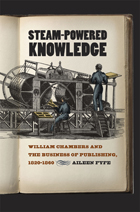 Steam-Powered Knowledge: William Chambers and the Business of Publishing, 1820-1860
Aileen Fyfe
University of Chicago Press, 2012 With the overwhelming amount of new information that bombards us each day, it is perhaps difficult to imagine a time when the widespread availability of the printed word was a novelty. In early nineteenth-century Britain, print was not novel—Gutenberg’s printing press had been around for nearly four centuries—but printed matter was still a rare and relatively expensive luxury. All this changed, however, as publishers began employing new technologies to astounding effect, mass-producing instructive and educational books and magazines and revolutionizing how knowledge was disseminated to the general public. In Steam-Powered Knowledge, Aileen Fyfe explores the activities of William Chambers and the W. & R. Chambers publishing firm during its formative years, documenting for the first time how new technologies were integrated into existing business systems. Chambers was one of the first publishers to abandon traditional skills associated with hand printing, instead favoring the latest innovations in printing processes and machinery: machine-made paper, stereotyping, and, especially, printing machines driven by steam power. The mid-nineteenth century also witnessed dramatic advances in transportation, and Chambers used proliferating railway networks and steamship routes to speed up communication and distribution. As a result, his high-tech publishing firm became an exemplar of commercial success by 1850 and outlived all of its rivals in the business of cheap instructive print. Fyfe follows Chambers’s journey from small-time bookseller and self-trained hand-press printer to wealthy and successful publisher of popular educational books on both sides of the Atlantic, demonstrating along the way the profound effects of his and his fellow publishers’ willingness, or unwillingness, to incorporate these technological innovations into their businesses.
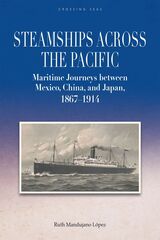 Steamships across the Pacific: Maritime Journeys between Mexico, China, and Japan, 1867–1914
Ruth Mandujano López
Hong Kong University Press, 2025 A unique investigation of the transpacific steam network of Mexico, Britain, China, and Japan.
During the nineteenth century, the Trans-Pacific world underwent a profound transformation due to the transition from sail to steam navigation that was accompanied by a reconfiguration of power. Steamships across the Pacific explores how diverse Mexican, British, Chinese, and Japanese interests participated, particularly during Porfirio Díaz’s presidency at the peak of Mexico’s participation, in the steam network. It investigates this network in its 1860s outset through a time of many revolutionary changes, including the World War, the Mexican Revolution, the opening of the Panama Canal, and the introduction of a new maritime technology—vessels run by oil. These transoceanic exchanges, generated within these new geographies of power, contributed not only to the formation of a Trans-Pacific region but also to the refashioning of the Mexican national imaginary.
With transnationalism, global, and migration studies as its main frameworks, this study draws upon a dazzling array of primary sources to center Mexico’s Trans-Pacific relations and the influence they wielded over the region at the height of the steamship period.
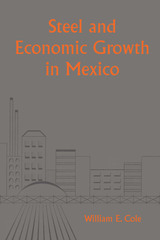 Steel and Economic Growth in Mexico
By William E. Cole
University of Texas Press, 1967 Iron ore is widely distributed over the world and has been mined from ancient times, but Mexico, with a good supply of ore, was a relative newcomer to the ranks of iron- and steel-producing nations. This distinctive book offers a history of the Mexican iron and steel industry through the 1960s. Archaeological evidence, the author states, shows that the indigenous peoples of Mexico had developed a technology of metallurgy—relying on gold, silver, copper, tin and bronze—before the arrival of the Spaniards, but those same peoples had no knowledge of iron. That knowledge and accompanying technology arrived with the conquistadores. Extremely slow development characterized the progress of iron mining in Mexico and until the twentieth century ore mining and metal forging continued to be handled on a small scale. By the turn of the century two occurrences had combined to give Mexico an embryonic steel market: the railroad grid had come to link Mexico’s diverse regions and Porfirio Díaz had used his personal power to eliminate interstate tariff barriers to trade. In 1900 the first integrated steel mill in Latin America was established in Monterrey—the city that was to become the capital of Mexico’s manufacturing sector. Forty years later, shortages of steel imports provided the motivation for the second stage of growth of the steel industry. Much of the book is devoted to the study of this period of growth. William E. Cole tells the whole story in this scholarly study, which has as its twofold purpose a complete examination of the iron and steel industry of Mexico and an assessment of the impact of that industry on other sectors of the economy. Much space is devoted to an analysis of the role of the Mexican government in promoting and regulating the steel industry and to discussion of the efficiency of the promotional tools employed by the government. Further, he studies the status of the industry in the 1960s, its production and its consumption, and presents a projection for the future.
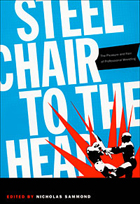 Steel Chair to the Head: The Pleasure and Pain of Professional Wrestling
Nicholas Sammond, ed.
Duke University Press, 2005 The antagonists—oiled, shaved, pierced, and tattooed; the glaring lights; the pounding music; the shouting crowd: professional wrestling is at once spectacle, sport, and business. Steel Chair to the Head provides a multifaceted look at the popular phenomenon of pro wrestling. The contributors combine critical rigor with a deep appreciation of wrestling as a unique cultural form, the latest in a long line of popular performance genres. They examine wrestling as it happens in the ring, is experienced in the stands, is portrayed on television, and is discussed in online chat rooms. In the process, they reveal wrestling as an expression of the contradictions and struggles that shape American culture. The essayists include scholars in anthropology, psychology, film studies, communication studies, and sociology, one of whom used to wrestle professionally. Classic studies of wrestling by Roland Barthes, Carlos Monsiváis, Sharon Mazer, and Henry Jenkins appear alongside original essays. Whether exploring how pro wrestling inflects race, masculinity, and ideas of reality and authenticity; how female fans express their enthusiasm for male wrestlers; or how lucha libre provides insights into Mexican social and political life, Steel Chair to the Head gives due respect to pro wrestling by treating it with the same thorough attention usually reserved for more conventional forms of cultural expression.
Contributors. Roland Barthes, Douglas L. Battema, Susan Clerc, Laurence de Garis, Henry Jenkins III, Henry Jenkins IV, Heather Levi, Sharon Mazer, Carlos Monsiváis, Lucia Rahilly, Catherine Salmon, Nicholas Sammond, Phillip Serrat, Philip Sewell
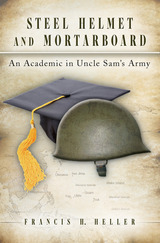 Steel Helmet and Mortarboard: An Academic in Uncle Sam's Army
Francis H. Heller
University of Missouri Press, 2009 As a young officer candidate in the Austrian army in 1938, Francis Heller put himself at risk by refusing to swear an oath of allegiance to Adolf Hitler. Had he stayed in Vienna, he would have been arrested by the Gestapo as a supporter of Austrian independence and an enemy of the Nazis. But he managed to escape into Czechoslovakia under cover of darkness. He subsequently made his way to America, where he finally pursued the academic career that military service had interrupted. Steel Helmet and Mortarboard is the story of this Austrian refugee who earned an American law degree in 1941 and set his sights on studying political science but a year later was drafted into the U.S. Army. In his second military career, Heller opted for service as an enlisted man in a combat unit. After basic training, he was assigned as a private in a regular army division. Then in a field artillery unit, he so distinguished himself in combat in the Pacific theater that he received a battlefield commission and went on to serve in the early months of the occupation of Japan—and on one assignment, escorting German nationals home from the Far East, found himself back in Europe and witnessing evidence of the horrors at Dachau that he himself had barely managed to escape. Heller’s account of those years recalls how an upper-middle-class émigré adjusted to military life while serving in such combat zones as New Guinea and the Philippines, then how he later resumed his academic career, earned his Ph.D., and went on to teach at the University of Kansas. But Heller’s return to academic life was anything but final: recalled to active duty for the Korean War, he also served in later years with the U.S. Army Command and General Staff College at Fort Leavenworth. After a lifetime of changing hats—mortarboard for helmet and back again—Heller, now in his nineties, has recorded his unique perceptions as an educated observer of the world. Steel Helmet and Mortarboard is an absorbing narrative of one individual’s experiences across a spectrum of personal and professional challenges, written with wry humor and insight that reflect a keen ability to master whatever circumstances life brings.
The Steel Industry of India
William A. Johnson
Harvard University Press India's expansion of its steel industry is an important part of its development plans. In careful detail, William Johnson examines the principal issues of analysis and policy involved: factors of production necessary for growth of the industry; whether programs for expansion of the industry are justified by demand; the extent to which India possesses, or lacks, a comparative advantage in the production of iron and steel; whether Indian steel mills have been economically located; and the role of government in stimulating growth both in the industry and, more generally, in the Indian economy.
Steel, State, and Labor: Mobilization and Adjustment in France
Anthony Daley
University of Pittsburgh Press, 1996
The creation of wealth depends on the capacity of economic actors to adapt to market changes. Such adaptation, in turn, poses fundamental questions about the distribution of resources. Daley investigates the interaction among business, labor, and the state in France in the second half of the twentieth century and reveals how political dynamics refract market pressures. He explains how and why profitability came at the expense of union mobilization, unemployment, and management autonomy, vast amounts of state aid, and less national control over industrial decision making.
Steel Titan: The Life of Charles M. Schwab
Robert Hessen
University of Pittsburgh Press, 1990
Business genius and hedonist, Charles Schwab entered the steel industry as an unskilled laborer and within twenty years advanced to the presidency of Carnegie Steel. He later became the first president of U.S. Steel and then founder of Bethlehem Steel. His was one of the most spectacular and curious success stories in an era of great industrial giants.
How did Schwab progress from day laborer to titan of industry? Why did Andrew Carnegie and J.P. Morgan select him to manage their multmillion-dollar enterprises? And how did he forfeit their confidence and lose the preseidency of U.S. Steel? Drawing upon previously undiscovered sources, Robert Hessen answers these questions in the first biography of Schwab.
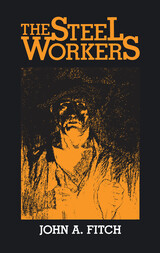 The Steel Workers
John Fitch
University of Pittsburgh Press, 1988
This classic account of the worker in the steel industry during the early years of the twentieth century combines the social investigator’s mastery of facts with the vivid personal touch of the journalist. From its pages emerges a finely etched picture of how men lived and worked in steel.
In 1907-1908, when John Fitch spent more than a year in Pittsburgh interviewing workers, steel was the master industry of the region. It employed almost 80,000 workers and virtually controlled social and civic life.
Fitch observed steel workers on the job, and he describes succinctly the prevailing technology of iron and steelmaking: the blast furnace crews, the puddlers and rollers; the crucible, Bessemer, and open hearth processes. He examined the health problems and accidents which resulted from the pressure of long hours, hazardous machinery, and speed-ups in production. He also anaylzed the early experiments in welfare capitolism, such as accident prevention and compensation, and pensions.
One of the six volumes in the famous Pittsburgh Survey (1909-1914), The Steel Workers remains a readable and timeless account of labor conditions in the early years of the steel industry. An introduction by the noted historian Roy Lubove places the book in political and historical context and makes it especially suitable for classroom use.
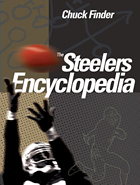 The Steelers Encyclopedia
Chuck Finder
Temple University Press, 2012 The pitiful Pittsburgh Pirates, established in 1933 by the inimitable “Chief,” Art Rooney Sr defied both belief and the odds by becoming the six-time Super Bowl champions that the Pittsburgh Steelers are today. They began as lovable losers, the Pirates, degenerating into the Same Old Steelers, the Steagles, and the Car-Pitts, but wound up one of professional sports’ most iconic franchises. In The Steelers Encyclopedia, veteran sportswriter Chuck Finder nimbly chronicles this remarkable team from conception to Immaculate Reception to today. From turnovers to the Terrible Towel, Finder interviews nearly 100 ex-Steelers, coaches, front-office personnel, and fans, and includes more than 150 photographs—many of them never published before. In The Steelers Encyclopedia, fans will— Read about wild behind-the-scenes tales such as: • Jack Lambert, the gap-toothed linebacker considered the game’s scariest player, screaming down a hallway clad in his undies, boots, and cowboy hat because he was afraid of a teammate’s prank snake • One Super Bowl team making an unscheduled pit stop because they, um, imbibed too many celebratory refreshments after leaving the stadium • Driving with the club’s legendary founding father, Art Rooney Sr., to his day job—the horse track Get a look at the stars, the games, and the franchise: • New details about the Rooneys, the sale of their team, the difficult times and decisions they faced in surviving, then thriving • Characters ranging from bonus-baby Byron “Whizzer” White, a future U.S. Supreme Court Justice, to league MVPs Bill Dudley, Terry Bradshaw, and Johnny Unitas • The parade of Hall of Fame ex-Steelers that continues in 2012 with Dermontti Dawson and Jack Butler . . . and includes one Canton honoree who was almost moved to a different position and another whose career took off upon ditching his glasses for contacts • The nasal voice that provided the team’s historic soundtrack and belonged to the inventor of the Terrible Towel, Myron Cope Learn the Steelers by the numbers: • A year-by-year history of the team from 1933 to the present, with stats from each season and each Super Bowl • Chapters about each Super Bowl and the scouting staff responsible for building champions
• Individual profiles of every Steelers head coach and more than100 Steelers players—from Jerome Bettis to Rod Woodson
• Revealing the man who wrote the Steelers polka, the kid who named the Steel Curtain, and the first weightlifting coach of the Super Steelers
• The cheerleaders—both female and male
For everyone who lives in Steeler Nation, this is the most comprehensive history of football’s most beloved franchise, the Black and Gold.
Steelmasters and Labor Reform, 1886-1923
Gerald G. Eggert
University of Pittsburgh Press, 1981 Gerald G. Eggert provides a fascinating inside view of top steel officials arguing their positions on various labor reforms—stock purchase plans, employer liability, employee representation, and elimination of the twelve-hour shift and seven-day work week, during the late eighteen and early nineteenth century.
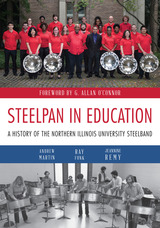 Steelpan in Education: A History of the Northern Illinois University Steelband
Andrew R. Martin, Ray Funk, and Jeannine Remy
Northern Illinois University Press, 2017 Founded by Al O’Connor in 1973, the steelband program at Northern Illinois University was the first of its kind in the United States. Thanks to the talent and dedication of O'Connor, Cliff Alexis, Liam Teague, Yuko Asada, and a plethora of NIU students and staff members, the program has flourished into one of the most important in the world. Having welcomed a variety of distinguished guest artists and traveled to perform in locales around the US and in Taiwan, Trinidad, and South Korea, the NIU Steelband has achieved international acclaim as a successful and unique university world music program.
This fascinating history of the NIU Steelband traces the evolution of the program and engages with broader issues relating to the development of steelband and world music ensembles in the American university system. In addition to investigating its past, Steelpan in Education looks to the future of the NIU Steelband, exploring how it attracts and trains new generations of elite musicians who continue to push the boundaries of the steelpan. This study will appeal to musicians, music educators, ethnomusicologists, and fans of the NIU Steelband.
Steelton: Immigration and Industrialization, 1870–1940
John Bodnar
University of Pittsburgh Press, 1990 A study of the immigrants who flocked to this Central Pennsylvania steel town in the late nineteenth century in search of employment. Comprised primarily of Southern blacks and Eastern European immigrants, they formed the lower class of this town. Analyzes the social structure and dominance of the white, Anglo-Saxon, Protestant elite.
STEELWORKERS IN AMERIA: THE NONUNION ERA
David Brody
University of Illinois Press, 1960 This edition of one of the seminal books in labor includes a new preface
as well as a symposium on the book in which seven prominent historians
discuss its significance and its place in the historiography of labor.
"Steelworkers in America has emerged and remained one of
the few genuinely classic works of U.S. labor history--one of the axiomatic
starting points for any understanding of the new labor history."
-- Roy Rosenzweig
"The vision of Steelworkers has survived these thirty years
and continues to inspire new work in labor history." -- Lizabeth
Cohen
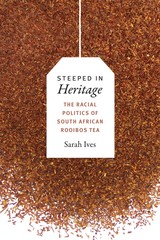 Steeped in Heritage: The Racial Politics of South African Rooibos Tea
Sarah Ives
Duke University Press, 2017 South African rooibos tea is a commodity of contrasts. Renowned for its healing properties, the rooibos plant grows in a region defined by the violence of poverty, dispossession, and racism. And while rooibos is hailed as an ecologically indigenous commodity, it is farmed by people who struggle to express “authentic” belonging to the land: Afrikaners, who espouse a “white” African indigeneity, and “coloureds,” who are characterized either as the mixed-race progeny of “extinct” Bushmen or as possessing a false identity, indigenous to nowhere. In Steeped in Heritage Sarah Ives explores how these groups advance alternate claims of indigeneity based on the cultural ownership of an indigenous plant. This heritage-based struggle over rooibos shows how communities negotiate landscapes marked by racial dispossession within an ecosystem imperiled by climate change and precarious social relations in the postapartheid era.
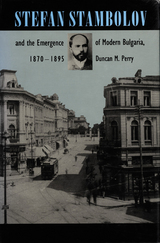 Stefan Stambolov and the Emergence of Modern Bulgaria, 1870-1895
Duncan M. Perry
Duke University Press, 1993 Little known in the United States but increasingly important in the affairs of southeastern Europe, Bulgaria is a land with a stormy history. No less stormy is the story of Stefan Stambolov, who ruled the country during some of its most turbulent years. Duncan M. Perry's biography of Stambolov, the first in English in the twentieth century, illuminates the life, motives, and personality of this major figure.
Perry begins with Bulgaria in the tumultuous years immediately following its founding in 1878. After the ousting of the country's first prince, Stambolov enters the stage as the fiery young lawyer who restored him to the throne. Although the prince promptly abdicated, Stambolov stepped into the breach and led the nation during the interregnum. Perry traces this patriotic politician's transformation into an authoritarian prime minister. He shows how Stambolov stabilized the Bulgarian economy and brought relative security to the land—but not without cost to himself and his regime. Perry depicts a man whose promotion of Bulgaria's independence exacted its price in individual rights, a ruler whose assassination in 1895 was the cause of both rejoicing and sorrow.
Stambolov thus emerges from these pages as a complex historical figure, an authoritarian ruler who protected his country's liberty at the cost of the people's freedom and whose dictatorial policies set Bulgaria upon a course of stability and modernization. An afterword compares the Bulgarian liberation era of Stambolov with the communist-era dictator, Todor Zhikov, analyzing similarities and differences.
 The Steger Homestead Kitchen: Simple Recipes for an Abundant Life
Will Steger
University of Minnesota Press, 2021 Personal and simple, earthy and warm—recipes and stories from the Steger Wilderness Center in Minnesota’s north woods
The Steger Homestead Kitchen is an inspiring and down-to-earth collection of meals and memories gathered at the Homestead, the home of the Arctic explorer and environmental activist Will Steger, located in the north woods near Ely, Minnesota. Founded in 1988, the Steger Wilderness Center was established to model viable carbon-neutral solutions, teach ecological stewardship, and address climate change. In her role as the Homestead’s chef, Will’s niece Rita Mae creates delicious and hearty meals that become a cornerstone experience for visitors from all over the world, nourishing them as they learn and share their visions for a healthy and abundant future. Now, with this new book, home chefs can make Rita Mae’s simple, hearty meals to share around their own homestead tables. Interwoven with dozens of mouth-watering recipes—for generous breakfasts (Almond Berry Griddlecakes), warming lunches (Northwoods Mushroom Wild Rice Soup), elegant dinners (Spatchcock Chicken with Blueberry Maple Glaze), desserts (Very Carrot Cake), and snacks (Steger Wilderness Bars)—are Will Steger’s exhilarating stories of epic adventures exploring the Earth’s most remote and endangered regions. The Steger Homestead Kitchen opens up the Wilderness Center’s hospitality, its heart and hearth, providing the practical advice and inspiration to cook up a good life in harmony with nature.
Stegner: Conversations On History And Literature
Wallace Stegner
University of Nevada Press, 1996 Wallace Stegner, a major American novelist and conservationist, is interviewed by Etulain, a renowned Western scholar, in a series of discussions. Originally published in 1983 and entitled Conversations with Wallace Stegner on Western History and Literature, this book is the ultimate Stegner interview. New foreword by Stewart Udall.
A Stein Reader
Gertrude Stein
Northwestern University Press, 1993 This important collection presents Gertrude Stein for the first time in her brilliant modernity. Ulla E. Dydo's textual scholarship demonstrates Stein's constant questioning of convention, and A Stein Reader changes the balance of work in print, concentrating on Stein's experimental work and including many key works that are virtually unknown or unavailable.
A Stein Reader includes unpublished work, such as the portrait "Article"; shows the astonishing stylistic change in the neglected "A Long Gay Book"; draws attention to the many unknown plays such as "Reread Another;" and offers fascinating portraits of Matisse, Picasso, and Sitwell. Illuminating headnotes bring out connections between pieces and provide invaluable keys to Stein's motifs and thought patterns.
Steinbeck and the Environment: Interdisciplinary Approaches
Susan F. Beegel
University of Alabama Press, 2007 This interdisciplinary collection of essays explores in-depth a topic previously neglected by scholars: John Steinbeck's early continuing preoccupation with ecology and marine biology and the effect of that interest on his writings. Written by scholars from various disciplines, the essays offer a dynamic contribution to the study of John Steinbeck by considering his writings from an environmental perspective. They reveal Steinbeck as a prophet that was ahead of his time and supremely relevant to our own.
 Steinbeck’s Uneasy America: Rereading “Travels with Charley”
Edited by Barbara A. Heavilin and Susan Shillinglaw
University of Alabama Press, 2025 A road trip through Steinbeck’s America—revisited, reimagined, and reinterpreted. Steinbeck’s Uneasy America is the first collection of critical scholarship devoted to Travels with Charley in Search of America, John Steinbeck’s best-selling, late-career travel memoir. In 1960, Steinbeck was a renowned man of American letters. Many considered him America’s troubadour of ordinary people, the conscience of the country. But weakened by two small strokes and anxious that he had lost touch with America, he embarked on a cross-country road trip accompanied by his wife’s standard poodle, Charley. Two years later, he published Travels with Charley to popular acclaim and robust sales. Throughout this narrative, Steinbeck insists that all of our perceptions are “warped” by personality, history, and society. And while this hybrid and experimental book has long been accepted as an accurate account of his journey, journalists and scholars agree that the narrative is part factual, part fiction—America as seen through Steinbeck’s particular “warp.” The work is long overdue for scholarly assessment. Steinbeck’s Uneasy America explores three main topics. Part 1 explores genre and form to consider the degree to which the work is fiction or nonfiction. Part 2 assesses Steinbeck’s increasingly bleak assessment of America—almost a jeremiad that warns citizens of ecological excess and political apathy. Part 3 focuses on Travels with Charley as a road text, travel adventure, and literary influence. This volume’s authors offer rich scholarly insights and a wealth of stories, facts, and anecdotes about Steinbeck and the adventures and misadventures he and Charley met on the road. Lively and groundbreaking, the collection both enlightens and enlivens discussions of Steinbeck and of the twentieth-century American book world.
 Stella Manhattan
Silviano Santiago
Duke University Press, 1994 Twice the winner of the Brazilian national book award, Silviano Santiago caused a sensation in 1985 with the publication of Stella Manhattan, a story of sexual scandal and political intrigue. Set in the Brazilian exile community in New York City in the late 1960s, this noir novel is an electrifying adventure story of a young gay Brazilian man trying to make a go of it in New York.
After being forced from his native country by an unforgiving father who embodies the authoritarian temper of the Brazilian dictatorship and is embarrassed by his son’s homosexuality and transvestism, Stella Manhattan, alter ego of Eduardo da Costa e Silva, lands a job in the Brazilian consulate with the help of his father’s friend, Colonel Valdevinos Vianna. Eduardo is also recruited by Vianna to help him bring his own alter ego, the sadomasochist Black Widow, out of the closet. Transformed by black leather, the Black Widow cruises the streets and bars of New York in search of American flesh. Surrounding the relationship between these two men is a group of Brazilian guerrillas who attempt to press Eduardo into their service in order to entrap the colonel. The guerrillas are at the center of a network of revolutionaries, from the Cubans to the Black Panthers and the Young Lords. Virtually apolitical, Eduardo/Stella is drawn by desire into the conflict between the Brazilian government and its communist opposition.
Eduardo also gets caught in the designs of other memorable characters of various sexual and political persuasions: the reactionary professor Aníbal, confined to a wheelchair, who enjoys watching his wife Leila make love with men she picks up on the street; and Paco, alias La Cucaracha, a flamboyant queen, a rabid anti-Castro Cuban exile, and the most sympathetic of this gallery of outcasts.
Working through two complex themes—politics and sex—Santiago sets the action in New York to emphasize the interaction of the seemingly contradictory impulses of liberation and Americanization that Brazil underwent in the late 1960s. As in Manuel Puig’s Kiss of the Spider Woman, political and sexual liberation cut two ways—neither one necessarily compatible with the other. Exploring the complexities of repression that affect all forms of identity, Santiago mingles tragedy and farce as international intrigues are played out in New York’s Latino and black neighborhoods, and the genteel world of international diplomacy is thrust into the milieu of urban gay street life.
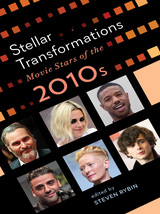 Stellar Transformations: Movie Stars of the 2010s
Steven Rybin
Rutgers University Press, 2022 Stellar Transformations: Movie Stars of the 2010s circles around questions of stardom, performance, and their cultural contexts in ways that remind us of the alluring magic of stars while also bringing to the fore the changing ways in which viewers engaged with them during the last decade. A salient idea that guides much of the collection is the one of transformation, expressed in these pages as the way in which post-millennial movie stars are in one way or another reshaping ideas of performance and star presence, either through the self-conscious revision of aspects of their own personas or in redirecting or progressing some earlier aspect of the culture. Including a diverse lineup of stars such as Oscar Isaac, Kristen Stewart, Tilda Swinton, and Tyler Perry, the chapters in Stellar Transformations paint the portrait of the meaning of star images during the complex decade of the 2010s, and in doing so will offer useful case studies for scholars and students engaged in the study of stardom, celebrity, and performance in cinema.
 Stem Cell Research: New Frontiers in Science and Ethics
Nancy E. Snow
University of Notre Dame Press, 2003 “This is an excellent collection. It is a very thoughtful blend of science, ethics, and public policy. People reading this book will receive an outstanding introduction and analysis of the critical issues surrounding the embryonic stem cell debate.” —Thomas A. Shannon, Worcester Polytechnic Institute
This timely volume brings together essays by an internationally distinguished and diverse group of scholars. Contributors thoughtfully explore the ethical, public policy, and scientific implications of embryonic and adult stem cell research. Part one of the book offers a variety of scientific and public policy perspectives, including essays on stem cell plasticity and using umbilical cord blood as an alternative source of pluripotent stem cells. Part two vigorously examines the ethics of stem cell research and considers issues of social justice, morality, and public policy. Scientific alternatives, a natural law perspective regarding federal funding, and a discussion of the possible moral complicity of Catholic researchers are among the distinctive contributions made to the stem cell research debate by this collection. The objective and balanced discussions contained in this volume serve as an accessible introduction to the bioethical questions, issues, and problems surrounding stem cell research.
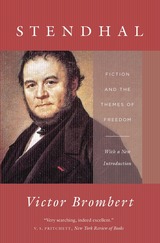 Stendhal: Fiction and the Themes of Freedom
Victor Brombert
University of Chicago Press, 2017 Victor Brombert is a lion in the study of French literature, and in this classic of literary criticism, he turns his clear and perspicacious gaze on the works of one of its greatest authors—Stendhal. Best remembered for his novels The Red and the Black and The Charterhouse of Parma, Stendhal is a writer of extraordinary insight into psychology and the many shades of individual and political liberty. Brombert has spent a lifetime reading and teaching Stendhal and here, by focusing on the seemingly contradictory themes of inner freedom and outer constraint within Stendhal’s writings, he offers a revealing analysis of both his work and his life.
For Brombert, Stendhal’s work is deeply personal; elsewhere, he has written about the myriad connections between Stendhal’s ironic inquiries into identity and his own boyhood in France on the brink of World War II. Proceeding via careful and nuanced readings of passages from Stendhal’s fiction and autobiography, Brombert pays particular attention to style, tone, and meaning. Paradoxically, Stendhal’s heroes often feel most free when in prison, and in a statement of stunning relevance for our contemporary world, Brombert contends that Stendhal is far clearer than any writer before him on the “crisis and contradictions of modern humanism that . . . render political freedom illusory.” Featuring a new introduction in which Brombert explores his earliest encounters with Stendhal—the beginnings of his “affair” during a year spent as a Fulbright scholar in Rome—Stendhal remains a spirited, elegant, and resonant account.
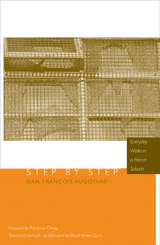 Step by Step: Everyday Walks in a French Urban Housing Project
Jean-Francois Augoyard
University of Minnesota Press, 2007 The street riots that swept through France in the fall of 2005 focused worldwide attention on the plight of the country’s immigrants and their living conditions in the suburbs many of them call home. These high-density neighborhoods were constructed according to the principles of functionalist urbanism that were ascendant in the 1960s. Then, as now, the disparities between the planners’ utopian visions and the experiences of the inhabitants raised concerns, generating a number of sociological studies of the “new towns.” One of the most sophisticated and significant of these critiques is Jean-François Augoyard’s Step by Step, which was originally published in France in 1979 and famously influenced Michel de Certeau’s analysis of everyday life. Its examination of social life in the rationally planned suburb remains as cogent and timely as ever. Step by Step is based on in-depth interviews Augoyard conducted with the inhabitants of l’Arlequin, a new town on the outskirts of Grenoble. A resident of l’Arlequin himself, Augoyard sought to understand how his neighbors used its passages, streets, and parks. He begins with a detailed investigation of the inhabitants’ daily walks before going on to consider how the built environment is personalized through place-names and shared memories, the ways in which sensory impressions define the atmosphere of a place and how, through individual and collective imagination, residents transformed l’Arlequin from a concept into a lived space. In closely scrutinizing everyday life in l’Arlequin, Step by Step draws a fascinating portrait of the richness of social life in the new towns and sheds light on the current living conditions of France’s immigrants. Jean-François Augoyard is professor of philosophy and musicology and doctor of urban studies at the Center for Research on Sonorous Space and the Urban Environment at the School of Architecture of Grenoble. David Ames Curtis is a translator, editor, writer, and citizen activist. Françoise Choay is professor emeritus in the history and theory of architecture at the University of Paris VIII and Cornell University and the author of numerous books and essays.
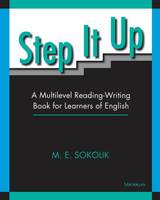 Step It Up: A Multilevel Reading-Writing Book for Learners of English
M. E. Sokolik
University of Michigan Press, 2005 Step It Up recognizes the unique opportunities that mixed-level classes provide for students to challenge themselves, to learn to communicate with a wide variety of speakers, and to fill in the gaps in their learning, regardless of their individual proficiencies. Step It Up is a time-saver for teachers of multilevel classes.
Each chapter focuses on a different academic discipline (education, art, history, business, geology, ecology, nutrition, language and culture, and literature). Chapters include three readings at three fluency levels-called the First Step (intermediate), Second Step (high-intermediate to low-advanced), and Third Step (advanced). Corresponding vocabulary development exercises, comprehension questions, group discussion questions, and wrap-up activities encourage students to work at their own learning levels even as they are asked to interact with the group and share the expertise that they have gained from the material.
Step It Up can also address the needs of learners who don't fall into the traditional categories and who will benefit from activities at different levels to help fill in gaps of their knowledge of English.
 Stepchildren of Nature: Krafft-Ebing, Psychiatry, and the Making of Sexual Identity
Harry Oosterhuis
University of Chicago Press, 2000 Psychiatrist Richard von Krafft-Ebing (1840-1902) played a key role in the construction of the modern concept of sexuality. As the author of the famous Psychopathia sexualis, he named and classified virtually all nonprocreative sexualities, synthesizing knowledge on sadism, masochism, fetishism, homosexuality, and exhibitionism. His influence on the study of sexuality cannot be overstated, but it is often misunderstood. In the wake of Michel Foucault's influential sexual histories, Krafft-Ebing is often maligned as a contributor to the repressed Victorian construction of sexual deviancy.
But in this powerful new cultural history Harry Oosterhuis invites us to reconsider the quality and extent of Krafft-Ebing's influence. Revisiting the case studies on which Krafft-Ebing based his findings, and thus drawing on the voices of his patients and informants, Oosterhuis finds that Krafft-Ebing was not the harsh judge of perversions that we think he was. He argues that Krafft-Ebing had a deep appreciation of the psyche, and that his work reveals an attempt to separate sexual deviancies from ideas of immorality. In the tradition of Freud, then, Krafft-Ebing should stand not as a villain, but as a contributor to more modern notions of sexual identity.
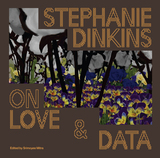 Stephanie Dinkins: On Love & Data
Srimoyee Mitra
University of Michigan Press, 2024 Stephanie Dinkins is renowned for her critical investigations into artificial intelligence and machine learning systems as they intersect race, gender, and our future histories. By using her training in documentary practices as a photo-based artist, she creates inclusive platforms for dialogue and action toward building technological ecosystems and datasets that are equitable, accessible, and transparent. Her immersive installations, community-based workshops, and public talks seek audience participation and engagement in a way that pushes the boundaries of new media and socially engaged art practices in the 21st century.
Stephanie Dinkins: On Love & Data brings together nationally renowned curators and theorists who draw from methodologies of art criticism, social practice, new media theory, and critical studies to offer an in-depth analysis of key installations in Dinkins’s survey exhibition. The book also includes an important essay by Stephanie Dinkins on her concept of Afro-now-ism in which she expands on her theoretical framework and positionality as a Black new media artist in the 21st century. Dinkins’s artistic research transcends the boundaries of visual art to challenge and expose the bias and inequities of caste, race, and gender, which are encoded within digital systems on which governance, healthcare, and security infrastructures in the United States are based.
 Stephen A. Douglas
Robert W. Johannsen
University of Illinois Press, 1997 Winner of the Francis Parkman Prize of the Society of American Historians
For the quarter-century before 1860 Stephen A. Douglas was a dominant
figure on the American political scene, far outshadowing Abraham Lincoln.
This first paperback printing of Robert Johannsen's authoritative biography
features a new preface.
"At once a work of enormous scholarship and of deep insight. Here,
for the first time, is the full story of a great career, told with such
skill that we can now understand why Abraham Lincoln found the 'Little
Giant' the most formidable political rival he ever faced." -- David
H. Donald, author of Lincoln and two-time winner of the Pulitzer
Prize
"Well-organized and marvelously detailed. . . . The book demonstrates
the virtues of large-scale, straightforward narrative biography at its
best. Its completeness and objectivity will make it the standard authority
for many years to come." -- Richard N. Current, The New York Times
Book Review
"Superb. . . . Will doubtless stand as the definitive biography
of Stephen A. Douglas for this generation." -- Hans L. Trefousse,
The Journal of American History
"An impressive work--impressive in scope, in research, and in maturity
of understanding. . . . Johannsen has constructed a biography that is
rich in detail and full of conviction." -- James Z. Rabun, The
Journal of Southern History
"Should take its place in the tradition of magisterial biographies
. . . in which so much of the best writing on American history is to be
found." -- Harry V. Jaffa, National Review
"The research is amazingly exhaustive and the writing is unusually
readable. . . . Outstanding biography of a quality not often matched."
-- LeRoy H. Fischer, Manuscripta
Supported by the Dickerson Fund of the University of Illinois at Urbana-Champaign
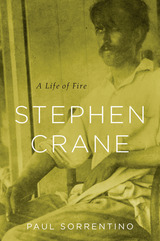 Stephen Crane: A Life of Fire
Paul Sorrentino
Harvard University Press, 2014 With the exception of Poe, no American writer has proven as challenging to biographers as the author of The Red Badge of Courage. Stephen Crane’s short, compact life—“a life of fire,” he called it—continues to be surrounded by myths and half-truths, distortions and outright fabrications. Mindful of the pitfalls that have marred previous biographies, Paul Sorrentino has sifted through garbled chronologies and contradictory eyewitness accounts, scoured the archives, and followed in Crane’s footsteps. The result is the most complete and accurate account of the poet and novelist written to date.
Whether Crane was dressing as a hobo to document the life of the homeless in the Bowery, defending a prostitute against corrupt New York City law enforcement, or covering the historic charge up the San Juan hills as a correspondent during the Spanish-American War, his adventures were front-page news. From Sorrentino’s layered narrative of the various phases of Crane’s life a portrait slowly emerges. By turns taciturn and garrulous, confident and insecure, romantic and cynical, Crane was a man of irresolvable contradictions. He rebelled against tradition yet was proud of his family heritage; he lived a Bohemian existence yet was drawn to social status; he romanticized women yet obsessively sought out prostitutes; he spurned a God he saw as remote yet wished for His presence.
Incorporating decades of research by the foremost authority on Crane’s work, Stephen Crane: A Life of Fire sets a new benchmark for biographers.
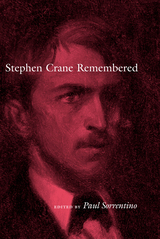 Stephen Crane Remembered
Edited by Paul Sorrentino
University of Alabama Press, 2006 Revealing episodes in the life of the elusive writer, as told by acquaintances This book collects reminiscences by contemporaries, friends, and associates of Stephen Crane that illuminate the life of this often misunderstood and misrepresented writer. Although Crane is widely regarded as a major American author, conclusions about his life, work, and thought remain obscure due to the difficulties in separating fact from fiction. His first biographer recorded mostly vague impressions and, to mythologize his subject, invented a multitude of the episodes and letters used in his account of Crane’s life. Subsequent biographies were either cursory summations or compendiums of verifiable facts. Crane himself was both reclusive and mercurial, protective of his inner life while projecting a variety of personae to suit others.
A flamboyant personality and close friend of writers such as William Dean Howells, Henry James, and Joseph Conrad, Crane made telling impressions on his contemporaries. They often constitute the best assessments of Crane’s own personality and work. The 90 reminiscences gathered here offer a much-needed account of Crane’s life from a variety of viewpoints, as well as important information about the contributors themselves.
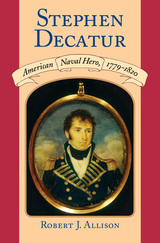 Stephen Decatur: American Naval Hero, 1779-1820
Robert J. Allison
University of Massachusetts Press, 2005 Born to a prominent Philadelphia family in 1779, Stephen Decatur at age twenty-five became the youngest man ever to serve as a captain in the U.S. Navy. His intrepid heroism, leadership, and devotion to duty made him a perfect symbol of the aspirations of the growing nation. Leading men to victory in Tripoli, the War of 1812, and the Algerian war of 1815, and coining the phrase "Our country, right or wrong," Decatur created an enduring legend of bravery, celebrated in poetry, song, paintings, and the naming of dozens of towns—from Georgia to Alabama to Illinois.
After the War of 1812, Decatur moved to Washington to help direct naval policy. His close friendships with James Madison, John Quincy Adams, and other political leaders soon made him a rising star in national politics. He and his wife Susan made their elegant home on Lafayette Square near the White House a center of Washington society. The capital and the entire nation were shocked in 1820 when Decatur died at the age of forty-one in a duel with a rival navy captain.
In this carefully researched and well-written biography, historian Robert Allison tells the story of Decatur's eventful life at a time when the young republic was developing its own identity—when the American people were deciding what kind of nation they would become. Although he died prematurely, Decatur played a significant role in the shaping of that national identity.
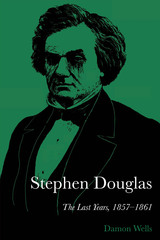 Stephen Douglas: The Last Years, 1857–1861
By Damon Wells
University of Texas Press, 1971 Stephen Douglas and the old Union lived out their last years together. It was the most critical time in the life of both the Illinois senator and his country. During most of the period 1857–1861 the American nation could still choose between adjustment of its sectional differences and civil war, and the man they called the Little Giant seemed the one statesman most likely to lead the country onto a course of compromise and reconciliation. But Douglas’ intense involvement with the American political scene—his great accomplishments in enacting the Compromises of 1850 and 1854, and his victory in the senatorial campaign of 1858—tended at times to disguise a growing alienation from the mainstream of American political life. By 1857 that alienation had reached acute proportions. In part, Douglas fell victim to his own virtues. He sought to be a nationalist in an age of sectionalism; he preached the value of compromise when most Americans questioned its worth. In other respects, Douglas’ political failures are less excusable. His attempt to convert an apparently amoral attitude toward slavery into a principle—popular sovereignty—found him dismissed by antislavery citizens as immoral and by proslavery citizens as unreliable. For too long, Douglas, professing to “care not” about the future of slavery, overlooked how much Americans could care once their consciences had been aroused or their way of life supposedly threatened. Douglas failed to win the presidential campaign of 1860 largely because he could satisfy neither the proponents nor the enemies of slavery. Yet if the last years of Douglas’ life were marred by failure, he was not ultimately the tragic figure some historians have suggested. During the campaign of 1860 a profound change began to take place in Stephen Douglas. The outmoded nationalism he had preached for so long began to give way to Unionism. In his eventual support of Lincoln and his defense of the Union, Douglas at last found a policy worthy of his great talents. Damon Wells first became interested in Stephen Douglas in 1959 after seeing a Broadway dramatization of the Lincoln-Douglas Debates. Later, his studies convinced him that playwright and historian alike were often unfair to Douglas. If Lincoln was to be a hero, then Douglas had to be cast as a villain. This study fills the need for a fresh and dispassionate look at Douglas and provides a fairer assessment than can be reached by simply endorsing contradictory views of apologists and critics. It places particular emphasis on the Little Giant’s struggle with President James Buchanan, the debates with Lincoln, the presidential campaign of 1860, Douglas’ complex relationship with the South, and a careful analysis of the elusive and at times exasperating principle of popular sovereignty.
 Stephen King on the Big Screen
Mark Browning
Intellect Books, 2009 The Shining. Carrie. Misery. These are just a few of the film adaptations that have been made from the terrifying and eerie work of novelist and short story writer Stephen King. It is nearly impossible to think of another author who has inspired so many, and such diverse filmmakers—yet there has never before been a work by a film specialist that focused solely on Stephen King. Mark Browning, in Stephen King on the Big Screen, takes a film-by-film approach to exploring why some adaptations of King’s work are more successful than others. Browning discusses every single film adaptation given a global cinematic release—including films by such well-known directors as Stanley Kubrick, George A. Romero, and David Cronenberg. His is the first book to consider in detail Sleepwalkers, Dreamcatcher, and 1408 as well as the much-neglected portmanteau films and touchstones like The Shawshank Redemption and The Green Mile. In a highly readable and engaging style, Browning examines how different film directors have interpreted and translated the original literary texts into a new medium. Throughout, he reveals the elements of style and approach that have helped make King one of the world’s best-selling authors. This entertaining and accessible guide to the complete corpus of Stephen King films is a must-have for fans of his fiction and of the many directors who have sought to capture his macabre stories and bizarre characters in cinematic form.
 Stephen King on the Small Screen
Mark Browning
Intellect Books, 2011 In this follow up to Stephen King on the Big Screen, Mark Browning turns his critical eye to the much-neglected subject of the best-selling author’s work in television, examining what it is about King’s fiction that makes it particularly suitable for the small screen. By focusing on this body of work, from the highly successful The Stand and The Night Flier to the lesser-known TV films Storm of the Century, Rose Red, Kingdom Hospital, and the 2004 remake of Salem’s Lot, Browning is able to articulate how these adaptations work and, in turn, suggest new ways of viewing them. This book is the first written by a film specialist to consider King’s television work in its own right, and it rejects previous attempts to make the films and books fit rigid thematic categories. Browning examines what makes a written or visual text successful at evoking fear on a case-by-case basis, in a highly readable and engaging way. He also considers the relationship between the big and small screen. Why, for instance, are some TV versions more effective than movie adaptations and vice versa? In the process, Stephen King on the Small Screen is able to shed new light on what it is that makes King’s novels so successful and reveal the elements of style and approach that have helped make King one of the world’s best-selling authors.
Stephen King's America
Jonathan P. Davis
University of Wisconsin Press, 1994 Stephen King's America aims to heighten awareness of the numerous American issues that resonate throughout King's fiction, issues that bear universal application to the evolution of the human condition.
Steppe Dreams: Time, Mediation, and Postsocialist Celebrations in Kazakhstan
Margarethe Adams
University of Pittsburgh Press, 2020 Steppe Dreams concerns the political significance of temporality in Kazakhstan, as manifested in public events and performances, and its reverberating effects in the personal lives of Kazakhstanis. Like many holidays in the post-Soviet sphere, public celebrations in Kazakhstan often reflect multiple temporal framings—utopian visions of the future, or romanticized views of the past—which throw light on present-day politics of identity.
Adams examines the political, public aspects of temporality and the personal and emotional aspects of these events, providing a view into how time, mighty and unstoppable, is experienced in Kazakhstan.
 Steppin' on the Blues: The Visible Rhythms of African American Dance
Jacqui Malone
University of Illinois Press, 1996 It's impossible to think of the heritage of music and dance in the United States without the invaluable contributions of African Americans. Those art forms have been touched by the genius of African American culture and have helped this nation take its important and unique place in the
pantheon of world art.
Steppin' on the Blues explores not only the meaning of dance in African American life but also the ways in which music, song, and dance are interrelated in African American culture. Dance as it has emanated from the black community is a pervasive, vital, and distinctive form of expression--its movements speak eloquently of African American values and aesthetics. Beyond that it has been, finally, one of the most important means of cultural survival.
Former dancer Jacqui Malone throws a fresh spotlight on the cultural history of black dance, the Africanisms that have influenced it, and the significant role that vocal harmony groups, black college and university marching bands, and black sorority and fraternity stepping teams have played in the evolution of dance in African American life. From the cakewalk to the development of jazz dance and jazz music, all Americans can take pride in the vitality, dynamism, drama, joy, and uncommon singularity with which African American dance has gifted the world.
Steppin' Out: New York Nightlife and the Transformation of American Culture
Lewis A. Erenberg
University of Chicago Press, 1984 The evolution of New York nightlife from the Gay Nineties through the Jazz Age was, as Lewis A. Erenberg shows, both symbol and catalyst of America's transition out of the Victorian period. Cabaret culture led the way to new styles of behavior and consumption, dissolving conventional barriers between classes, races, the sexes—even between life and art. A fabulous era of chorus girls, jazz players, lobster palaces, and hip flasks—the age of Sophie Tucker, Irene and Vernon Castle, and Gilda Gray—tangos through the pages of this ground-breaking, as well as entertaining, cultural history.
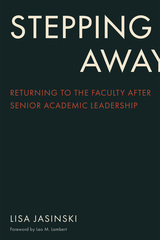 Stepping Away: Returning to the Faculty After Senior Academic Leadership
Lisa Jasinski
Rutgers University Press, 2023 In no other professional field do senior leaders habitually return to the rank-and-file workforce in the twilight of their careers. Corporate CEOs rarely conclude their working lives by resuming the duties of a mid-level account executive; on the verge of retirement, four-star generals do not return to the infantry. But in academia former senior leaders often conclude their careers by reprising the roles and responsibilities of a professor. Until now, leaders and institutions have been left to navigate these transitions on their own—often learning hard lessons that might have been avoided. Stepping Away moves beyond the well-worn clichés of “stepping down” to examine how senior leadership role changes impact individuals and the institutions they serve. Drawn from empirical research involving more than fifty college presidents, provosts, and deans, this book delivers fresh understanding of the challenges and opportunities leaders face as they assume a new place in the social architecture of their campus. Bridging the gap between theory and practice, Stepping Away translates research into practical strategies that leaders can use to make this change successfully, providing guidance about when to speak up and when to remain quiet, how to develop new relationships, where to office, whether to apply for new jobs, and how to use their knowledge and skills to add value to their campus communities, on-campus and off.
Stepping Back to Look Forward: A History of the Massachusetts Forest
Charles H. W. Foster
Harvard University Press, 1998 This timely collection of essays, written by recognized forestry and environmental specialists, tells the story of the conservation, use, and changes in Massachusetts’ forests over time. It begins with ecology and land-use history through pre-settlement, colonial, and post-Revolutionary periods, and ends with recommendations on how history may inform policy. It documents the origin and growth of state forestry programs and underscores the importance of private and local leadership and Massachusetts’ roles in the emergence of national conservation and forestry efforts. Economic contributions and educational programs are detailed. The book concludes with a call to awaken and reinvigorate the historical connection between citizens and their forests, an initiative of potential significance not only to Massachusetts but to the nation.
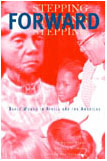 Stepping Forward: Black Women in Africa and the Americas
Catherine Higgs
Ohio University Press, 2002 A unique and important study, Stepping Forward examines the experiences of nineteenth- and twentieth-century black women in Africa and African diaspora communities from a variety of perspectives in a number of different settings. This wide-ranging collection designed for classroom use explores the broad themes that have shaped black women’s goals, options, and responses: religion, education, political activism, migration, and cultural transformation. Essays by leading scholars in the field examine the lives of black women in the United States and the Caribbean Basin; in the white settler societies of Kenya, Zimbabwe, and South Africa; and in the black settler societies of Liberia and Sierra Leone. Among the contributors to this volume are historians, political scientists, and scholars of literature, music, and law. What emerges from their work is an image of black women’s agency, self-reliance, and resiliency. Despite cultural differences and geographical variations, black women have provided foundations on which black communities have not only survived, but also thrived. Stepping Forward is a valuable addition to our understanding of women’s roles in these diverse communities.
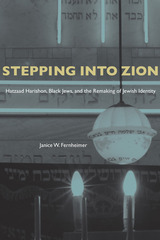 Stepping Into Zion: Hatzaad Harishon, Black Jews, and the Remaking of Jewish Identity
Janice W. Fernheimer
University of Alabama Press, 2014 Considers the question “Who is a Jew?”— a critical rhetorical issue with far-reaching consequences for Jews and non-Jews alike
Hatzaad Harishon ("The First Step") was a New York-based, multiracial Jewish organization that worked to increase recognition and legitimacy for Black Jews in the sixties and seventies. In Stepping into Zion, Janice W. Fernheimer examines the history and archives of Hatzaad Harishon to illuminate the shifting definitions and borders of Jewish identity, which have critical relevance to Jews of all traditions as well as to non-Jews.
Fernheimer focuses on a period when Jewish identity was in flux and deeply influenced by the Civil Rights and Black Power movements. In 1964, white and Black Jews formed Hatzaad Harishon to foster interaction and unity between Black and white Jewish communities. They raised the question of who or what constitutes Jewishness or Jewish identity, and in searching for an answer succeeded—both historically and rhetorically—in gaining increased recognition for Black Jews. Fernheimer traces how, despite deep disagreement over definitions, members of Hatzaad Harishon were able to create common ground in a process she terms "interruptive invention": an incremental model for rhetorical success that allows different groups to begin and continue important but difficult discussions when they share little common ground or make unequal claims to institutional and discursive power, or when the nature of common ground is precisely what is at stake. Consequently, they provide a practical way out of the seemingly incommensurable stalemate incompatible worldviews present.
Through insightful interpretations of Hatzaad Harishon's archival materials, Fernheimer chronicles the group's successes and failures within the larger rhetorical history of conflicts that emerge when cultural identities shift or expand.
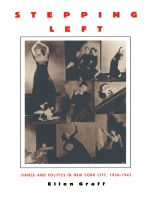 Stepping Left: Dance and Politics in New York City, 1928–1942
Ellen Graff
Duke University Press, 1997 Stepping Left simultaneously unveils the radical roots of modern dance and recalls the excitement and energy of New York City in the 1930s. Ellen Graff explores the relationship between the modern dance movement and leftist political activism in this period, describing the moment in American dance history when the revolutionary fervor of "dancing modern" was joined with the revolutionary vision promised by the Soviet Union. This account reveals the major contribution of Communist and left-wing politics to modern dance during its formative years in New York City.
From Communist Party pageants to union hall performances to benefits for the Spanish Civil War, Graff documents the passionate involvement of American dancers in the political and social controversies that raged throughout the Depression era. Dancers formed collectives and experimented with collaborative methods of composition at the same time that they were marching in May Day parades, demonstrating for workers’ rights, and protesting the rise of fascism in Europe. Graff records the explosion of choreographic activity that accompanied this lively period—when modern dance was trying to establish legitimacy and its own audience. Stepping Left restores a missing legacy to the history of American dance, a vibrant moment that was supressed in the McCarthy era and almost lost to memory. Revisiting debates among writers and dancers about the place of political content and ethnicity in new dance forms, Stepping Left is a landmark work of dance history.
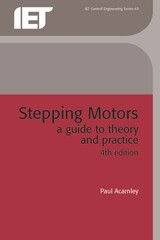 Stepping Motors: A guide to theory and practice
Paul Acarnley
The Institution of Engineering and Technology, 2002 Stepping motor technology is well established and used for motion control, most notably for computer peripherals but also wherever digital control is employed. This book provides an introductory text which will enable the reader to both appreciate the essential characteristics of stepping motor systems and understand how these characteristics are being exploited in the continuing development of new motors, drives and controllers. A basic theoretical approach relating to the more significant aspects of performance is presented, although it is assumed throughout that the reader has no previous experience of electrical machines and is primarily interested in the applications of stepping motors. Paul Acarnley's outstanding reference book is widely known and used, and this, the 4th edition, has been significantly updated to include many new applications that have emerged since the previous edition was published. Coverage includes: drive circuits, accurate load positioning, static torque characteristics, multi-step operation, torque/ speed characteristics, high-speed operation, open-loop control, closed-loop control and microprocessor-based stepping motor systems.
Stepping Out of the Shadows: Alabama Women, 1819–1990
Mary Martha Thomas
University of Alabama Press, 1995 Investigates the place of women from the perspective of race, class, and gender
The history of Alabama has been told, but most often in terms of white men and their politics and economics. Now a more complex story of the state is emerging from the shadows of history in a new book that investigates the place of women from the perspective of race, class, and gender. Stepping Out of the Shadows, is a compilation of articles first presented at the 1990 Alabama Women’s History Forum in Birmingh, and edited by Mary Martha Thomas. The writers discuss the lives of women in antebellum Alabama and reexamine the roles of both black and white women as missionaries during Reconstruction, as reformers and suffrage leaders in the Progressive era, and as members of the state legislature in the 20th century.
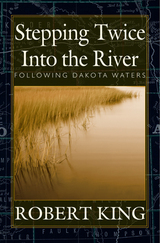 Stepping Twice Into the River: Following Dakota Waters
Robert King
University Press of Colorado, 2005 What happens when an English professor takes a year off to explore a tiny prairie creek? Between mishaps with the canoe, long walks to the sites of Cheyenne villages and cavalry trenches, and gallons of coffee with isolated farmers, what happens is insight. In Stepping Twice Into the River, Robert King recounts his exploration of the "almost unnoticeable" along North Dakota's Sheyenne River, from its headwaters to river's end. With each experience along the way - tracing a military campaign, canoeing the river, visiting a ghost town and even trying to sleep in an ancient Cheyenne village - King examines a different aspect of the plains: Native American culture, pioneer society, religion, war, agriculture, and nature.
Blending travel narrative and poetic reflection, Stepping Twice Into the River takes readers on a journey through time, revealing both stability and change and offering prairie wisdom. An affectionate and shrewd observer, King illuminates the ordinary from the perspectives of history, science, and literature. In the hands of this gifted thinker and writer, local facts yield universal metaphor.
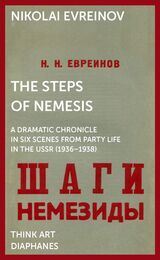 The Steps of Nemesis: A Dramatic Chronicle in Six Scenes from Party Life in the USSR (1936–1938)
Nikolai Evreinov
Diaphanes, 2022 The first-ever English translation of this dramatic work by Nikolai Evreinov.
In the 1910s the Russian theater director and theorist Nikolai Evreinov (1879–1953) insisted on the theatricalization of life. Twenty years later, Evreinov, who had left Russia in 1924, was in exile in Paris when Stalin staged three elaborate political show trials in Moscow. Evreinov then meticulously read the transcripts of the trials in the Russian-language press, collected material on Nikolai Bukharin and the other defendants, consulted with experts, and finally wrote a play, his response to the staging of a judicial farce. With this response, he also wanted to rehabilitate his idea of the theatricalization of life. After all, the theatricalization of life does not mean performing false confessions, constructing conspiracies, fabricating facts, or casting hired witnesses. In his theatrical theory, Evreinov was careful not to make the theater of life invisible. His play is therefore not a historical reconstruction, but an imaginary look behind the scenes, in which the Stalinist perpetrators confess to the real crime in the end: the theater. Expertly translated into English for the first time by Zachary King, The Steps of Nemesis brings a fascinating play to a whole new world.
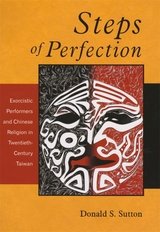 Steps of Perfection: Exorcistic Performers and Chinese Religion in Twentieth-Century Taiwan
Donald S. Sutton
Harvard University Press, 2003 Despite Taiwan's rise as an economic force in the world, modernity has not led to a Weberian process of disenchantment or curbed religiosity. To the contrary, other factors—social, economic, political—have stimulated religion. How and why this has happened are central issues in this book.
One part of Taiwan's flourishing religious culture is the elaborate and colorful procession of local gods accompanied by troupes of musicians and dancers. Among them are performers with outlandishly painted faces portraying underworld generals who serve the gods and punish the living. Through their performances, these troupes claim to exorcise harmful forces from the community.
In conducting fieldwork among these troupes, Donald Sutton confronted their claims to a long history—when all evidence indicated that the troupes had been insignificant until the 1970s—and their assertions of devotion to tradition given the diversity of performances. Concentrating on the stylistic variations in performances, the author describes the troupes as organizations shaped by the "market forces" of supply and demand in the culture of religious festivals. By focusing on performances as the nexus of market and art, he shows how bodily performance is the site where religious statements are made and the power of the gods made visible.
Steps to a New Edition of the Hebrew Bible
Ronald Hendel
SBL Press, 2016
Understand the purpose and background of the new The Hebrew Bible: A Critical Edition project
Our understanding of the textual history of the Hebrew Bible has been transformed in the wake of the discovery of the Dead Sea Scrolls. Hendel explores and refines this new knowledge and formulates a rationale for a new edition of the Hebrew Bible. The chapters situate The Hebrew Bible; A Critical Edition project in a broad historical context, from the beginnings of textual criticism in late antiquity and the Renaissance to the controversies in contemporary theory and practice. This book combines close analysis with broad synthesis, yielding new perspectives on the text of the Hebrew Bible.
Features
- Theory and practice of textual criticism
- Textual history of the Hebrew Bible
- History of text-critical scholarship
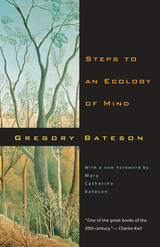 Steps to an Ecology of Mind: Collected Essays in Anthropology, Psychiatry, Evolution, and Epistemology
Gregory Bateson
University of Chicago Press, 2000 Gregory Bateson was a philosopher, anthropologist, photographer, naturalist, and poet, as well as the husband and collaborator of Margaret Mead. With a new foreword by his daughter Mary Katherine Bateson, this classic anthology of his major work will continue to delight and inform generations of readers.
"This collection amounts to a retrospective exhibition of a working life. . . . Bateson has come to this position during a career that carried him not only into anthropology, for which he was first trained, but into psychiatry, genetics, and communication theory. . . . He . . . examines the nature of the mind, seeing it not as a nebulous something, somehow lodged somewhere in the body of each man, but as a network of interactions relating the individual with his society and his species and with the universe at large."—D. W. Harding, New York Review of Books
"[Bateson's] view of the world, of science, of culture, and of man is vast and challenging. His efforts at synthesis are tantalizingly and cryptically suggestive. . . .This is a book we should all read and ponder."—Roger Keesing, American Anthropologist
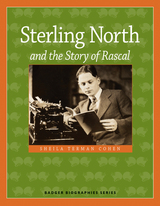 Sterling North and the Story of Rascal
Sheila Terman Cohen
Wisconsin Historical Society Press, 2015 This Badger Bio shares the story of author Sterling North – his adventures and misadventures as a young boy growing up in Edgerton, Wisconsin. Young readers will learn how North’s early experience in Wisconsin influenced him in writing some of his best loved children’s books – such as Rascal and So Dear To My Heart. The story gives readers a glimpse of early 20th century customs and lifestyles in the rural Midwest. It also includes global issues of the time, including World War I and the Spanish flu pandemic, which greatly affected Sterling’s boyhood. As examples, his admired older brother Hershel served overseas in WWI as Sterling was growing up, bringing world events to the North family’s doorstep. His mother Gladys died when Sterling was only 7 years old because of the lack of medical advances in the early 1900s. And, as a young man, Sterling was hit by polio, a common epidemic scourge that left many children with paralysis. Readers will learn of Sterling North’s successes, not only as a beloved author of children’s books, but as a columnist for the Chicago Daily News, an editor of North Star children’s history books, and a well-respected critic of other children’s literature.
The Steuben Village and Mounds: A Multicomponent Late Hopewell Site in Illinois
Dan F. Morse
University of Michigan Press, 1963 The Steuben Village sits on the bank of the Illinois River in Marshall County, Illinois.Nearby are nine burial mounds. In 1955 and 1956, researchers dug five test pits in the village and excavated several of the mounds. In addition to burials, the crew found thousands of artifacts, including pottery, chipped and ground stone tools, and items made from copper, bone, and shell. The artifacts and radiocarbon dates indicate two Hopewell occupations, the earliest about 2,000 years ago.
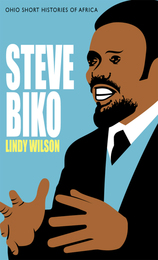 Steve Biko
Lindy Wilson
Ohio University Press, 2011 Steve Biko inspired a generation of black South Africans to claim their true identity and refuse to be a part of their own oppression. Through his example, he demonstrated fearlessness and self-esteem, and he led a black student movement countrywide that challenged and thwarted the culture of fear perpetuated by the apartheid regime. He paid the highest price with his life. The brutal circumstances of his death shocked the world and helped isolate his oppressors. This short biography of Biko shows how fundamental he was to the reawakening and transformation of South Africa in the second half of the twentieth century—and just how relevant he remains. Biko’s understanding of black consciousness as a weapon of change could not be more relevant today to “restore people to their full humanity.” As an important historical study, this book’s main sources were unique interviews done in 1989—before the end of apartheid—by the author with Biko’s acquaintances, many of whom have since died.
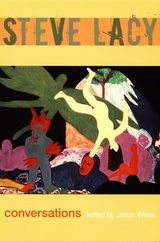 Steve Lacy: Conversations
Jason Weiss, ed.
Duke University Press, 2006 Steve Lacy: Conversations is a collection of thirty-four interviews with the innovative saxophonist and jazz composer. Lacy (1934–2004), a pioneer in making the soprano saxophone a contemporary jazz instrument, was a prolific performer and composer, with hundreds of recordings to his name. This volume brings together interviews that appeared in a variety of magazines between 1959 and 2004. Conducted by writers, critics, musicians, visual artists, a philosopher, and an architect, the interviews indicate the evolution of Lacy’s extraordinary career and thought. Lacy began playing the soprano saxophone at sixteen, and was soon performing with Dixieland musicians much older than he. By nineteen he was playing with the pianist Cecil Taylor, who ignited his interest in the avant-garde. He eventually became the foremost proponent of Thelonious Monk’s music. Lacy played with a broad range of musicians, including Monk and Gil Evans, and led his own bands. A voracious reader and the recipient of a MacArthur “genius” grant, Lacy was particularly known for setting to music literary texts—such as the Tao Te Ching, and the work of poets including Samuel Beckett, Robert Creeley, and Taslima Nasrin—as well as for collaborating with painters and dancers in multimedia projects. Lacy lived in Paris from 1970 until 2002, and his music and ideas reflect a decades-long cross-pollination of cultures. Half of the interviews in this collection originally appeared in French sources and were translated specifically for this book. Jason Weiss provides a general introduction, as well as short introductions to each of the interviews and to the selection of Lacy’s own brief writings that appears at the end of the book. The volume also includes three song scores, a selected discography of Lacy’s recordings, and many photos from the personal collection of his wife and longtime collaborator, Irene Aebi. Interviews by: Derek Bailey, Franck Bergerot, Yves Bouliane, Etienne Brunet, Philippe Carles, Brian Case, Garth W. Caylor Jr., John Corbett, Christoph Cox, Alex Dutilh, Lee Friedlander, Maria Friedlander, Isabelle Galloni d'Istria, Christian Gauffre, Raymond Gervais, Paul Gros-Claude, Alain-René Hardy, Ed Hazell, Alain Kirili, Mel Martin, Franck Médioni, Xavier Prévost, Philippe Quinsac, Ben Ratliff, Gérard Rouy, Kirk Silsbee, Roberto Terlizzi, Jason Weiss
Steve McQueen: The Great Escape
Wes D. Gehring
Indiana Historical Society Press, 2009 The poster-child victim of a dysfunctional family from Beech Grove, Indiana, Steve McQueen experienced an unsettled early life with a rebellious and alcoholic mother. McQueen channeled his difficult childhood into a masterful career on screen portraying tough, self-sufficient characters in such iconic films as The Magnificent Seven (1960), The Great Escape (1963), The Sand Pebbles (1966), Bullitt (1968). Gehring explores how McQueen rose from his days as a troubled youth into one of Hollywood’s top box-office stars, and how he attempted to ease the lives of other troubled youth. Gehring delves into McQueen’s early success, his rocky relationships with women, his sense of humor, his love of fast cars and motorcycles, and his often neglected acting.
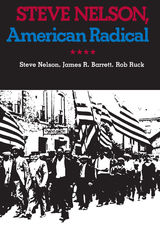 Steve Nelson, American Radical
Steve Nelson
University of Pittsburgh Press, 1992 As the immigrant teenage son of a Croatian miller, Steve Nelson arrived in the United States after World War I and entered a world of chronic unemployment, low wages, dangerous work, and discrimination. Following the path taken by many fellow immigrant workers, he joined the Communist Party. He became a full-time organizer and ultimately a major leader, only to resign in 1957 after unsuccessful attempts to democratize the American party.
This remarkable oral biography, recounted in collaboration with two historians, describes day-to-day life in the party and traces Nelson's career from his beginnings in the Pennsylvania coalfields to his secret work as party courier in the Far East; form the battlefields of Civil War Spain to the jails of Cold War Pittsburgh; and from a small group of Communist autoworkers in Detroit to the upper reaches of a party leadership in New York. It is the frank and analytical account of a leading American working-class activist.
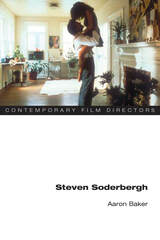 Steven Soderbergh
Aaron Baker
University of Illinois Press, 2011 A Hollywood director who blends substance with the mainstream Steven Soderbergh's feature films present a diverse range of subject matter and formal styles: from the self-absorption of his breakthrough hit Sex, Lies, and Videotape to populist social problem films such as Erin Brockovich, and from the modernist discontinuity of Full Frontal and filmed performance art of Gray's Anatomy to a glossy, star-studded action blockbuster such as Ocean's Eleven. Using a combination of realism and expressive stylization of character subjectivity, Soderbergh's films diverge from the contemporary Hollywood mainstream through the statements they offer on issues including political repression, illegal drugs, violence, environmental degradation, the empowering and controlling potential of digital technology, and economic inequality. Arguing that Soderbergh practices an eclectic type of moviemaking indebted both to the European art cinema and the Hollywood genre film, Aaron Baker charts the common thematic and formal patterns present across Soderbergh's oeuvre. Almost every movie centers on an alienated main character, and Soderbergh has repeatedly emphasized place as a major factor in his narratives. Formally, he represents the unconventional thinking of his outsider protagonists through a discontinuous editing style. Including detailed analyses of major films as well as two interviews with the director, this volume illustrates Soderbergh's hybrid flexibility in bringing an independent aesthetic to wide audiences.
 Steven Spielberg's Children
Linda Ruth Williams
Rutgers University Press, 2025 Why has Steven Spielberg’s work been so often identified with childhood and children? How does the director elicit such complex performances from his young actors? Steven Spielberg’s Children is the first book to investigate children, childhood, and Spielberg’s employment of child actors together and in depth. Through a series of lively readings of both the celebrated performances he elicits from his young stars in films such as E.T.: The Extra Terrestrial, A.I.: Artificial Intelligence, and Empire of the Sun, as well as less discussed roles in films such as War of the Worlds, The BFG, and Jurassic Park, this book shows children to be key players in the director’s articulation of childhood since the 1970s.
Steven Spielberg’s Children presents children and childhood in some surprising ways, not only analyzing boyhood and girlhood according to Spielberg, but considering children as alien, adult-children who refuse to grow up, and children who aren’t even human. It discusses the way in which children have served to cast Spielberg as a sentimentalist, but also how they are more frequently framed as complex, cruel, and canny. The child might be dangled as bait in an exploitation horror scenario (Jaws), might become the image of universal higher beings (Close Encounters of the Third Kind), or might be a young cultural creator like the director was himself (The Fabelmans), "born with a camera glued to [his] eye." The child, on both sides of the camera, is a resonant image, signifying all that adult culture wants it to be, yet resisting this through authorship of their own stories. The book also looks at Spielberg's young actors in the long history of child stars in theater and cinema, and how Spielberg’s children have fared as performers and celebrities.
Stewards of the House: Detective Fiction of Jonathan Latimer
Bill Brubaker
University of Wisconsin Press, 1993 Jonathan Latimer (1906-1983) wrote nine detective novels. He also wrote or co-wrote 20 film scripts, including such noir classics as the second version of Dasheill Hammett's The Glass Key, Kenneth Fearing's The Big Clock, and Cornell Woolrich's The Night Has a Thousand Eyes. Moving to television writing, he scripted 45 original stories and adapted 50 Eric Stanley Gardner novels for the Perry Mason series.
 Stewards of the Market: How the Federal Reserve Made Sense of the Financial Crisis
Mitchel Y. Abolafia
Harvard University Press, 2020 A fast-paced, behind-closed-doors account of the Federal Reserve’s decision making during the 2008 financial crisis, showing how Fed policymakers overcame their own assumptions to contain the disaster.
The financial crisis of 2008 led to the collapse of several major banks and thrust the US economy into the deepest recession since the Great Depression. The Federal Reserve was the agency most responsible for maintaining the nation’s economic stability. And the Fed’s Open Market Committee was a twelve-member body at the epicenter, making sense of the unfolding crisis and fashioning a response. This is the story of how they failed, learned, and staved off catastrophe.
Drawing on verbatim transcripts of the committee’s closed-door meetings, Mitchel Abolafia puts readers in the room with the Federal Reserve’s senior policymaking group. Abolafia uncovers what the Fed’s policymakers knew before, during, and after the collapse. He explores how their biases and intellectual commitments both helped and hindered as they made sense of the emergency. In an original contribution to the sociology of finance, Stewards of the Market examines the social and cultural factors that shaped the Fed’s response, one marked by missed cues and analytic failures but also by successful improvisations and innovations.
Ideas, traditions, and power all played their roles in the Fed’s handling of the crisis. In particular, Abolafia demonstrates that the Fed’s adherence to conflicting theories of self-correcting markets contributed to the committee’s doubts and decisions. A vivid portrait of the world’s most powerful central bank in a moment of high stakes, Stewards of the Market is rich with insights for the next financial downturn.
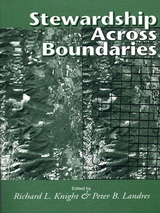 Stewardship Across Boundaries
Edited by Richard L. Knight and Peter B. Landres
Island Press, 1998 Every piece of land, no matter how remote or untrammeled, has a boundary. While sometimes boundary lines follow topographic or biological features, more often they follow the straight lines of political dictate and compromise. Administrative boundaries nearly always fragment a landscape, resulting in loss of species that must disperse or migrate across borders, increased likelihood of threats such as alien species or pollutants, and disruption of natural processes such as fire. Despite the importance and ubiquity of boundary issues, remarkably little has been written on the subject. Stewardship Across Boundaries fills that gap in the literature, addressing the complex biological and socioeconomic impacts of both public and private land boundaries in the United States. With contributions from natural resource managers, historians, environmentalists, political scientists, and legal scholars, the book: develops a framework for understanding administrative boundaries and their effects on the land and on human behavior examines issues related to different types of boundaries -- wilderness, commodity, recreation, private-public presents a series of case studies illustrating the efforts of those who have cooperated to promote stewardship across boundaries synthesizes the broad complexity of boundary-related issues and offers an integrated strategy for achieving regional stewardshi. Stewardship Across Boundaries should spur open discussion among students, scientists, managers, and activists on this important topic. It demonstrates how legal, social, and ecological conditions interact in causing boundary impacts and why those factors must be integrated to improve land management. It also discusses research needs and will help facilitate critical thinking within the scientific community that could result in new strategies for managing boundaries and their impacts.
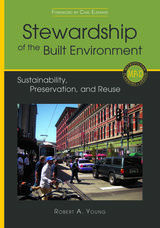 Stewardship of the Built Environment: Sustainability, Preservation, and Reuse
Robert A. Young
Island Press, 2012 When we think of green building, we tend to picture new construction. But Robert A. Young argues that the greenest building is often the one that has already been built. In Stewardship of the Built Environment, he shows how rehabilitating and reusing existing structures holds untapped potential for achieving sustainable communities. Students and professionals alike will discover the multifaceted benefits of reuse.
Young begins by describing how historic preservation in the United States, often overlooked because of the predominant focus on new construction, is actually an important sustainable design strategy. He then examines the social, environmental, and economic benefits of preservation—from the societal value of reusing existing buildings to financial incentives available for rehabilitation. Young concludes with insights into the future of reusing buildings as a sustainability strategy. He also provides several informative appendices, including a glossary of key terms and acronyms and recommendations for further reading.
Readers will become familiar with essential terminology; sustainability and historic preservation metrics; government oversight processes; and opportunities for smart growth afforded by rehabilitation. This knowledge is key to preserving the past while building a sustainable future.
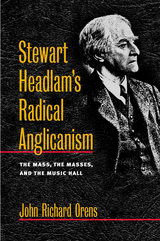 Stewart Headlam's Radical Anglicanism: The Mass, the Masses, and the Music Hall
John Richard Orens
University of Illinois Press, 2003 Standing in stark contrast to the conservative churchmen of Victorian Britain, the Anglican clergyman Stewart Headlam was a passionately progressive reformer, a champion of the working poor--especially women --a defender of the music hall performers his colleagues attacked as licentious, and, in short, a man of God who remained firmly and controversially engaged with the society in which he lived and worked.
This book, the first significant study of Headlam since 1928, paints a rich and complex picture of this larger-than-life man of the cloth, charting the trail he blazed across the social, political, and religious landscape of late nineteenth- and early twentieth-century Britain.
Dissatisfied from an early age with his family’s Evangelical faith, Headlam became an Anglican curate, but his political views were increasingly radicalized as he befriended working-class atheists and trade union leaders. John Richard Orens details Headlam’s repeated conflicts with the establishment figures of his faith over his defense of music hall ballet performers’ right to reveal their legs, his role in the early years of the Fabian Society, his anti-puritanism, and his passionate socialism. Headlam was even instrumental in having Oscar Wilde bailed out of prison following the writer’s arrest for “homosexual offenses.”
With this intellectual biography, Orens places Headlam’s life, beliefs, and actions in the context of the period, contributing to the ongoing debate about the proper relationship between Christianity, on the one hand, and society, sexuality, and the arts, on the other.
Stichus. Three-Dollar Day. Truculentus. The Tale of a Traveling-Bag. Fragments
Plautus
Harvard University Press, 2011 Funny happenings.
The rollicking comedies of Plautus, who brilliantly adapted Greek plays for Roman audiences ca. 205–184 BC, are the earliest Latin works to survive complete and are cornerstones of the European theatrical tradition from Shakespeare and Molière to modern times. This fifth volume of a new Loeb edition of all twenty-one of Plautus’ extant comedies presents Stichus, Three-Dollar Day, Truculentus, The Tale of a Traveling-Bag, and fragments with freshly edited texts, lively modern translations, introductions, and ample explanatory notes.
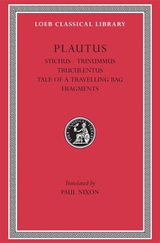 Stichus. Trinummus. Truculentus. Tale of a Travelling Bag. Fragments
Plautus
Harvard University Press Plautus (Titus Maccius), born about 254 BCE at Sarsina in Umbria, went to Rome, engaged in work connected with the stage, lost his money in commerce, then turned to writing comedies.
Twenty-one plays by Plautus have survived (one is incomplete). The basis of all is a free translation from comedies by such writers as Menander, Diphilus, and Philemon. So we have Greek manners of Athens about 300250 BCE transferred to the Roman stage of about 225185, with Greek places, people, and customs, for popular amusement in a Latin city whose own culture was not yet developed and whose manners were more severe. To make his plays live for his audience, Plautus included many Roman details, especially concerning slavery, military affairs, and law, with some invention of his own, notably in management of metres. The resulting mixture is lively, genial and humorous, with good dialogue and vivid style. There are plays of intrigue (Two Bacchises, The Haunted House, Pseudolus); of intrigue with a recognition theme (The Captives, The Carthaginian, Curculio); plays which develop character (The Pot of Gold, Miles Gloriosus); others which turn on mistaken identity (accidental as in the Menaechmi; caused on purpose as in Amphitryon); plays of domestic life (The Merchant, Casina, both unpleasant; Trinummus, Stichus, both pleasant).
The Loeb Classical Library edition of Plautus is in five volumes.
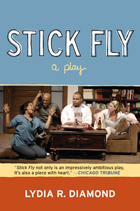 Stick Fly: A Play
Lydia R. Diamond
Northwestern University Press, 2008 Adept at capturing the experience of the upper-middle-class African-American, Diamond lays out two families' worth of secrets in this precise play. With only six characters, she constructs a vivid weekend of crossed pasts and uncertain but optimistic futures. On Martha's Vineyard, an affluent African-American family gathers in their vacation home, joined by the housekeeper's daughter, who is filling in for her mother. The family patriarch is a philandering physician; one of his sons has followed in his footsteps, while the other, after numerous false starts in a variety of careers, is a struggling novelist. Both bring along their current girlfriends, to meet the family for the first time. With such highly--perhaps over--educated vacationers, the conversation and the barbs fly, on subjects ranging from race to economics to politics. But there is also more than enough human drama, which reaches its climax when an old family secret comes out. Through lively exchanges and simmering wit, the family tackles a history filled with complications both within the family and in the outer world.
 Stick Houses: Stories
Matthew L.M. Fletcher
Michigan State University Press, 2025 As researchers tried to prompt his mother to say that her ancestors lived in wigwams or teepees, Matthew L. M. Fletcher’s mother insisted her ancestors lived in stick houses. From the opening lines of Fletcher’s story collection, he sets the scene to disrupt narrative stereotypes and expectations about how Indigenous people are perceived. He provides insight into the complex world in which Anishinaabe people live, stripped of the ownership of much of their homeland. In Stick Houses, Fletcher explores what this loss of place has meant to the Anishinaabe people of Michigan. It explores how they must leave and come back. There is dispossession and separation, but there is also reunion and restoration.
These stories explore themes of home and belonging, and how Native people are not just one thing; they are both Native and non-Native blood. Some are deeply connected to their Anishinaabe heritage, while others have suffered a complete loss of their culture. Many Native people are conflicted about their background and suffer intergenerational trauma. These stories originate in dynamic environments and situations such as airports, college, Indian lawyering, and high school baseball games.
 Sticking Stigma: Performance, Affect, and the Movement of Social Norms
Dani Snyder-Young
Vanderbilt University Press, 2026 Stigma is the social process at the heart of discrimination and social abjection. Snyder-Young examines the cultural technologies of power artists and cultural producers employ to manipulate stigma and its resulting affects in performance projects oriented toward the alleviation of social inequalities. This includes performances explicitly and implicitly working to reduce stigma experienced by marginalized communities as well as performances working to stigmatize behaviors aligned with facets of oppressive hegemonic power.
Applied theater projects have been used to reduce the stigma related to many health conditions including bipolar disorder, HIV, suicide bereavement, mental illness, autism, and substance use disorder. Beyond this applied theater tradition, theater and performance studies tends not to use the framework or language of stigma very often. Stigma is a more commonly used framework in social science fields such as health and sociology. However, theater and performance regularly attends to the material and affective violence of stigma power: oppression, dispossession, abjection, objectification, expulsion. Snyder-Young examines a set of activist performance projects attempting to use the force of stigma to redistribute and recenter social power.
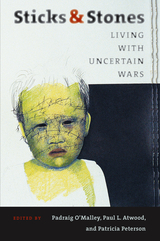 Sticks and Stones: Living with Uncertain Wars
Padraig O'Malley
University of Massachusetts Press, 2006 Albert Einstein famously remarked that he did not know what weapons would be used in World War III, but World War IV would be fought with sticks and stones. In this volume, a distinguished group of scholars, government officials, politicians, journalists, and statesmen examine what can be learned from the wars of the twentieth century and how that knowledge might help us as we step ever so perilously into the twenty-first.
Following an introduction by Padraig O'Malley, the book is divided into four sections: "Understanding the World as We Have Known It"; "Global Uncertainties"; "Whose Values? Whose Justice?"; and "Shaping a New World." The first section reviews what we have learned about war and establishes benchmarks for judging whether that knowledge is being translated into changes in the behavior of our political cultures. It suggests that the world's premier superpower, in its effort to promote Western-style democracy, has taken steps that have inhibited rather than facilitated democratization.
The second section examines the war on terror and the concept of global war. From the essays in this section emerges a consensus that democracy as practiced in the West cannot be exported to countries with radically different cultures, traditions, and values. The third section visits the question of means and ends in the context of varying value systems and of theocracy, democracy, and culture. In the final section, the focus shifts to our need for global institutions to maintain order and assist change in the twenty-first century.
Although each contributor comes from a different starting point, speaks with a different voice, and has a different ideological perspective, the essays reach startlingly similar conclusions. In sum, they find that the West has not absorbed the lessons from the wars of the last century and is inadequately prepared to meet the new challenges that now confront us.
Contributors to the volume include J. Brian Atwood, Susan J. Atwood, John Cooley, Romeo Dallaire, Ramu Damodaran, Valerie Epps, Michael J. Glennon, Stanley Heginbotham, Robert Jackson, Winston Langley, Alfred W. McCoy, Greg Mills, Jonathan Moore, Chris Patten, Gwyn Prins, Jonathan Schell, John Shattuck, Cornelio Sommargua, Brian Urquhart, Stephen Van Evera, and Robert Weiner.
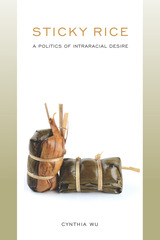 Sticky Rice: A Politics of Intraracial Desire
Cynthia Wu
Temple University Press, 2018 Cynthia Wu’s provocative Sticky Rice examines representations of same-sex desires and intraracial intimacies in some of the most widely read pieces of Asian American literature. Analyzing canonical works such as John Okada’s No-No Boy, Monique Truong’s The Book of Salt, H. T. Tsiang’s And China Has Hands, and Lois-Ann Yamanaka’s Blu’s Hanging, as well as Philip Kan Gotanda’s play, Yankee Dawg You Die, Wu considers how male relationships in these texts blur the boundaries among the homosocial, the homoerotic, and the homosexual in ways that lie beyond our concepts of modern gay identity. The “sticky rice” of Wu’s title is a term used in gay Asian American culture to describe Asian American men who desire other Asian American men. The bonds between men addressed in Sticky Rice show how the thoughts and actions founded by real-life intraracially desiring Asian-raced men can inform how we read the refusal of multiple normativities in Asian Americanist discourse. Wu lays bare the trope of male same-sex desires that grapple with how Asian America’s internal divides can be resolved in order to resist assimilation.
 Stiffelio: Libretto (in three acts) by Francesco Maria Piave
Giuseppe Verdi
University of Chicago Press, 2003 The performance history of Stiffelio as Verdi envisioned it began only in 1993. Composed with Rigoletto, and sharing many of its characteristics, Stiffelio suffered from the censors' strictures. From its premiere in 1850, its text was diluted to appease the authorities, making a mockery of the action and Verdi's carefully calibrated music. The story of Stiffelio, a protestant minister who eventually divorces his adulterous wife but forgives her from the pulpit in the final scene, shocked conservative Italian religious and political powers. The libretto was rewritten for subsequent revivals, and even some music was dropped. In 1856 the composer angrily withdrew Stiffelio from circulation, reusing parts of the score for his Aroldo. The rest was later presumed lost.
Not until 1992 was it revealed that Verdi's heirs possessed not only most of the canceled score, but also sixty pages of sketches for Stiffelio. These were used for the preliminary score of the critical edition, premiered in 1993 at New York's Metropolitan Opera. It was the first time Stiffelio was performed as Verdi wrote it. It has been enthusiastically received around the world.
With the publication of the critical edition, the first in full orchestral score, Stiffelio should take its rightful place in the Verdi canon.
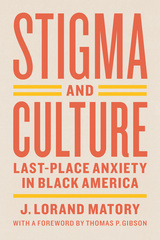 Stigma and Culture: Last-Place Anxiety in Black America
J. Lorand Matory
University of Chicago Press, 2015 In Stigma and Culture, J. Lorand Matory provocatively shows how ethnic identification in the United States—and around the globe—is a competitive and hierarchical process in which populations, especially of historically stigmatized races, seek status and income by dishonoring other stigmatized populations. And there is no better place to see this than among the African American elite in academia, where he explores the emergent ethnic identities of African and Caribbean immigrants and transmigrants, Gullah/Geechees, Louisiana Creoles, and even Native Americans of partly African ancestry.
Matory describes the competitive process that hierarchically structures their self-definition as ethnic groups and the similar process by which middle-class African Americans seek distinction from their impoverished compatriots. Drawing on research at universities such as Howard, Harvard, and Duke and among their alumni networks, he details how university life—while facilitating individual upward mobility, touting human equality, and regaling cultural diversity—also perpetuates the cultural standards that historically justified the dominance of some groups over others. Combining his ethnographic findings with classic theoretical insights from Frantz Fanon, Fredrik Barth, Erving Goffman, Pierre Bourdieu and others—alongside stories from his own life in academia—Matory sketches the university as an institution that, particularly through the anthropological vocabulary of culture, encourages the stigmatized to stratify their own.
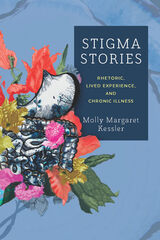 Stigma Stories: Rhetoric, Lived Experience, and Chronic Illness
Molly Margaret Kessler
Ohio State University Press, 2022 In Stigma Stories: Rhetoric, Lived Experience, and Chronic Illness, Molly Margaret Kessler focuses on ostomies and gastrointestinal conditions to show how stigma is nearly as central to living with chronic conditions as the conditions themselves. Drawing on a multi-year study that includes participant observations, interviews, and rhetorical engagement with public health campaigns, blogs, social media posts, and news articles, Stigma Stories advocates for a rhetorical praxiographic approach that is attuned to the rhetorical processes, experiences, and practices in which stigma is enacted or countered.
Engaging interdisciplinary conversations from the rhetoric of health and medicine, disability studies, narrative medicine, and sociology, Kessler takes an innovative look at how stigma functions on individual, interpersonal, and societal levels. In doing so, Kessler reveals how stories and lived experiences have much to teach us not only about how stigma functions but also about how it can be dismantled.
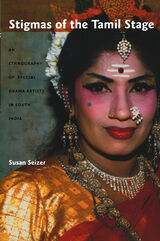 Stigmas of the Tamil Stage: An Ethnography of Special Drama Artists in South India
Susan Seizer
Duke University Press, 2005 A study of the lives of popular theater artists, Stigmas of the Tamil Stage is the first in-depth analysis of Special Drama, a genre of performance unique to the southernmost Indian state of Tamilnadu. Held in towns and villages throughout the region, Special Drama performances last from 10 p.m. until dawn. There are no theatrical troupes in Special Drama; individual artists are contracted “specially” for each event. The first two hours of each performance are filled with the kind of bawdy, improvisational comedy that is the primary focus of this study; the remaining hours present more markedly staid dramatic treatments of myth and history. Special Drama artists themselves are of all ages, castes, and ethnic and religious affiliations; the one common denominator in their lives is their lower-class status. Artists regularly speak of how poverty compelled their entrance into the field.
Special Drama is looked down upon by the middle- and upper-classes as too popular, too vulgar, and too “mixed.” The artists are stigmatized: people insult them in public and landlords refuse to rent to them. Stigma falls most heavily, however, on actresses, who are marked as “public women” by their participation in Special Drama. As Susan Seizer’s sensitive study shows, one of the primary ways the performers deal with such stigma is through humor and linguistic play. Their comedic performances in particular directly address questions of class, culture, and gender deviations—the very issues that so stigmatize them. Seizer draws on extensive interviews with performers, sponsors, audience members, and drama agents as well as on careful readings of live Special Drama performances in considering the complexities of performers’ lives both on stage and off.
Stigmata of Bliss: Three Novellas
Klaus Merz
Seagull Books, 2017 Klaus Merz is one of the most prominent, prolific, and versatile Swiss writers working today. Celebrated as a master of concise, condensed sentences, Merz brings depth and resonance to spare narratives with lyrical prose and striking images. Stigmata of Bliss brings together three of Merz’s critically acclaimed novellas, offering English readers the perfect introduction to his work.
Jacob Asleep introduces a family marked by illness, eccentricity, and a child’s death. In A Man’s Fate, a moment of inattention on a mountainous hike upends a teacher’s life and his understanding of mortality. And finally, The Argentine traces the fluctuations of memory and desire in a man’s journey around the world. In each novella, Merz takes readers on a profound and intimate journey. Read as a whole, the works complement, enrich, and echo each other.
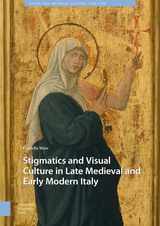 Stigmatics and Visual Culture in Late Medieval and Early Modern Italy
Cordelia Warr
Amsterdam University Press, 2022 This book places the discourse surrounding stigmata within the visual culture of the late medieval and early modern periods, with a particular focus on Italy and on female stigmatics. Echoing, and to a certain extent recreating, the wounds and pain inflicted on Christ during his passion, stigmata stimulated controversy. Related to this were issues that were deeply rooted in contemporary visual culture such as how stigmata were described and performed and whether, or how, it was legitimate to represent stigmata in visual art. Because of the contested nature of stigmata and because stigmata did not always manifest in the same form - sometimes invisible, sometimes visible only periodically, sometimes miraculous, and sometimes self-inflicted - they provoked complex questions and reflections relating to the nature and purpose of visual representation.
Dr Cordelia Warr is Senior Lecturer in Art History, University of Manchester, UK.
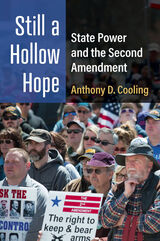 Still a Hollow Hope: State Power and the Second Amendment
Anthony D. Cooling
University of Michigan Press, 2022 The U.S. Supreme Court increasingly matters in American political life when those across the political spectrum look at the Court for relief from policies they oppose and as another venue for advancing their own policy agendas. However, the evidence is mounting, to include this book in a big way, that courts are more of a sideshow to the culture war. While court decisions, especially Supreme Court decisions, do have importance, the decisions emanating from the Court reflect social, cultural, and political change that occurred long prior to their decision ever being made.
This book tests how much political and social change has been made primarily through Gerald Rosenberg’s framework from his seminal work, The Hollow Hope: Can Courts Bring About Social Change, but it also utilizes Daniel Elazar’s Political Culture Theory to explain state level variations in political and social change. The findings indicate that while courts are not powerless institutions, reformers will not have success unless supported by the public and the elected branches, and most specifically, that preexisting state culture is a determining factor in the amount of change courts make. In short, federalism still matters.
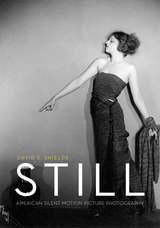 Still: American Silent Motion Picture Photography
David S. Shields
University of Chicago Press, 2013 The success of movies like The Artist and Hugo recreated the wonder and magic of silent film for modern audiences, many of whom might never have experienced a movie without sound. But while the American silent movie was one of the most significant popular art forms of the modern age, it is also one that is largely lost to us, as more than eighty percent of silent films have disappeared, the victims of age, disaster, and neglect. We now know about many of these cinematic masterpieces only from the collections of still portraits and production photographs that were originally created for publicity and reference. Capturing the beauty, horror, and moodiness of silent motion pictures, these images are remarkable pieces of art in their own right. In the first history of still camera work generated by the American silent motion picture industry, David S. Shields chronicles the evolution of silent film aesthetics, glamour, and publicity, and provides unparalleled insight into this influential body of popular imagery. Exploring the work of over sixty camera artists, Still recovers the stories of the photographers who descended on early Hollywood and the stars and starlets who sat for them between 1908 and 1928. Focusing on the most culturally influential types of photographs—the performer portrait and the scene still—Shields follows photographers such as Albert Witzel and W. F. Seely as they devised the poses that newspapers and magazines would bring to Americans, who mimicked the sultry stares and dangerous glances of silent stars. He uncovers scene shots of unprecedented splendor—visions that would ignite the popular imagination. And he details how still photographs changed the film industry, whose growing preoccupation with artistry in imagery caused directors and stars to hire celebrated stage photographers and transformed cameramen into bankable names. Reproducing over one hundred and fifty of these gorgeous black-and-white photographs, Still brings to life an entire long-lost visual culture that a century later still has the power to enchant.
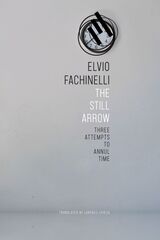 The Still Arrow: Three Attempts to Annul Time
Elvio Fachinelli
Seagull Books, 2021 Elvio Fachinelli (1928–1989) was a leading Italian psychoanalyst whose clinical, theoretical, and activist work resonated well beyond his discipline. In The Still Arrow, Fachinelli launches an interdisciplinary investigation ranging from anthropology to politics, and from the history of religions to the critique of ideology.
Originally published in 1979, this book displays Fachinelli’s eclectic methodology. The Still Arrow goes against Freud’s attempt in Totem and Taboo to equate individual psycho-libidinal predicaments with those of whole societies. Yet, it argues that the difference between the two always remains one of degree, not of principle. The vexing problem of their relation is approached through an interrogation of time. From a psychoanalytic standpoint, individual obsessional neurosis is firmly connected to a repudiation of death. But, Fachinelli argues, comparable temporal strategies are also present at the group level, in disparate social and historical contexts, for instance, in the archaic transformation of the dead into ancestors and in what he names 'the fascist phenomenon'.
From this perspective, history is not just the sum of all possible histories but also of impossible ones. Fachinelli delineates an innovative knowledge of time which brings together apparently distant events into a characteristic series. This first English translation of a book by Fachinelli, The Still Arrow introduces a major critical European voice to the larger readership.
 Still City: Poems
Oksana Maksymchuk
University of Pittsburgh Press, 2024 The poems in Oksana Maksymchuk's debut English-language collection meditate on the changing sense of reality, temporality, mortality, and intimacy in the face of a catastrophic event. While some of the poems were composed in the months preceding the full-scale invasion of the poet's homeland, others emerged in its wake. Navigating between a chronicle, a chorus, and a collage, Still City reflects the lived experiences of liminality, offering different perspectives on the war and its aftermath. The collection engages a wide range of sources, including social media posts, the news reports, witness accounts, recorded oral histories, photographs, drone video footage, intercepted communication, and official documents, making sense of the transformations that war affects in individuals, families, and communities. Now ecstatic, now cathartic, these poems shine a light on survival, mourning, and hope through moments of terror and awe.
 Still Connected: Family and Friends in America Since 1970
Claude S. Fischer
Russell Sage Foundation, 2011 National news reports periodically proclaim that American life is lonelier than ever, and new books on the subject with titles like Bowling Alone generate considerable anxiety about the declining quality of Americans' social ties. Still Connected challenges such concerns by asking a simple yet significant question: have Americans' bonds with family and friends changed since the 1970s, and, if so, how? Noted sociologist Claude Fischer examines long-term trends in family ties and friendships and paints an insightful and ultimately reassuring portrait of Americans' personal relationships. Still Connected analyzes forty years of survey research to address whether and how Americans' personal ties have changed—their involvement with relatives, the number of friends they have and their contacts with those friends, the amount of practical and emotional support they are able to count on, and how emotionally tied they feel to these relationships. The book shows that Americans today have fewer relatives than they did forty years ago and that formal gatherings have declined over the decades—at least partially as a result of later marriages and more women in the work force. Yet neither the overall quantity of personal relationships nor, more importantly, the quality of those relationships has diminished. Americans' contact with relatives and friends, as well as their feelings of emotional connectedness, has changed relatively little since the 1970s. Although Americans are marrying later and single people feel lonely, few Americans report being socially isolated and the percentage who do has not really increased. Fischer maintains that this constancy testifies to the value Americans place on family and friends and to their willingness to adapt to changing circumstances in ways that sustain their social connections. For example, children now often have schedules as busy as their parents. Yet today's parents spend more quality time with their children than parents did forty years ago—although less in the form of organized home activities and more in the form of accompanying them to play dates or sports activities. And those family meals at home that seem to be disappearing? While survey research shows that families dine at home together less often, it also shows that they dine out together more often. Americans are fascinated by the quality of their relationships with family and friends and whether these bonds fray or remain stable over time. With so many voices heralding the demise of personal relationships, it's no wonder that confusion on this topic abounds. An engrossing and accessible social history, Still Connected brings a much-needed note of clarity to the discussion. Americans' personal ties, this book assures us, remain strong.
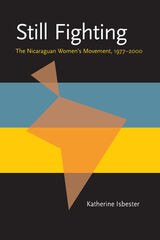 Still Fighting
Katherine Isbester
University of Pittsburgh Press, 2001 The story of the women’s movement in Nicaragua is a fascinating tale of resistance, strategy, and faith. From its birth in 1977 under the Somoza dictatorship through the Sandinista revolution to the fall of the Chamorro government, the Nicaraguan women’s movement has navigated revolutionary upheaval, profound changes in government, and rapidly shifting definitions of women’s roles in society. Through it all, the movement has surged, regressed, and persevered, entering the twenty-first century a powerful and influential force, stretching from the grassroots to the national level.
How did women in an economically underdeveloped Central American country, with little history of organizing, feminism, or democracy, succeed in creating networks, organizations, and campaigns that carved out a gender identity and challenged dominant ideologies (both revolutionary and conservative)? In Still Fighting, Katherine Isbester seeks to understand. She analyzes the complex and rich case of Nicaragua in order to learn more about the dynamics of social movements in general and women’s organizing in particular.
Social movement theory offers Isbester an analytic tool to explain the extraordinary evolution of the Nicaraguan movement. She theorizes that a sustainable movement is composed of three elements: a focused goal, a mobilization of resources, and an identity. The lack of any one of these weakens a social movement. Isbester shows how this theory is borne out by the experience of the Nicaraguan women’s movement over the past thirty years. She demonstrates, for example, how the revolutionary government of the 1980s co-opted the women’s movement, crippling its ability to create an autonomous identity, choose it own goals, and mobilize resources independent of the state. Hence, it lost legitimacy, membership, and influence. She traces the movement’s resurgence in the 1990s, the result of its redefinition as an autonomous movement organized around an identity of care.
Still Fighting combines social theory with field research, leading a new wave of scholarship on women in Latin America. Isbester interviewed more than a hundred key participants in the women’s movement, in addition to members of the National Assembly, male leaders of other social movements, and women outside the movement. In Nicaragua, she was witness to much political organizing, enabling her to reveal the organic intricacy, as well as the historical path, of a social movement.
Still Fighting will be an important book for a broad range of students and professionals in the areas of social movements, social change, gender, politics, and Latin America.
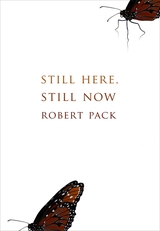 Still Here, Still Now
Robert Pack
University of Chicago Press, 2008 Robert Pack is one of America’s most eminent nature poets, and his virtuoso talents are on glorious display in Still Here, Still Now, his nineteenth volume of verse. With styles ranging from lyric to narrative, and themes stretching from biblical concerns to meditations on contemporary science, Pack’s poetry is composed in strongly rhythmic cadences and a diction that is direct and accessible. In four different sections of thematically and stylistically divergent verse, Still Here, Still Now delivers many of the elements of Pack’s poetry readers have come to admire and expect—both the humorous and the elegiac.
The first section of the book contains traditional lyrics that celebrate family ties and seek consolations for the passing of personal and evolutionary time. The poems in this group address a named or unnamed auditor in a voice of intimate engagement. Featuring the most narrative selections in the book, the second section consists of fable-like stories, rich with innuendo and implication. The characters in these poems make choices that press against the events and circumstances that challenge and define them. Embodying what Harold Bloom has called Pack’s “courage to surmount suffering,” the poems of the third section are largely devoted to biblical themes and philosophical speculations on the meaning of happiness and the uses of suffering. Here, Pack’s empathy for the human condition as well as his forebodings about the prospect of human survival are on poignant display. The final section of the book turns to Pack's abiding interest in landscape and the ways in which the place one inhabits contains and animates our individual lives.
Ripe with many years, Pack remains a vital presence in American letters. Still Here, Still Now is an affecting and graceful addition to the oeuvre of a poet whose compelling and distinct voice will continue to resonate among his loyal readers.
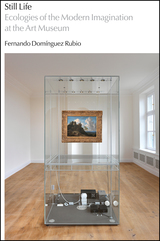 Still Life: Ecologies of the Modern Imagination at the Art Museum
Fernando Domínguez Rubio
University of Chicago Press, 2020 How do you keep the cracks in Starry Night from spreading? How do you prevent artworks made of hugs or candies from disappearing? How do you render a fading photograph eternal—or should you attempt it at all? These are some of the questions that conservators, curators, registrars, and exhibition designers dealing with contemporary art face on a daily basis. In Still Life, Fernando Domínguez Rubio delves into one of the most important museums of the world, the Museum of Modern Art (MoMA) in New York, to explore the day-to-day dilemmas that museum workers face when the immortal artworks that we see in the exhibition room reveal themselves to be slowly unfolding disasters.
Still Life offers a fascinating and detailed ethnographic account of what it takes to prevent these disasters from happening. Going behind the scenes at MoMA, Domínguez Rubio provides a rare view of the vast technological apparatus—from climatic infrastructures and storage facilities, to conservation labs and machine rooms—and teams of workers—from conservators and engineers to guards and couriers—who fight to hold artworks still.
As MoMA reopens after a massive expansion and rearranging of its space and collections, Still Life not only offers a much-needed account of the spaces, actors, and forms of labor traditionally left out of the main narratives of art, but it also offers a timely meditation on how far we, as a society, are willing to go to keep the things we value from disappearing into oblivion.
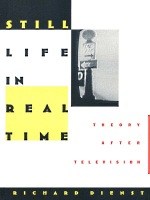 Still Life in Real Time: Theory After Television
Richard Dienst
Duke University Press, 1994 Television can be imagined in a number of ways: as a profuse flow of images, as a machine that produces new social relationships, as the last lingering gasp of Western metaphysical thinking, as a stuttering relay system of almost anonymous messages, as a fantastic construction of time. Richard Dienst engages each of these possibilities as he explores the challenge television has posed for contemporary theories of culture, technology, and media.
Five theoretical projects provide Still Life in Real Time with its framework: the cultural studies tradition of Raymond Williams; Marxist political economy; Heideggerian existentialism; Derridean deconstruction; and a Deleuzian anatomy of images. Drawing lessons from television programs like Twin Peaks and Crime Story, television events like the Gulf War, and television personalities like Madonna, Dienst produces a remarkable range of insights on the character of the medium and on the theories that have been affected by it.
From the earliest theorists who viewed television as a new metaphor for a global whole, a liberal technology empty of ideological or any other content, through those who saw it as a tool for consumption, making time a commodity, to those who sense television’s threat to being and its intimate relation to power, Dienst exposes the rich pattern of television’s influence on philosophy, and hence on the deepest levels of contemporary experience.
A book of theory, Still Life in Real Time will compel the attention of all those with an interest in the nature of the ever present, ever shifting medium and its role in the thinking that marks our time.
Still Life with Plums: Short Stories
Marie Manilla
West Virginia University Press, 2010 Still Life with Plums is a vibrant collection of short stories that weaves together the outwardly distant lives of several strangers. With heaping doses of dark humor and magical realism, these ten stories enliven a cast of characters carefully speckled throughout the southern portion of the United States. From West Virginians, to Texans and Latinos, Still Life with Plums circles the paths of a Black-Irish West Virginian, a wise-cracking dog groomer, an emasculated husband, a Guatemalan widow, a Japanese-Latin-American poster child from WWII, and a meticulous predator. Marie Manilla’s accessible prose is deceptively layered, as she births and wrestles this quirky ensemble that unflinchingly probes the human psyche, while affirming a concrete connection to a shared place and identity.
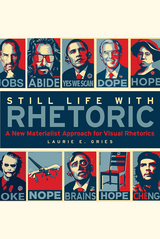 Still Life with Rhetoric: A New Materialist Approach for Visual Rhetorics
Laurie Gries
Utah State University Press, 2015 Winner of the 2016 CCCC Advancement of Knowledge Award and the 2016 CCCC Research Impact Award
In Still Life with Rhetoric, Laurie Gries forges connections among new materialism, actor network theory, and rhetoric to explore how images become rhetorically active in a digitally networked, global environment. Rather than study how an already-materialized “visual text” functions within a specific context, Gries investigates how images often circulate and transform across media, genre, and location at viral rates. A four-part case study of Shepard Fairey’s now iconic Obama Hope image elucidates how images reassemble collective life as they actualize in different versions, enter into various relations, and spark a firework of activity across the globe.
While intent on tracking the rhetorical life of a single, multiple image, Still Life with Rhetoric is most concerned with studying rhetoric in motion. To account for an image’s widespread circulation and emergent activities, Gries introduces iconographic tracking—a digital research method for tracing an image’s divergent rhetorical becomings. Yet Gries also articulates a dynamic set of theoretical principles for studying rhetoric as a distributed, generative, and unforeseeable event that is applicable beyond the study of visual rhetoric. With an eye toward futurity—the strands of time beyond a thing’s initial moment of production and delivery—Still Life with Rhetoric intends to be taken up by those interested in visual rhetoric, research methods, and theory.
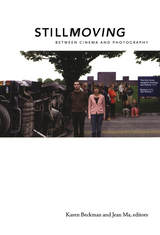 Still Moving: Between Cinema and Photography
Karen Beckman and Jean Ma, eds.
Duke University Press, 2008 In Still Moving noted artists, filmmakers, art historians, and film scholars explore the boundary between cinema and photography. The interconnectedness of the two media has emerged as a critical concern for scholars in the field of cinema studies responding to new media technologies, and for those in the field of art history confronting the ubiquity of film, video, and the projected image in contemporary art practice. Engaging still, moving, and ambiguous images from a wide range of geographical spaces and historical moments, the contributors to this volume address issues of indexicality, medium specificity, and hybridity as they examine how cinema and photography have developed and defined themselves through and against one another. Foregrounding the productive tension between stasis and motion, two terms inherent to cinema and to photography, the contributors trace the shifting contours of the encounter between still and moving images across the realms of narrative and avant-garde film, photography, and installation art. Still Moving suggests that art historians and film scholars must rethink their disciplinary objects and boundaries, and that the question of medium specificity is a necessarily interdisciplinary question. From a variety of perspectives, the contributors take up that challenge, offering new ways to think about what contemporary visual practice is and what it will become. Contributors: George Baker, Rebecca Baron, Karen Beckman, Raymond Bellour, Zoe Beloff,Timothy Corrigan, Nancy Davenport, Atom Egoyan, Rita Gonzalez, Tom Gunning, Louis Kaplan,
Jean Ma, Janet Sarbanes, Juan A. Suárez
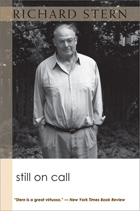 Still on Call
Richard Stern
University of Michigan Press, 2010 "Richard Stern is a literary treasure."
---Scott Turow "Stern's new miscellany reveals a literary mind of the first order, thinking in elegant prose about dozens of interesting subjects."
---Philip Roth "Stern is a great virtuoso. . . . [I]n an ailing literary culture, we should be grateful for a work like this and a career, too, spanning the American half-century."
---New York Times Book Review "Stern's skill gives vitality to everything he treats."
---Edmund White, Los Angeles Times "Like a gifted dancer in a small space, Stern has tremendous grace and ease on the page, executing dynamic turns and dips with a fine economy of motion and without sacrificing nuance."
---Booklist Still on Call is the sixth and final collection of critically acclaimed novelist and educator Richard Stern. "Orderly miscellany" is the author's term for this aggregation of reflections, essays, reviews, reportage, commentary, and observations on writing and fellow writers, life, and contemporary culture. The collection's three sections, Coasting, Posting, and Hosting, contain pieces that range from reflections on becoming a writer in the 1940s to assessments of such major writers and close colleagues as Saul Bellow, and Donald Justice to topical offerings from Stern's popular blog for the New Republic. This wide-ranging collection is intended as the culmination of sixty years of the writing life but, first and foremost, as provocative entertainment. Stern is a prolific writer, and this selection of some of his highest-quality writing both educates and enthralls. Richard Stern is the Helen A. Regenstein Emeritus Professor of English and of the Humanities at the University of Chicago and the author of nineteen works of fiction and nonfiction. His books include the novels A Father's Words and Golk, and, most recently, the collection What Is What Was. Stern has been the subject of two books: The Writings of Richard Stern: The Education of an Intellectual Everyman by David Garret Izzo and Richard Stern by James Schiffer.
Still Philadelphia
Fredric Miller
Temple University Press, 1983 This is a book about Philadelphia and about photography, but it is not the usual book about either. On one level, this is the pictorial story of a great industrial metropolis in transition. It is the story of a railroad city, a city of trolleys and subways and horse-drawn vehicles, as it gradually succumbed to the automobile. It is the story of a city filled with neighborhood industry giving way to suburbs, to commuter travel, and to a change in the very nature of work. It is the story of a city spreading out, expanding and doubling in population in fifty years. It is the story of urban exuberance and vitality where ethnic groups mixed and mingled, but it is also the story of slums and poverty, crime and conflict. A Philadelphia family album, filled with pictures of ordinary people, Still Philadelphia focuses on the city of immigrants and industry, not on the lives and houses of the wealthy.
 Still Points
Robert Gardner
Harvard University Press Still Points is a collection of remarkable and evocative still photographs taken by award-winning nonfiction filmmaker and author Robert Gardner during his anthropological and filming expeditions around the world. Thousands of his original photographic transparencies and negatives from the Kalahari Desert, New Guinea, Colombia, India, Ethiopia, Niger, and other remote locations are now housed in the Photographic Archives of Harvard’s Peabody Museum of Archaeology and Ethnology. This elegantly produced volume presents a curated selection of more than 70 color and black-and-white images made by Gardner between the 1950s and the 1980s. Edited by Adele Pressman, Gardner's wife and literary executor, and with a foreword by Eliot Weinberger, Still Points both honors an important and influential artist and reveals new dimensions in his work.
“There at the end of the endless cycles of time and the loops of film is stillness, and these still photos.”—From the foreword by Eliot Weinberger
Still Rainin' Still Dreamin': Hall Anderson's Ketchikan
Hall Anderson
University of Alaska Press, 2010 A staff photographer for the Ketchikan Daily News, Hall Anderson counted among his early influences photographers like Robert Frank and Henri Cartier-Bresson, who understood the visual bounty to be found in photographing the candid side of life. For more than twenty-five years, Anderson has brought this perspective to his photographic endeavors, both personal and professional, in the small town of Ketchikan in southeast Alaska. Still Rainin' Still Dreamin' showcasesone hundred of Anderson's prize-winning black-and-white images, which collectively chronicle three decades of life in Ketchikan, spanning its transition from a timber- and fishing-based economy to one built on a booming tourism industry. From timber carnivals to election coverage to Fourth of July parades, Still Rainin' Still Dreamin' is a poignant celebration of the uncanny juxtapositions found in everyday life.
|
|
